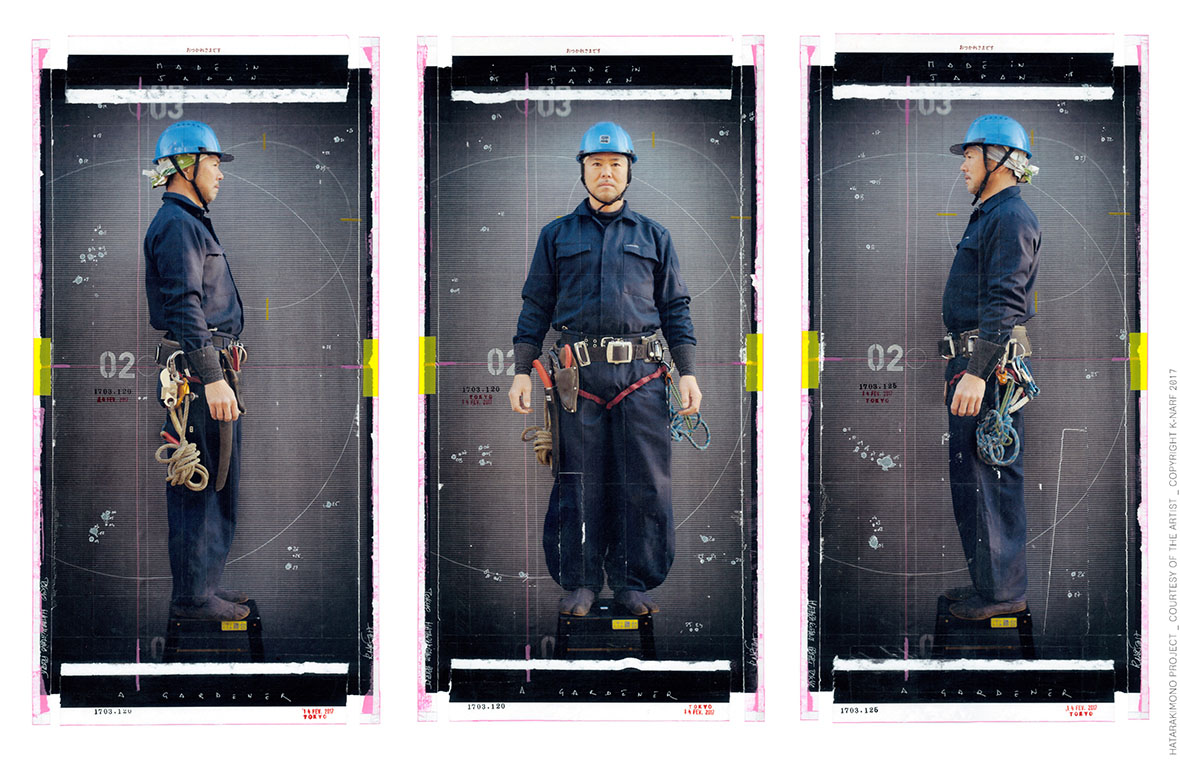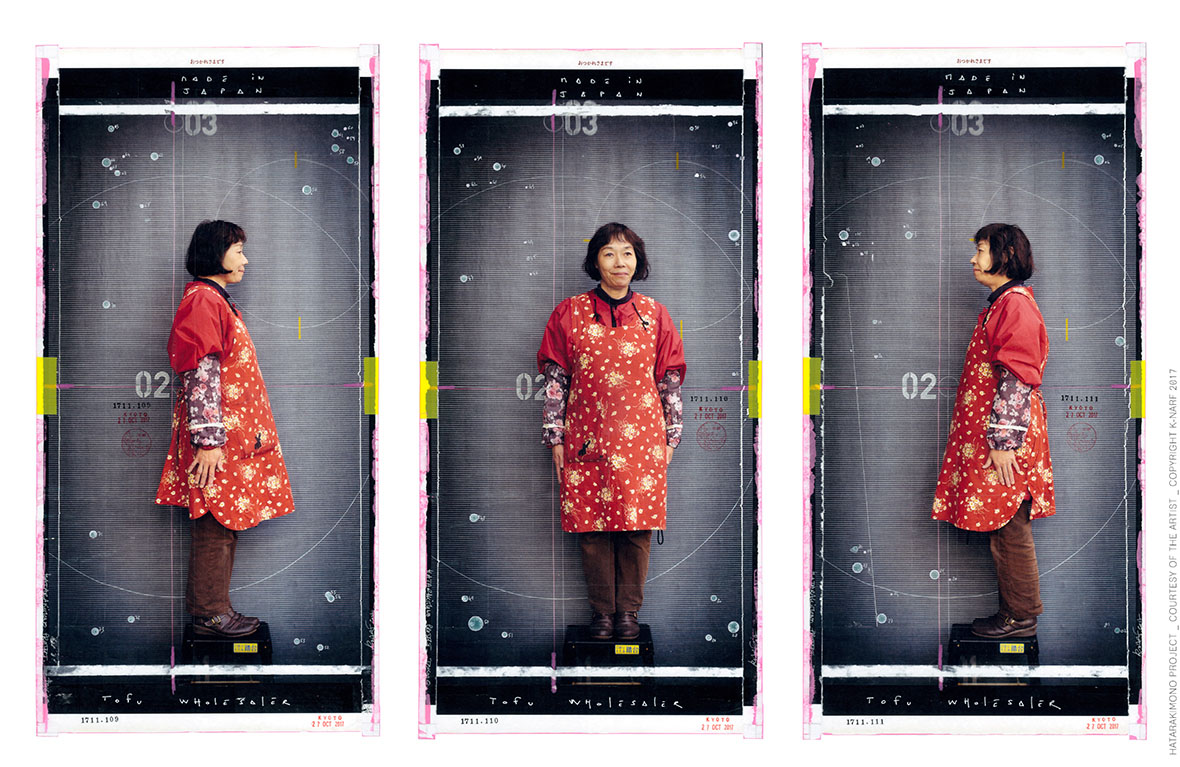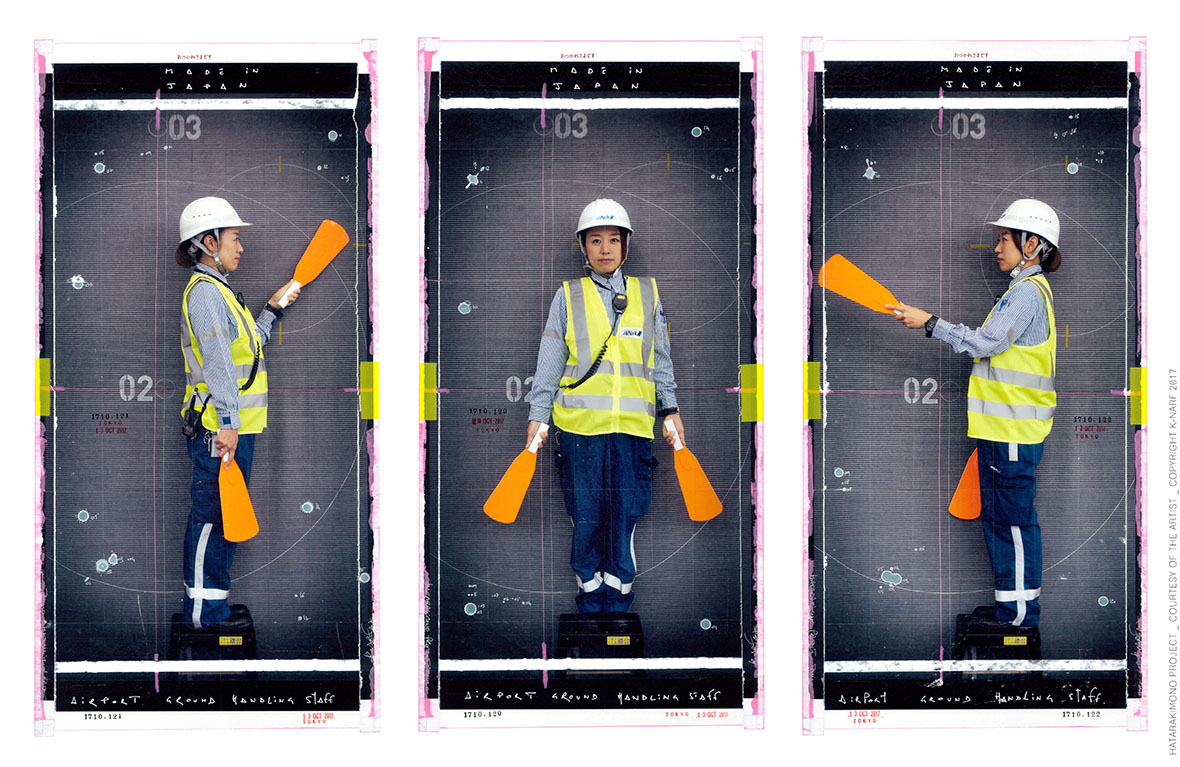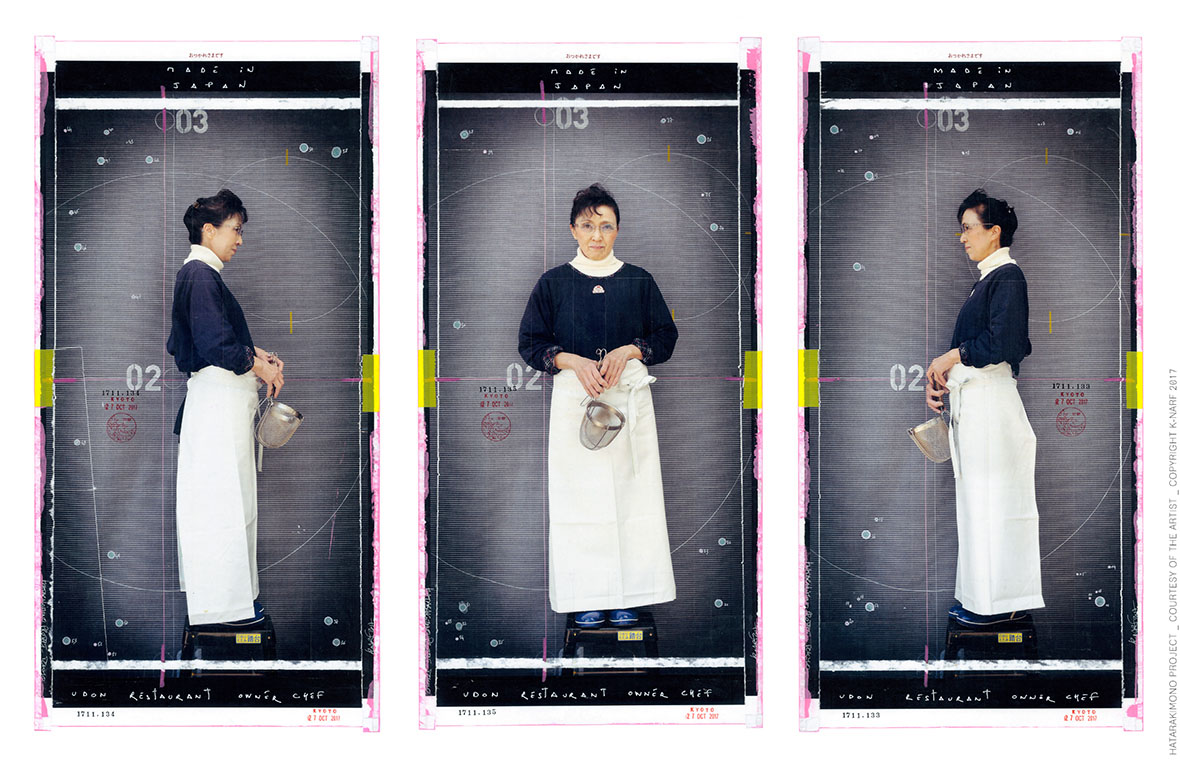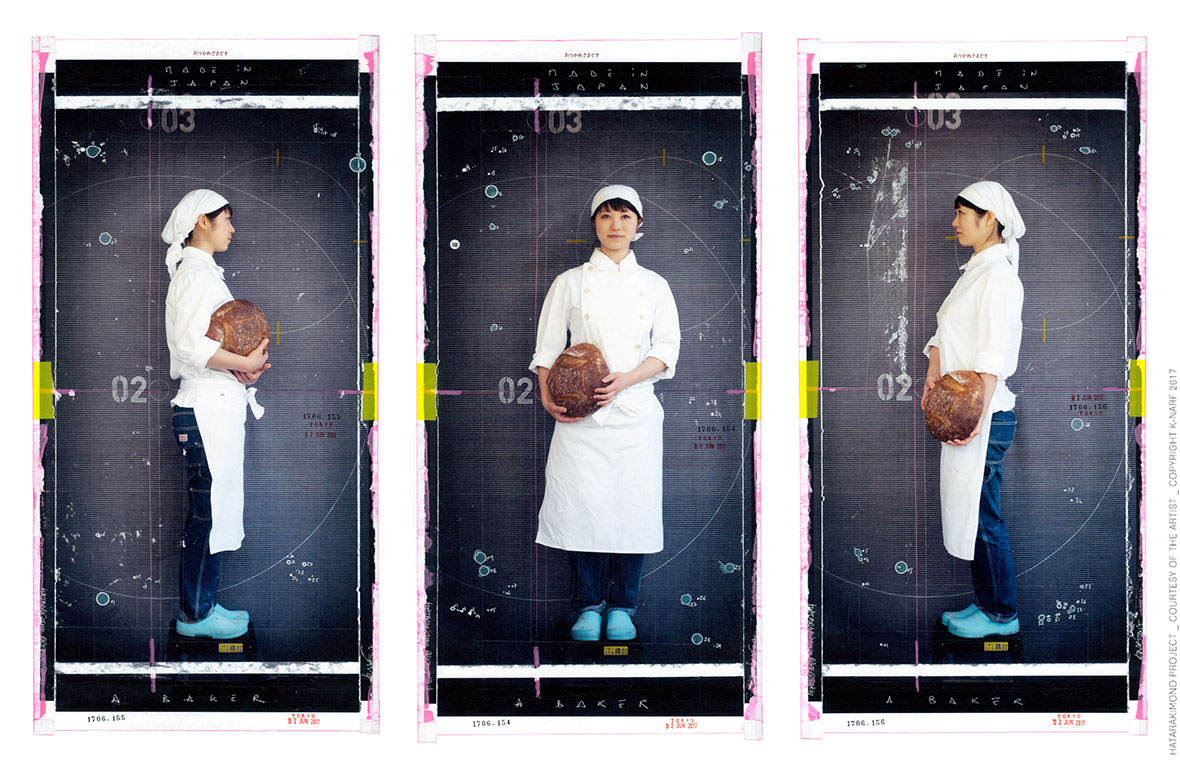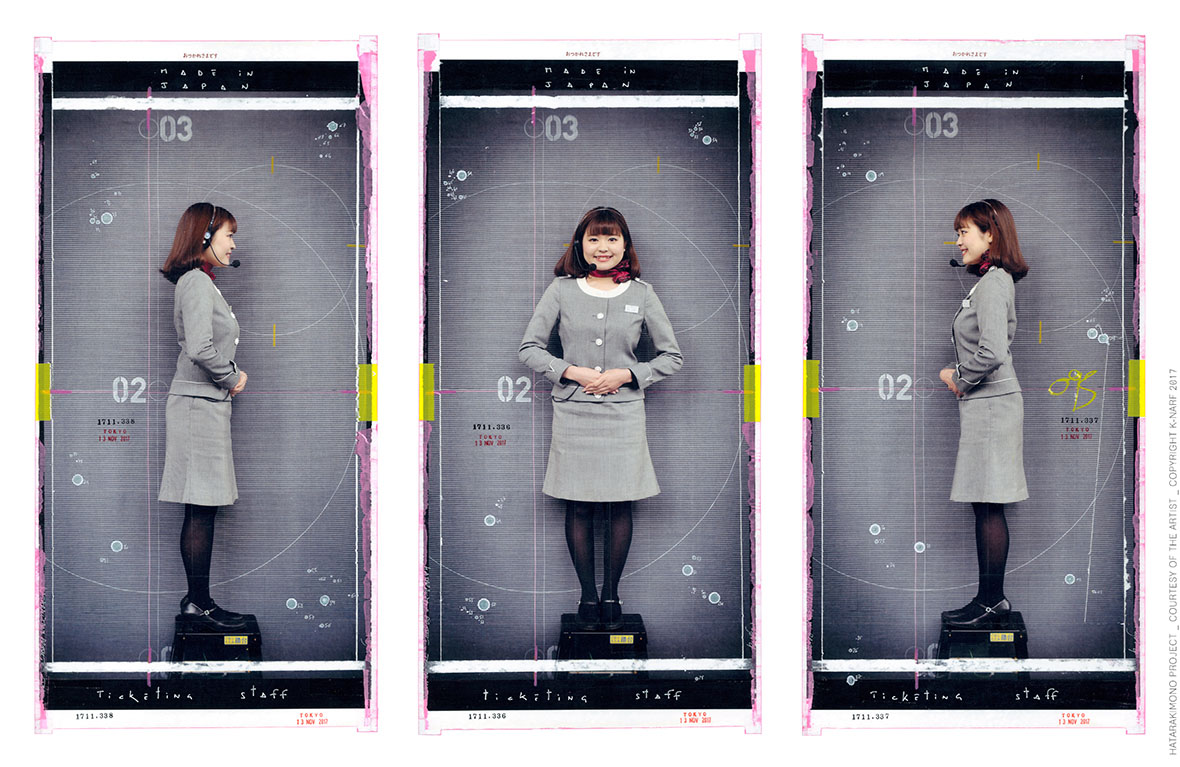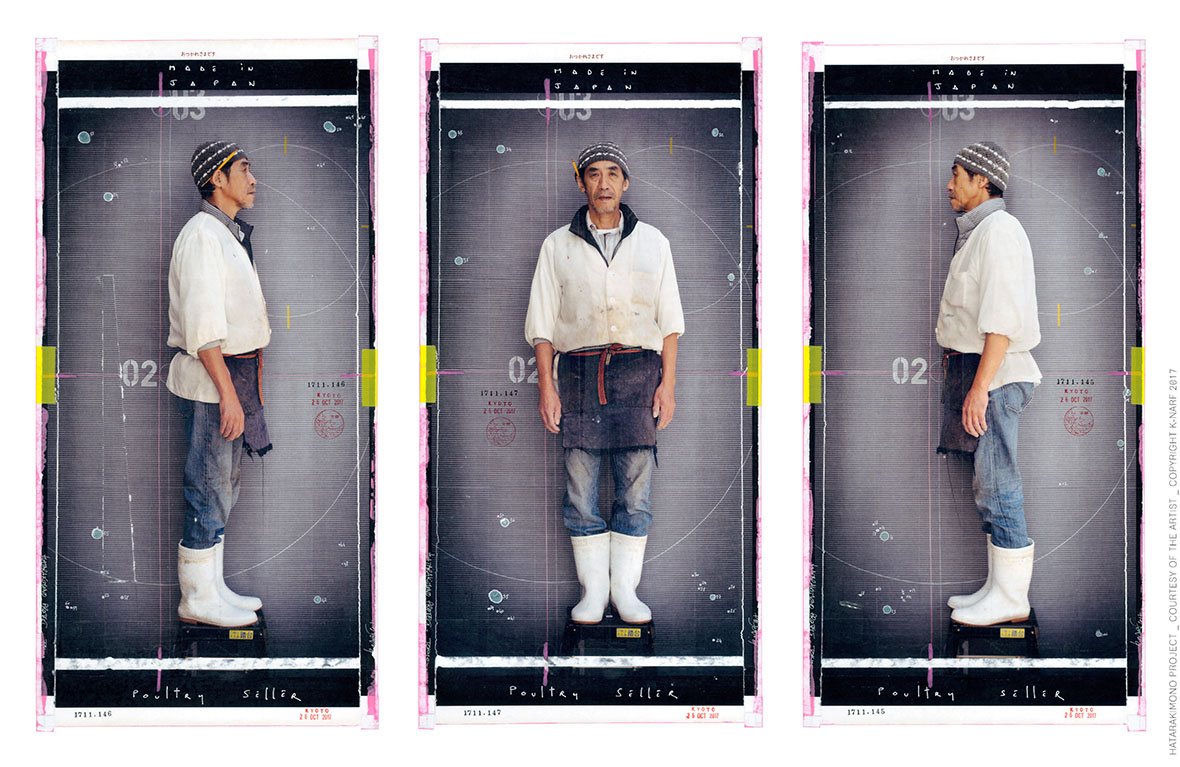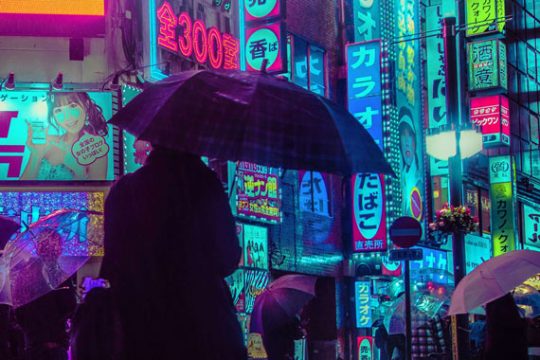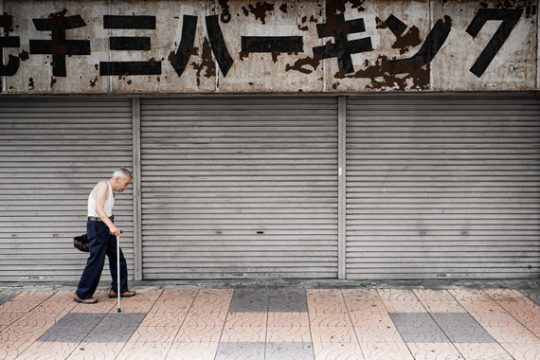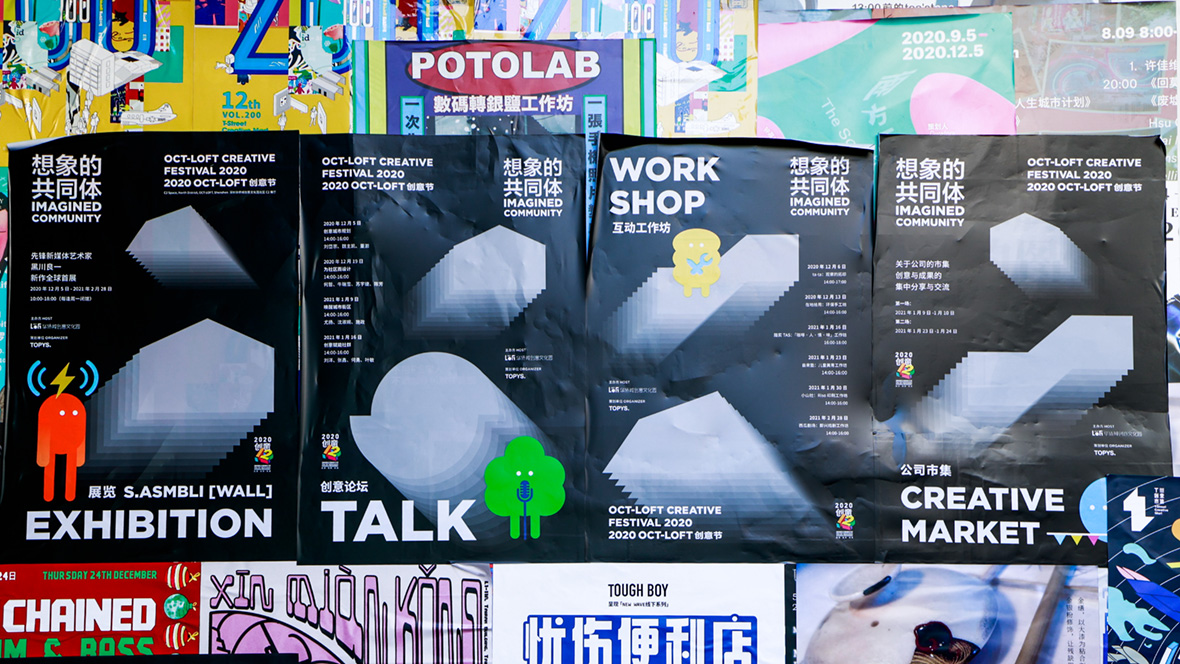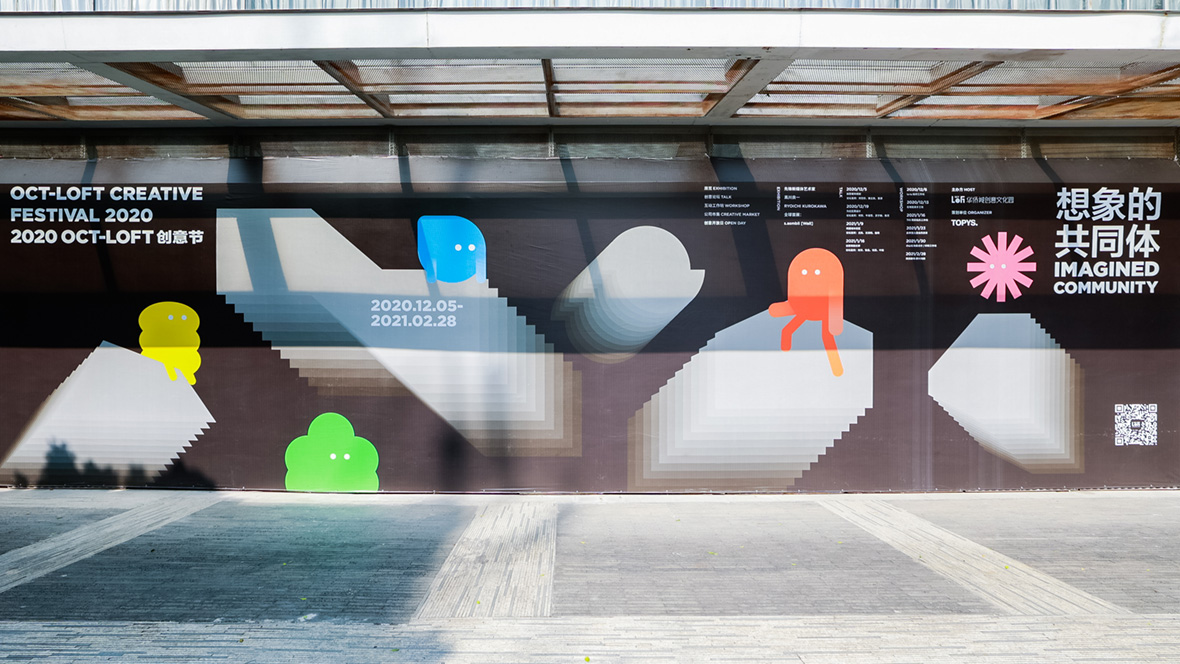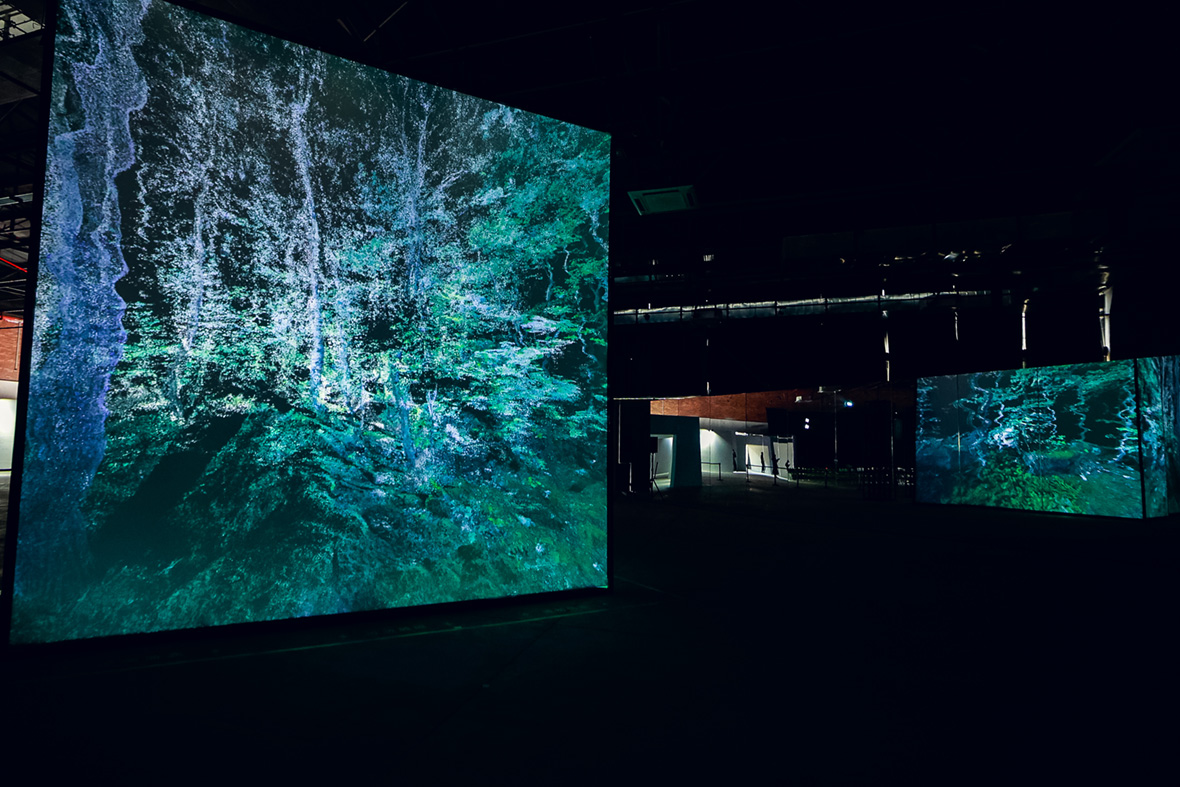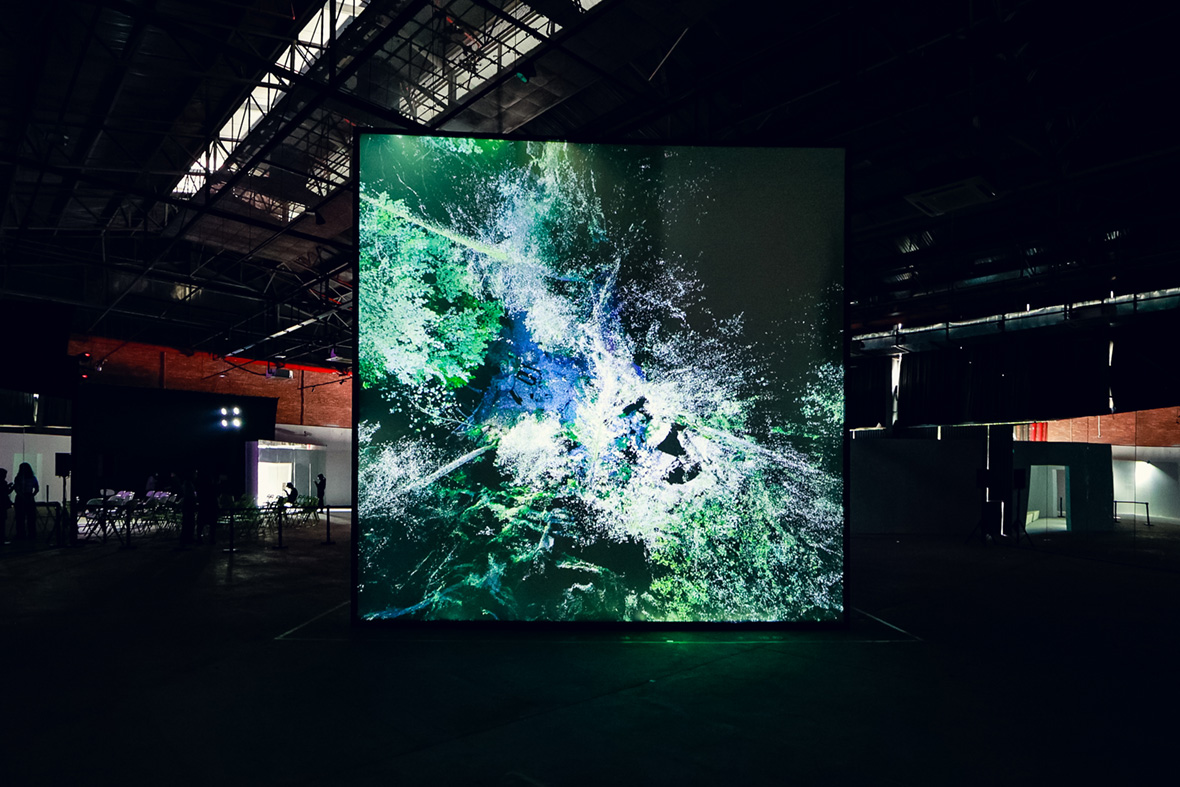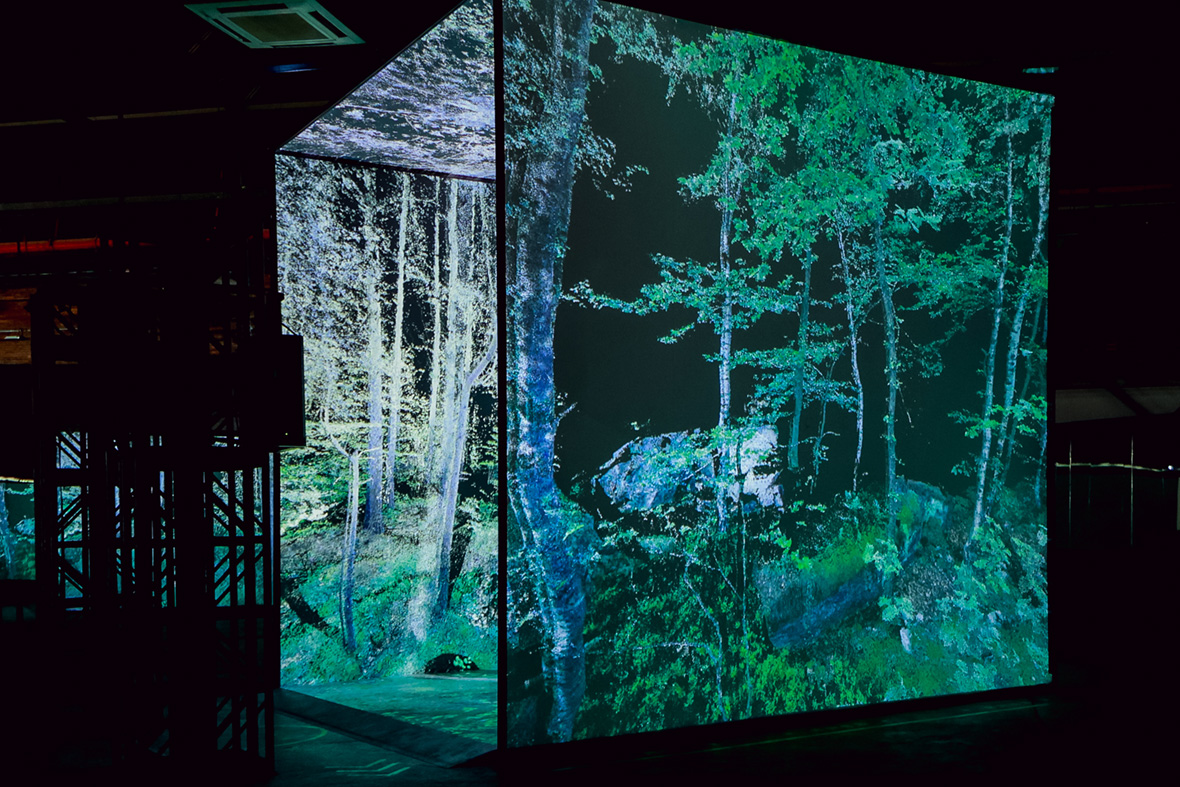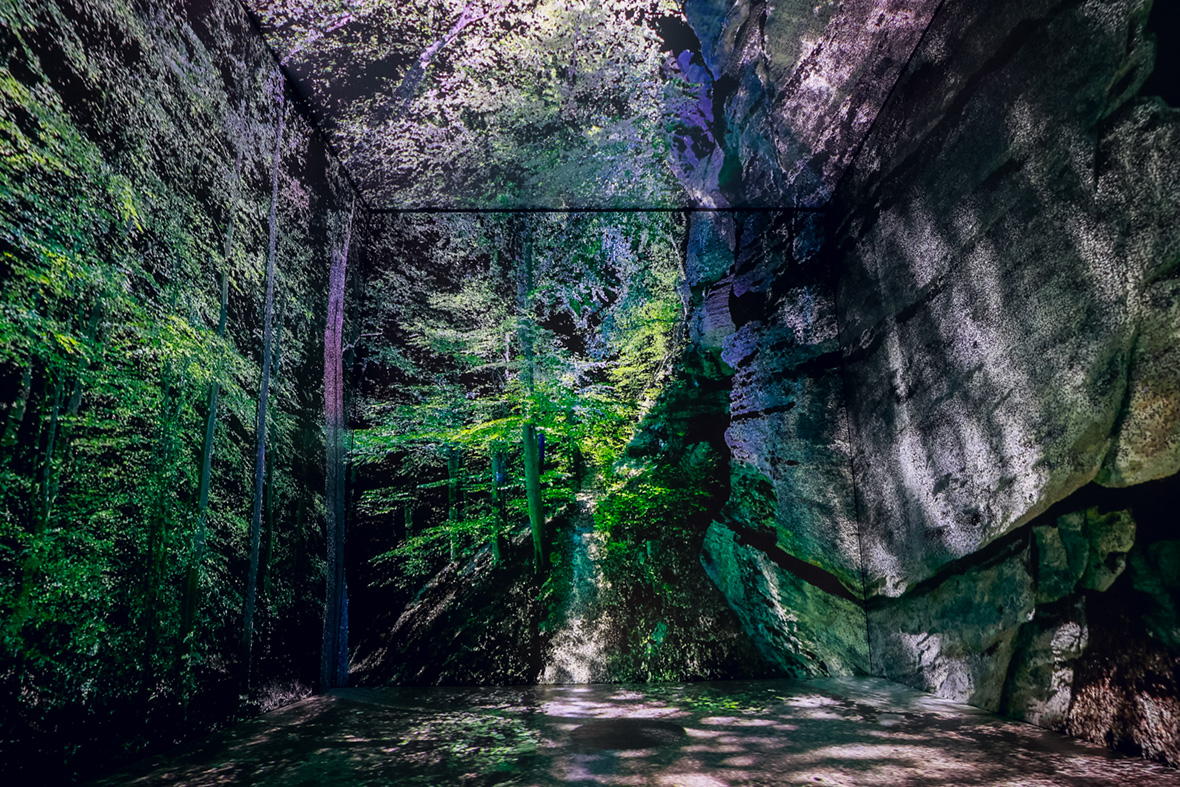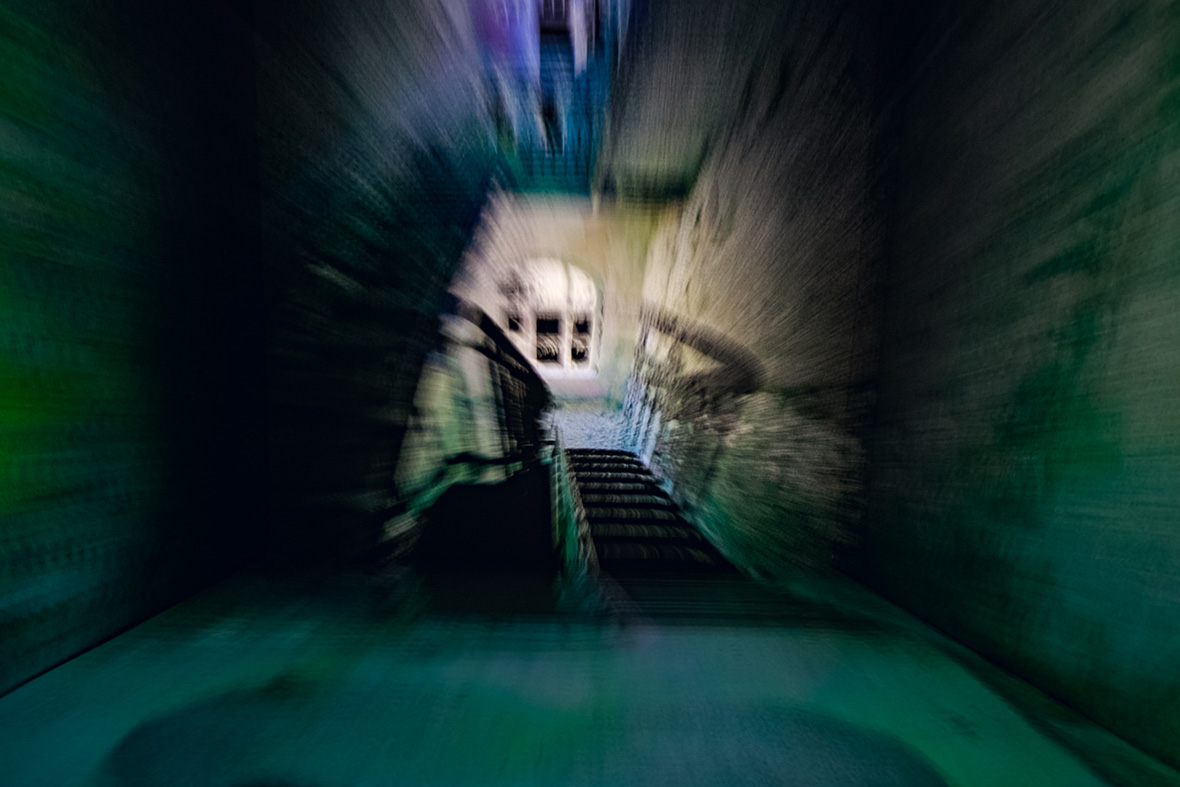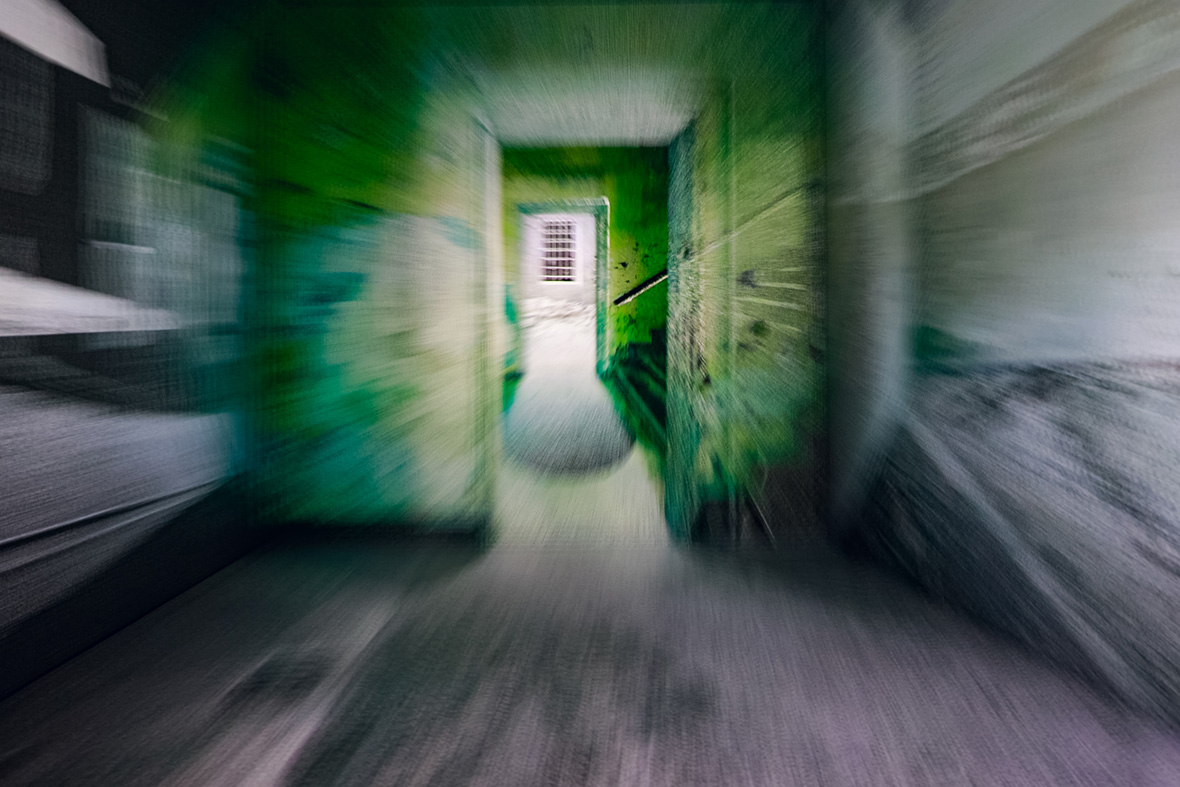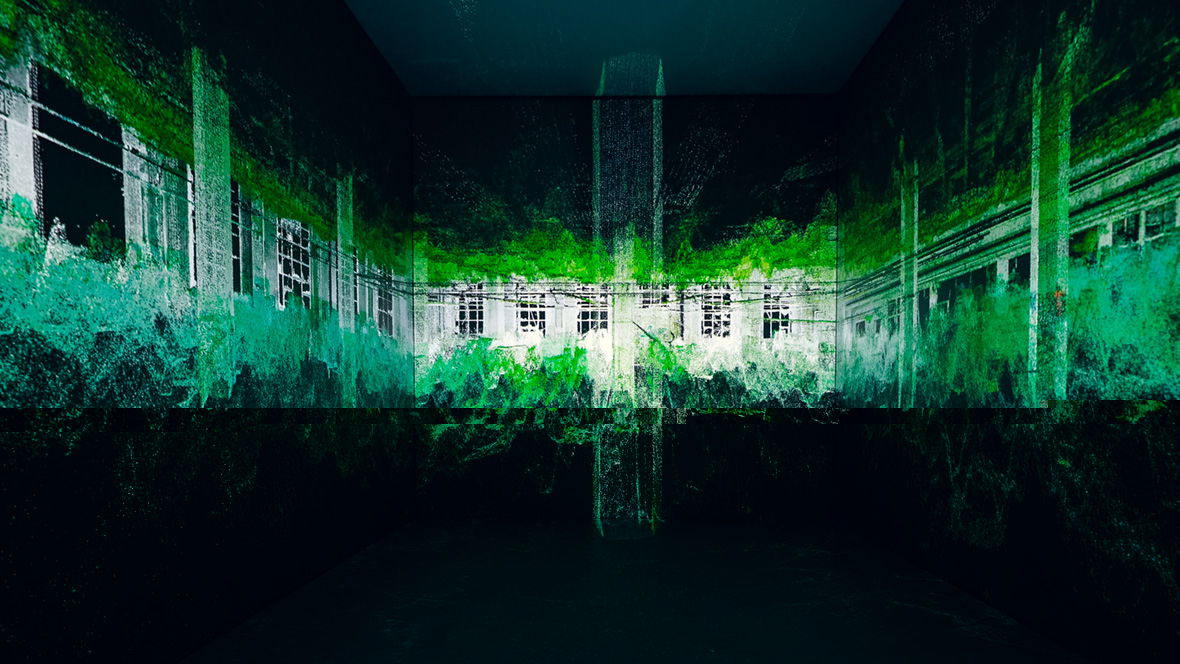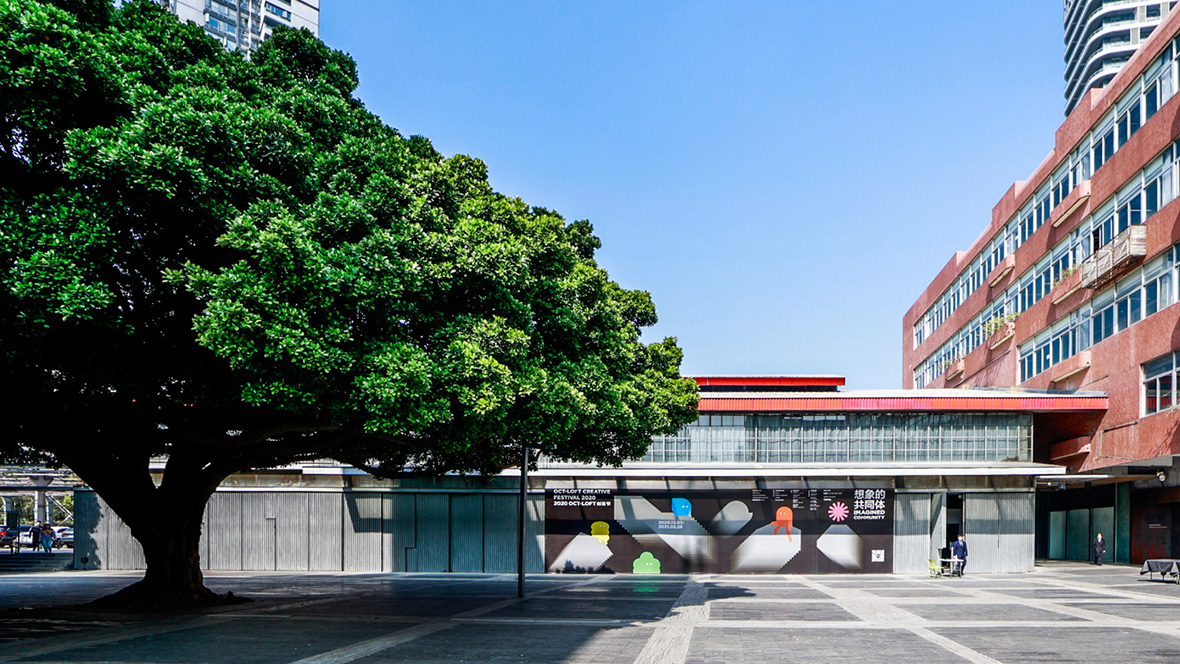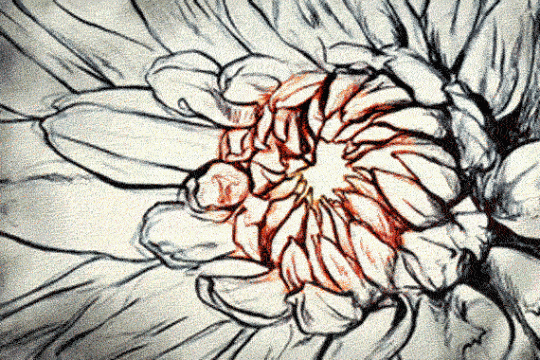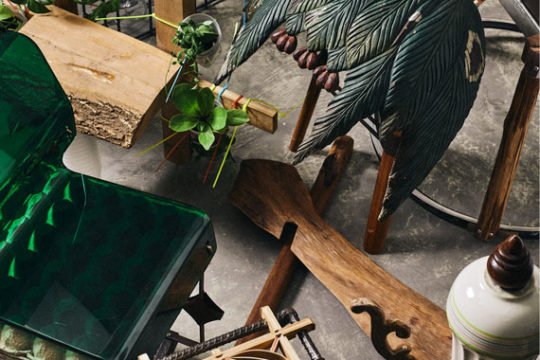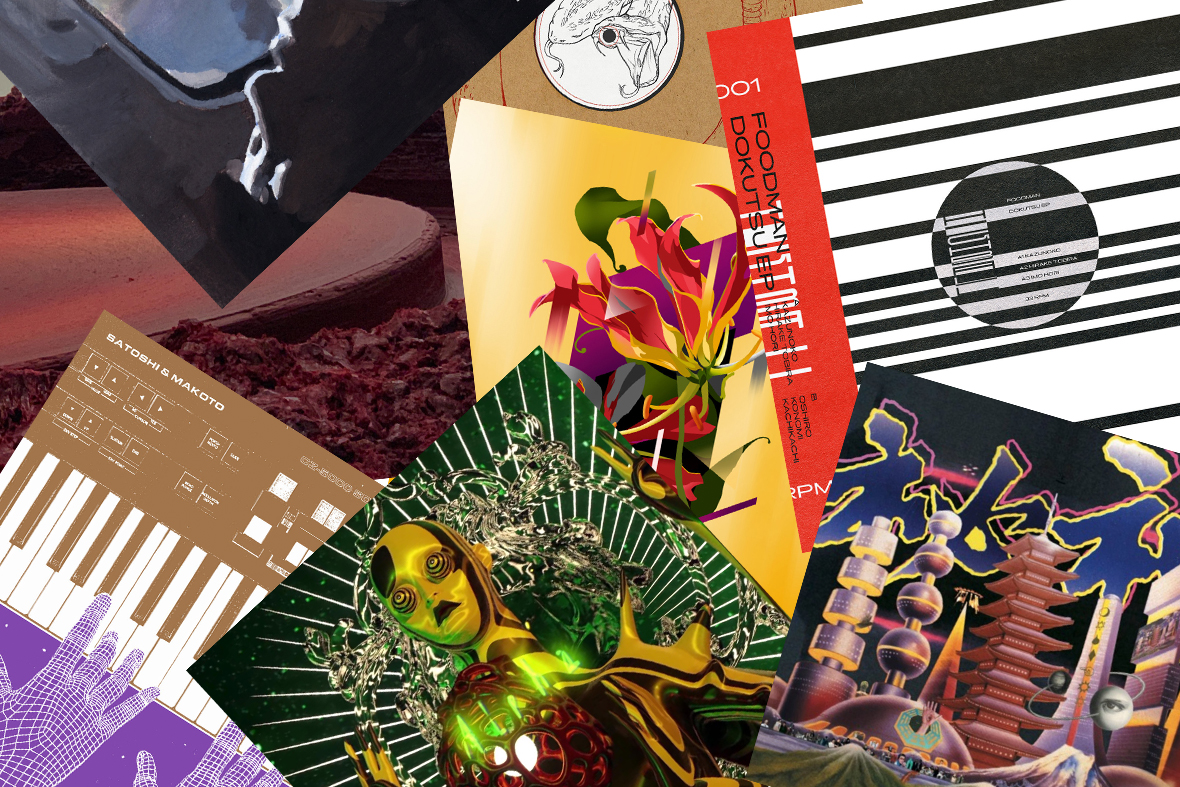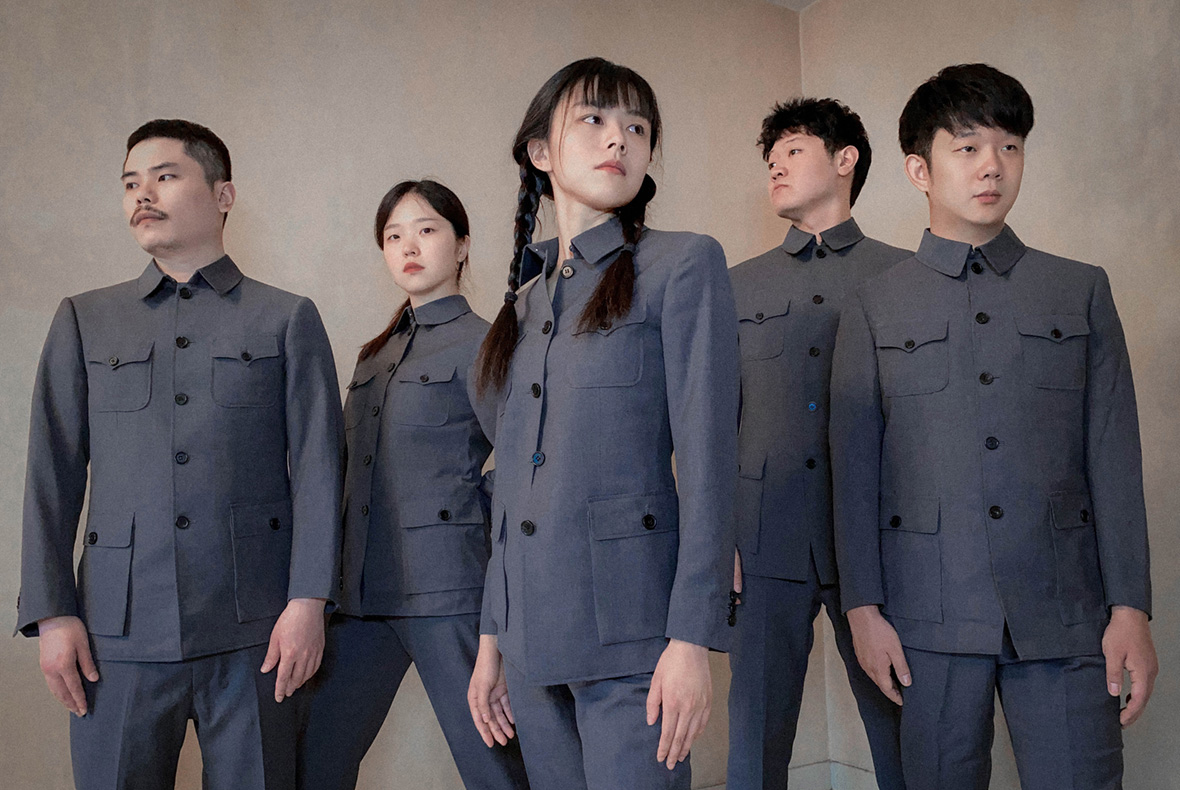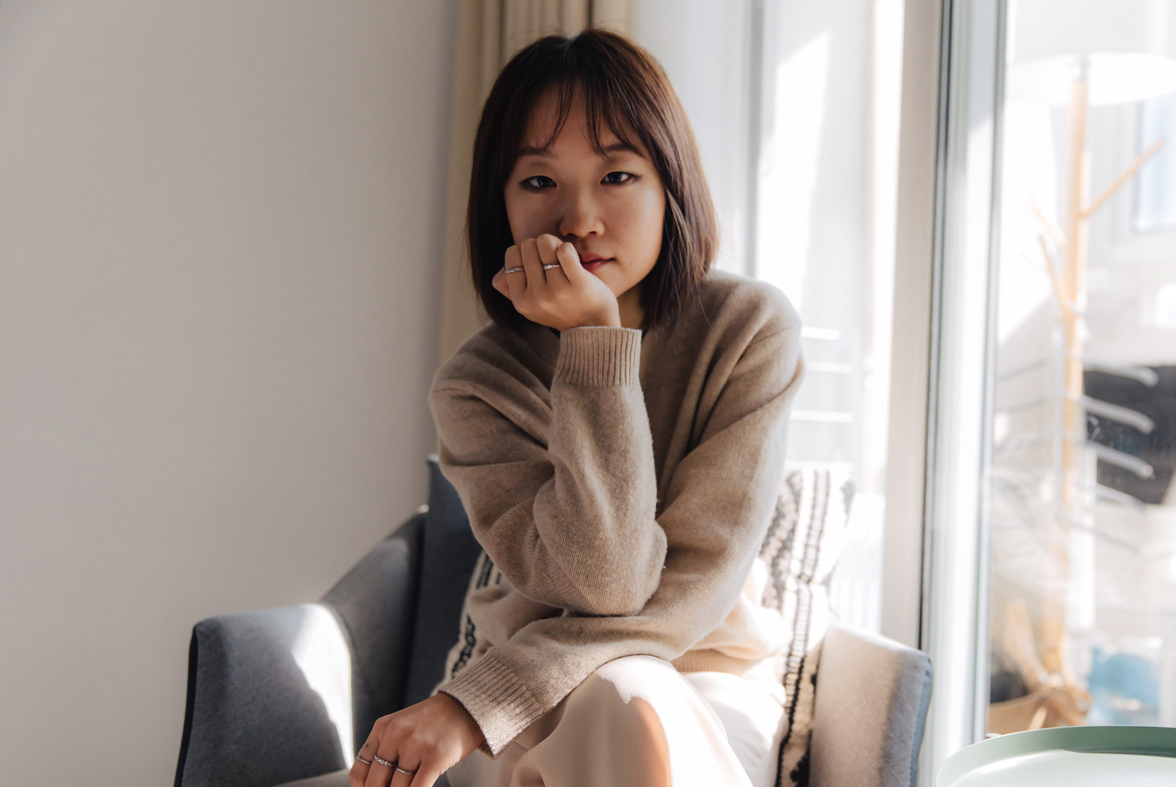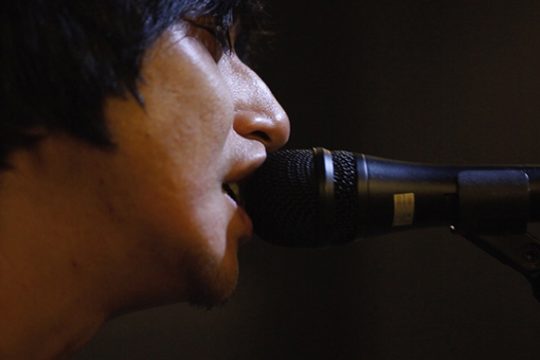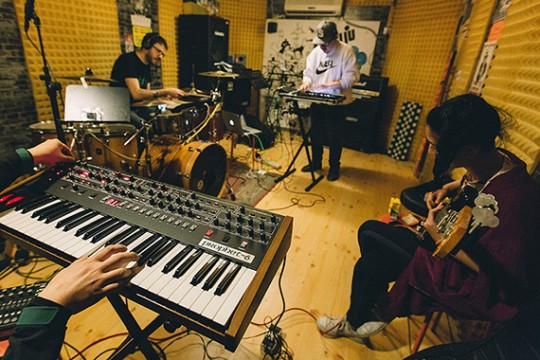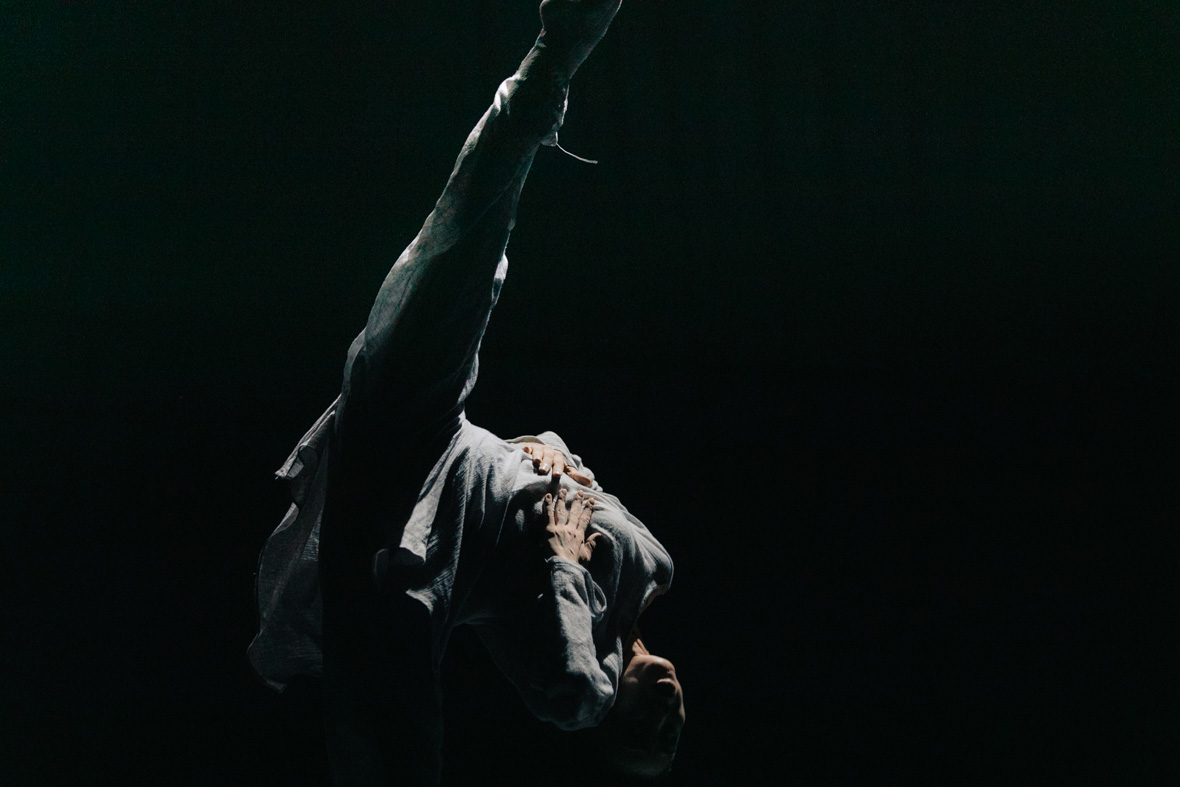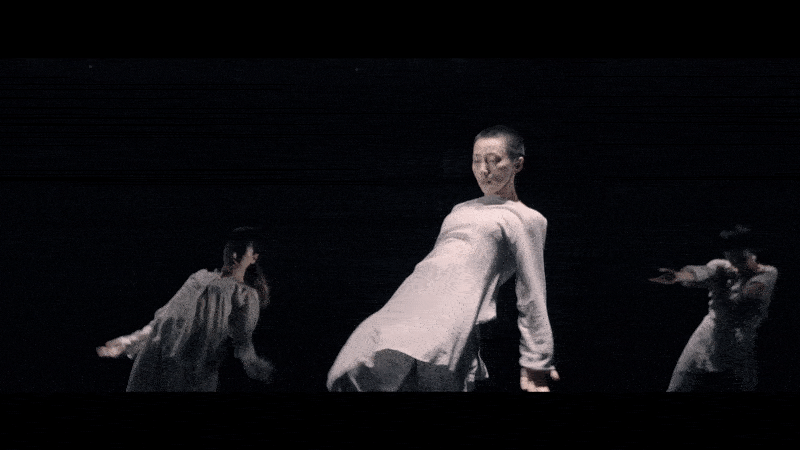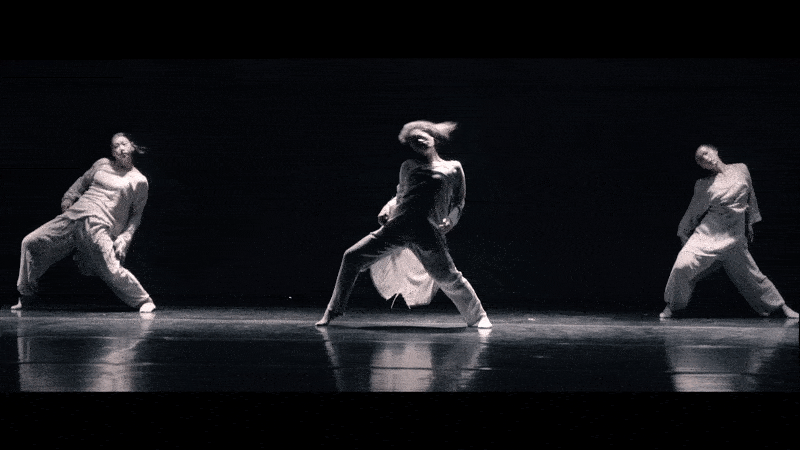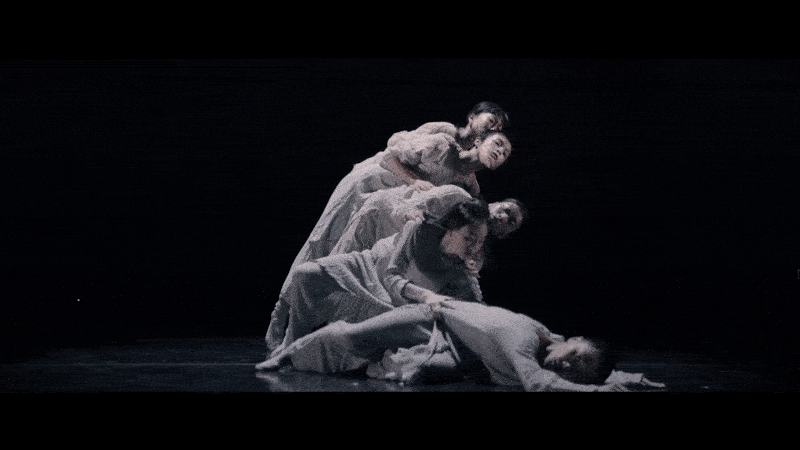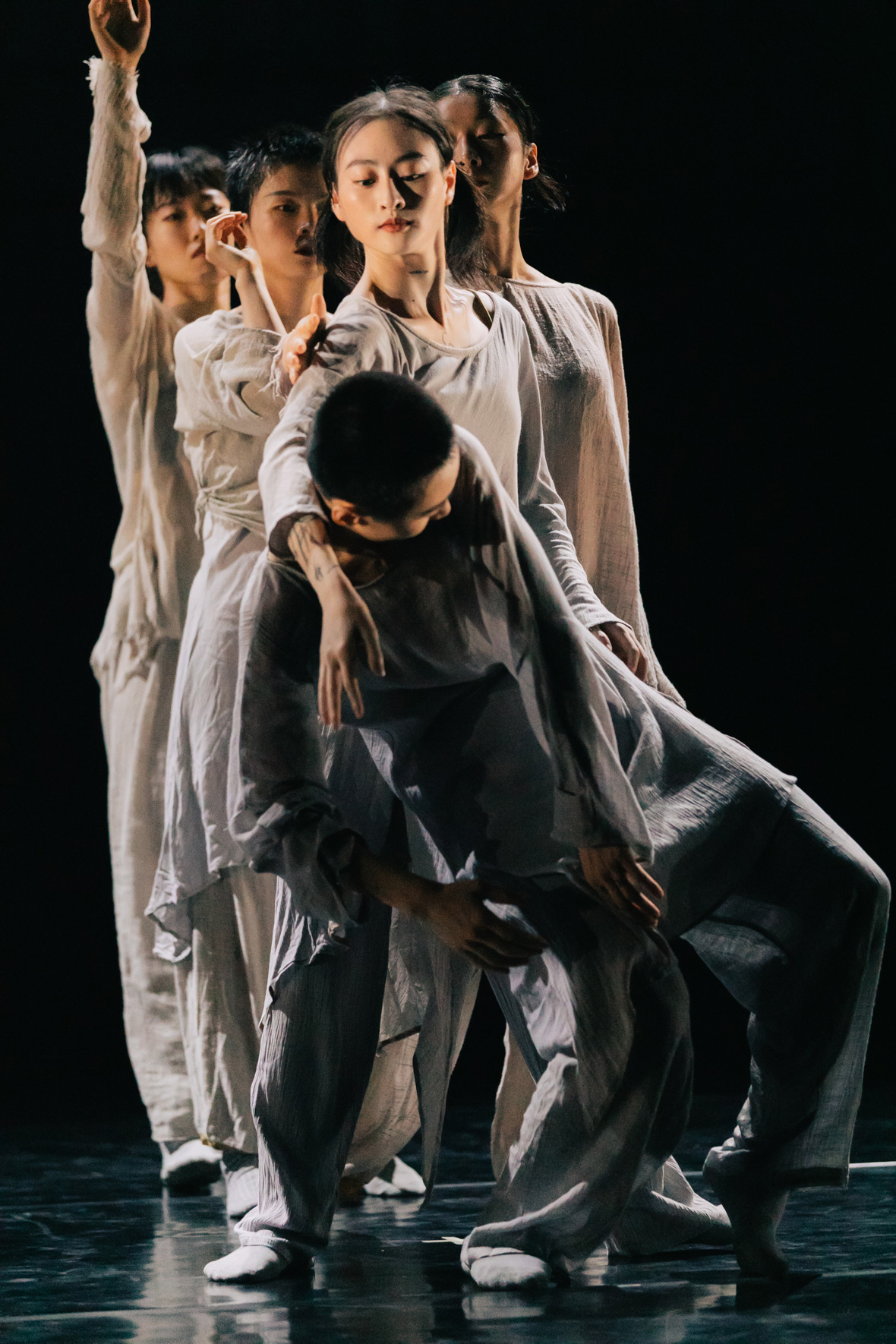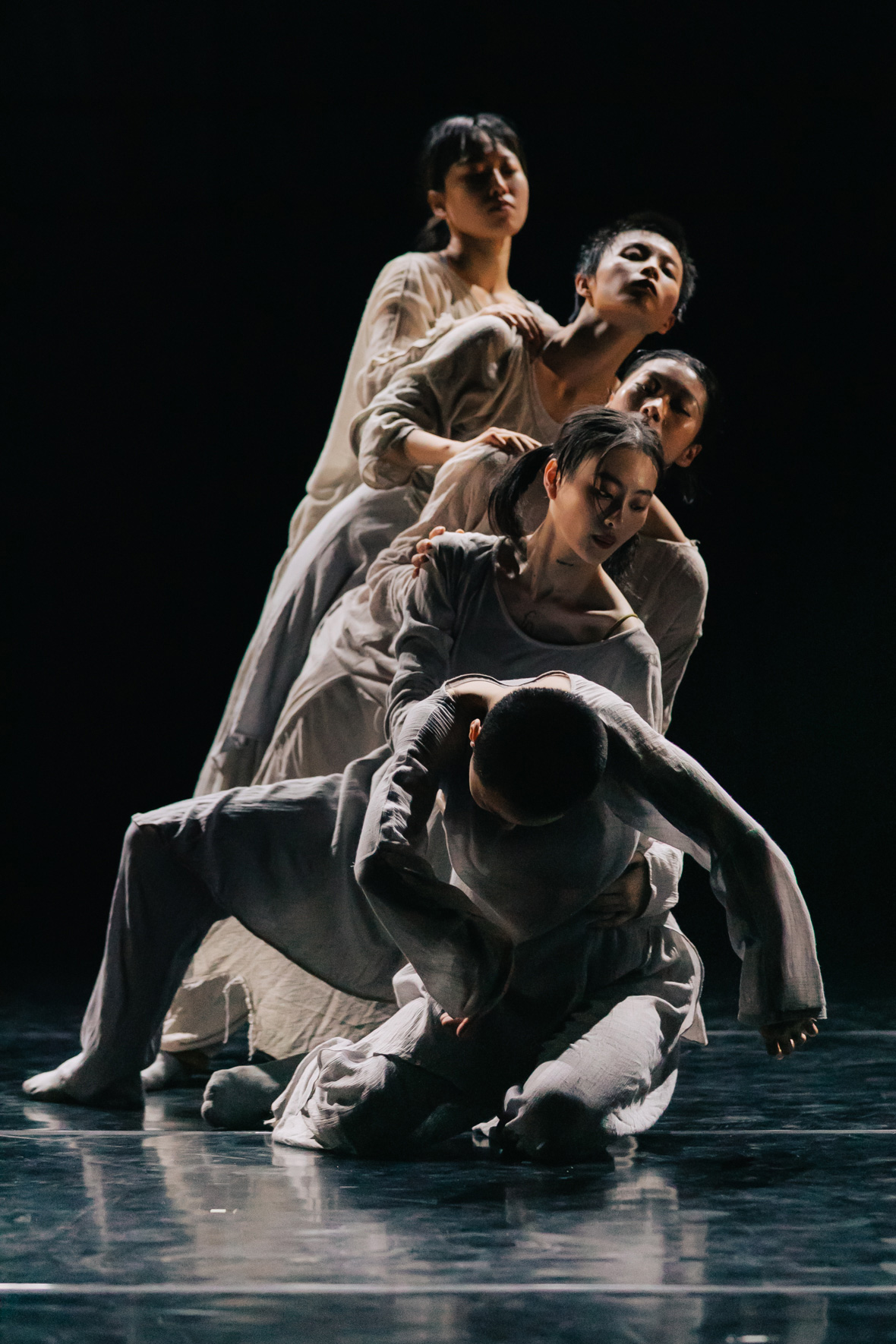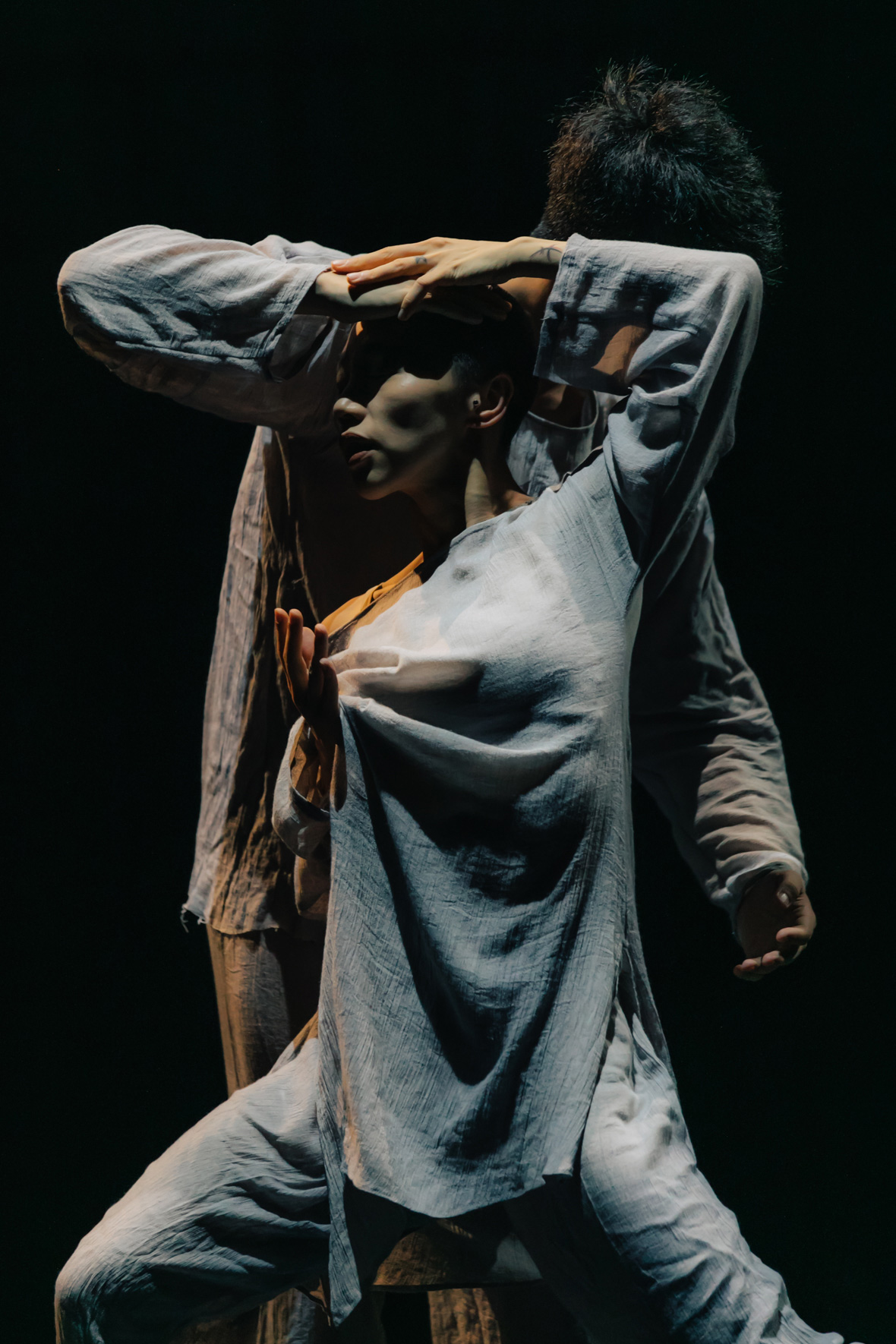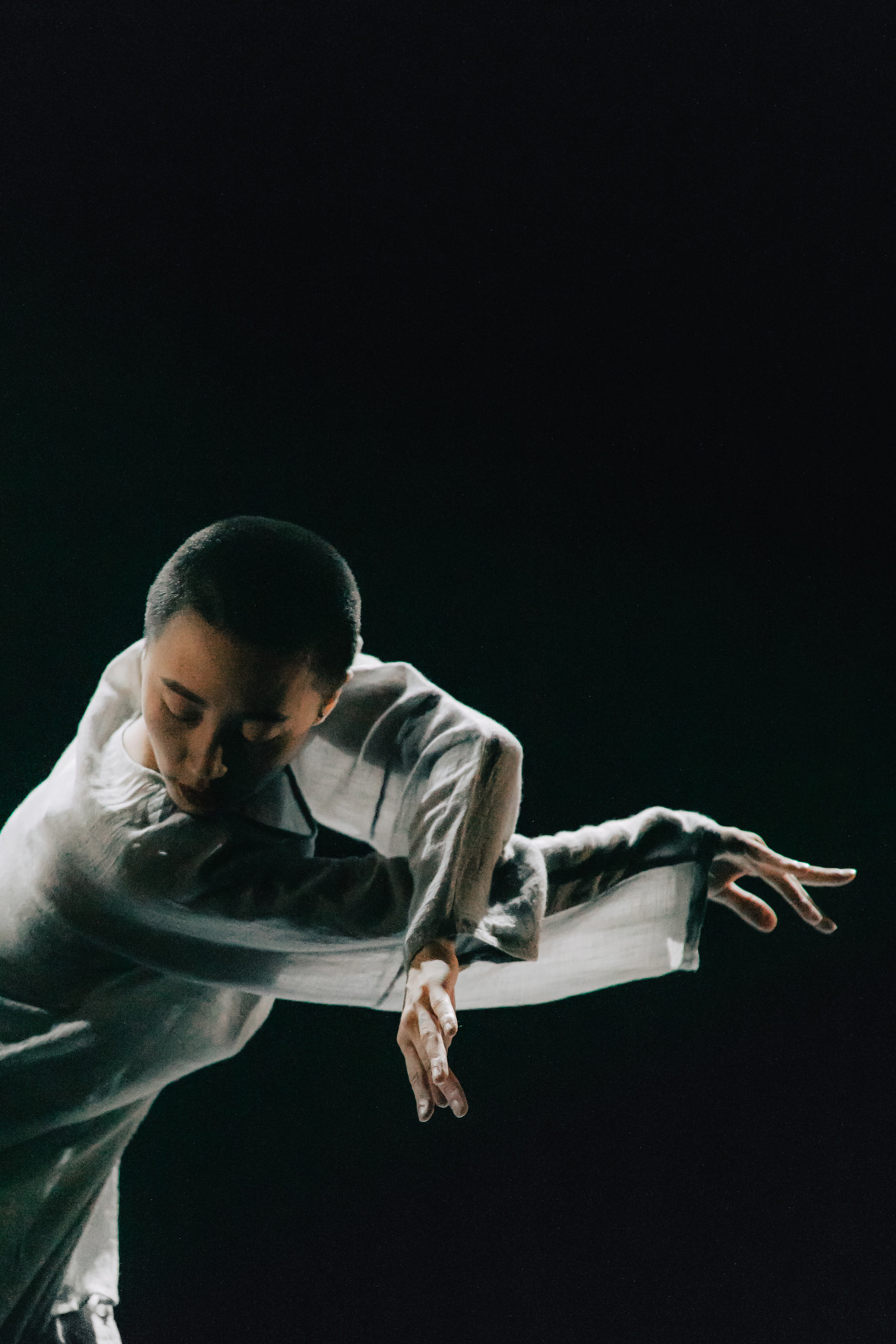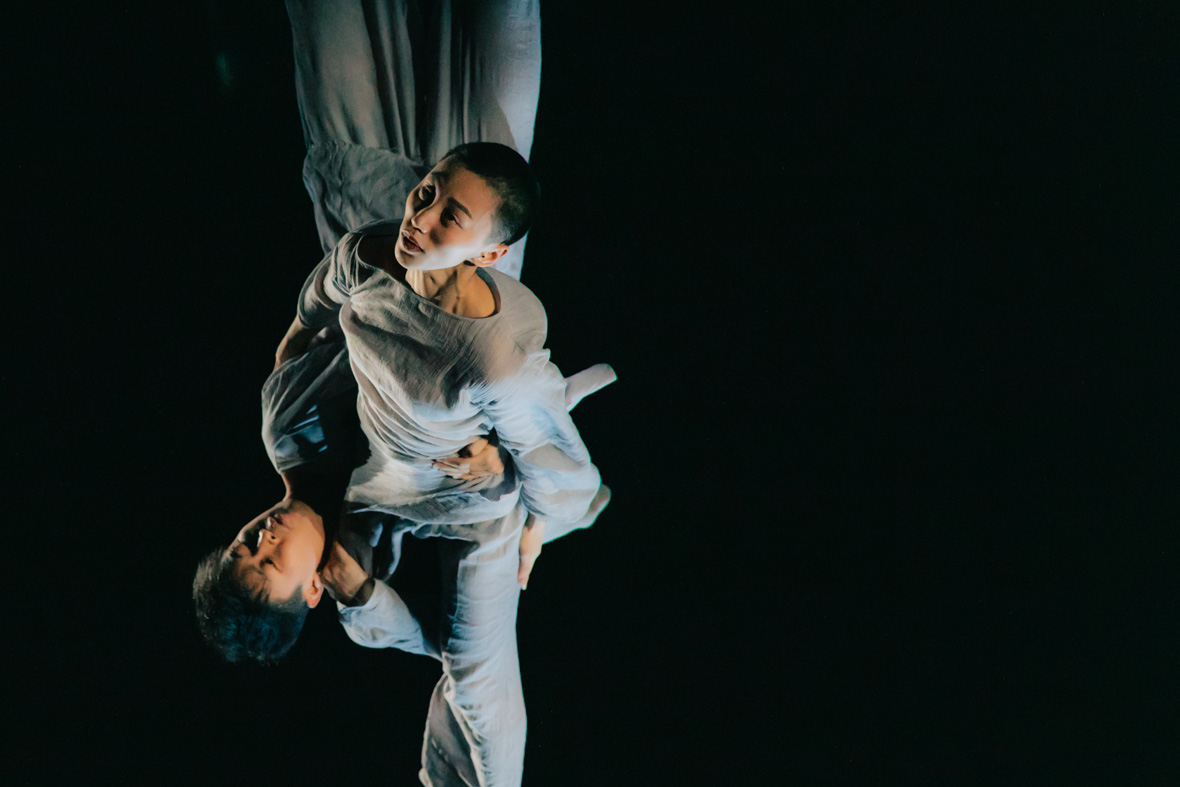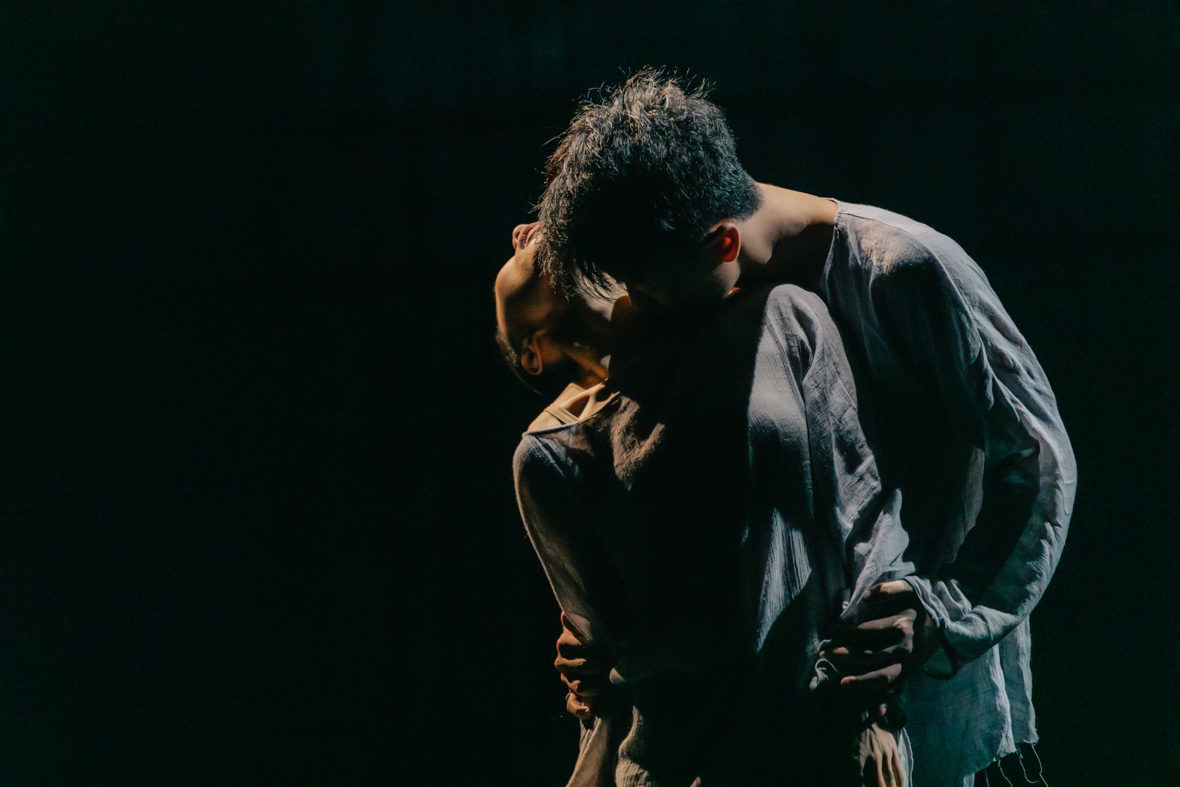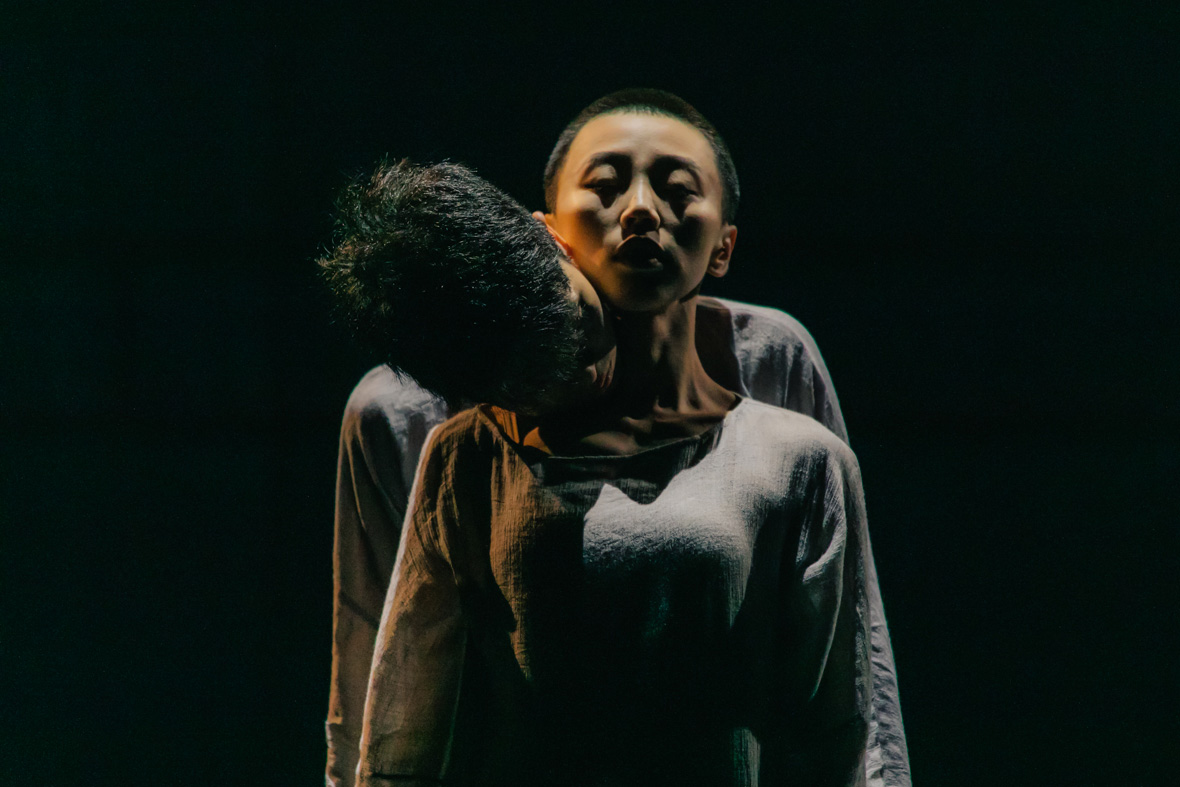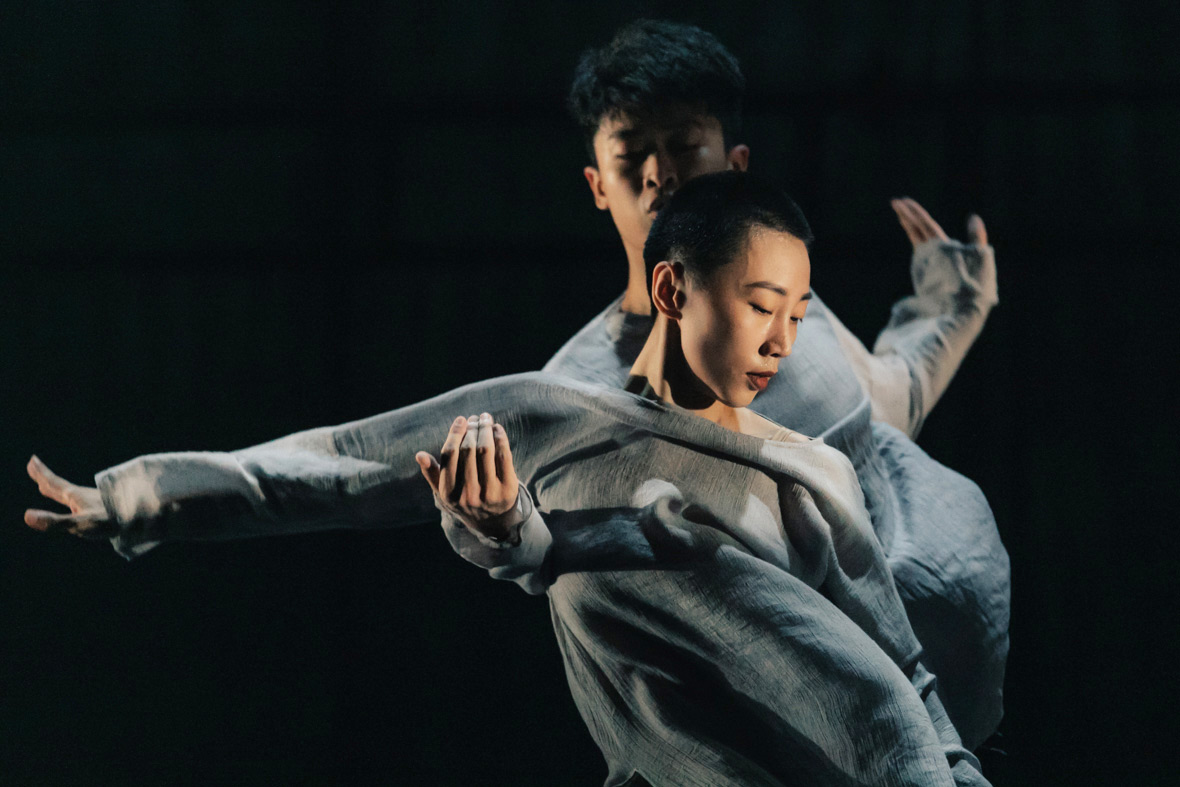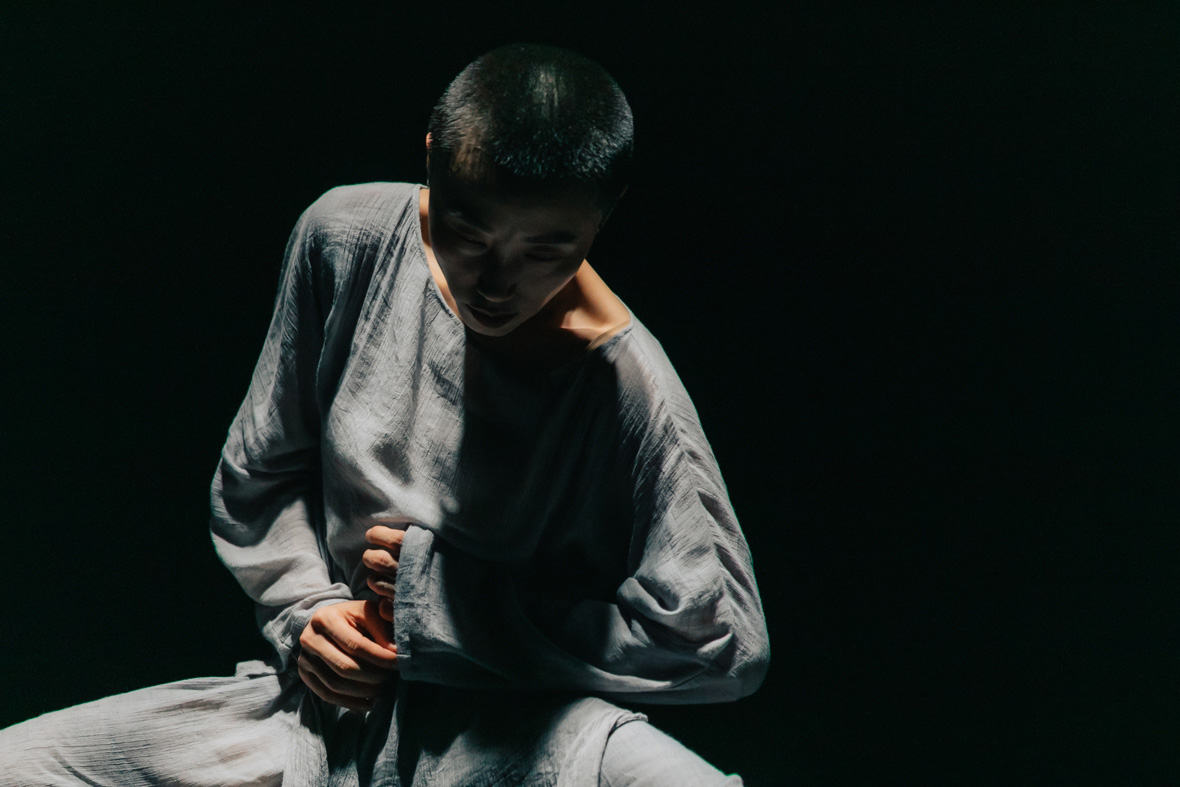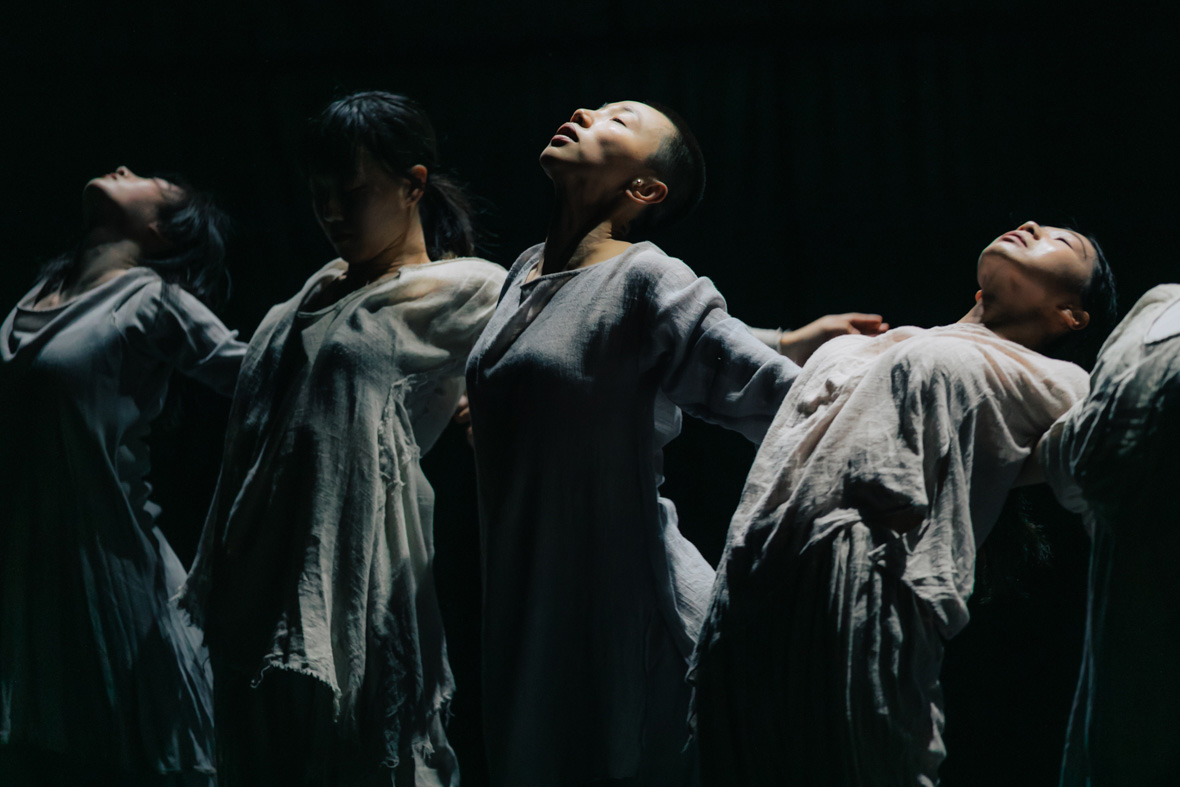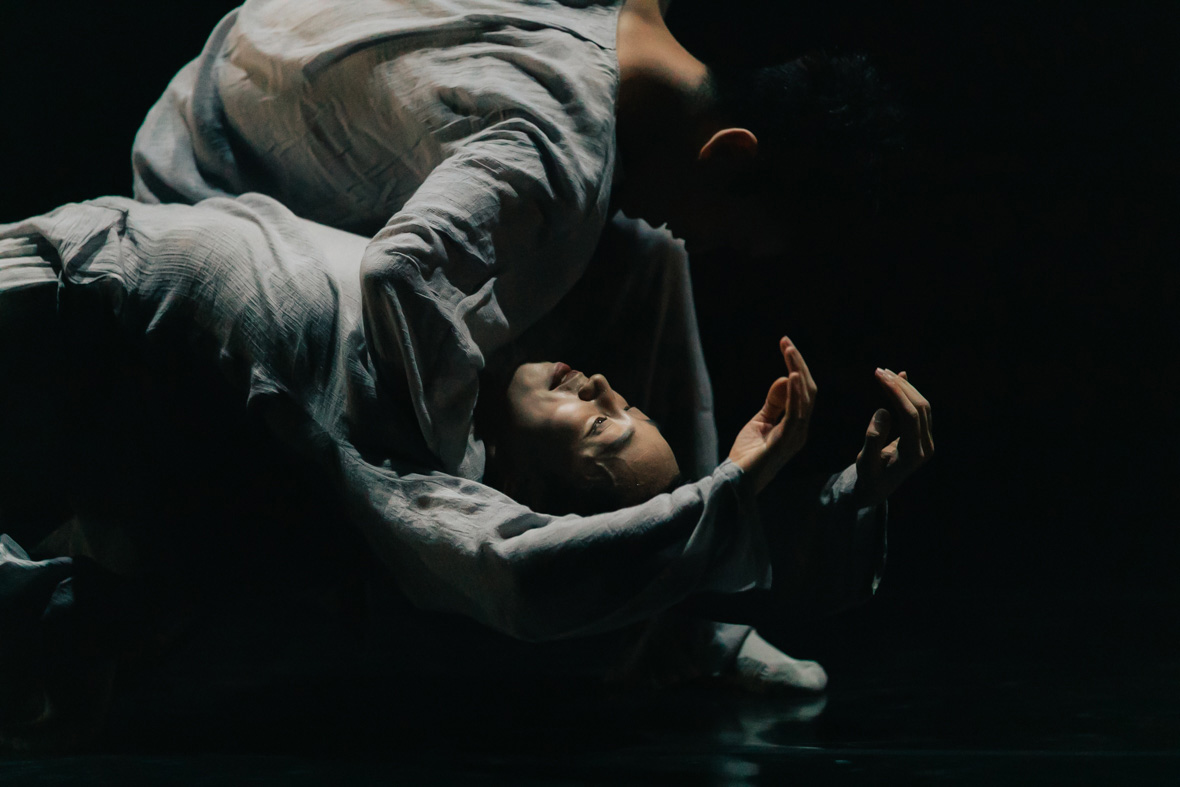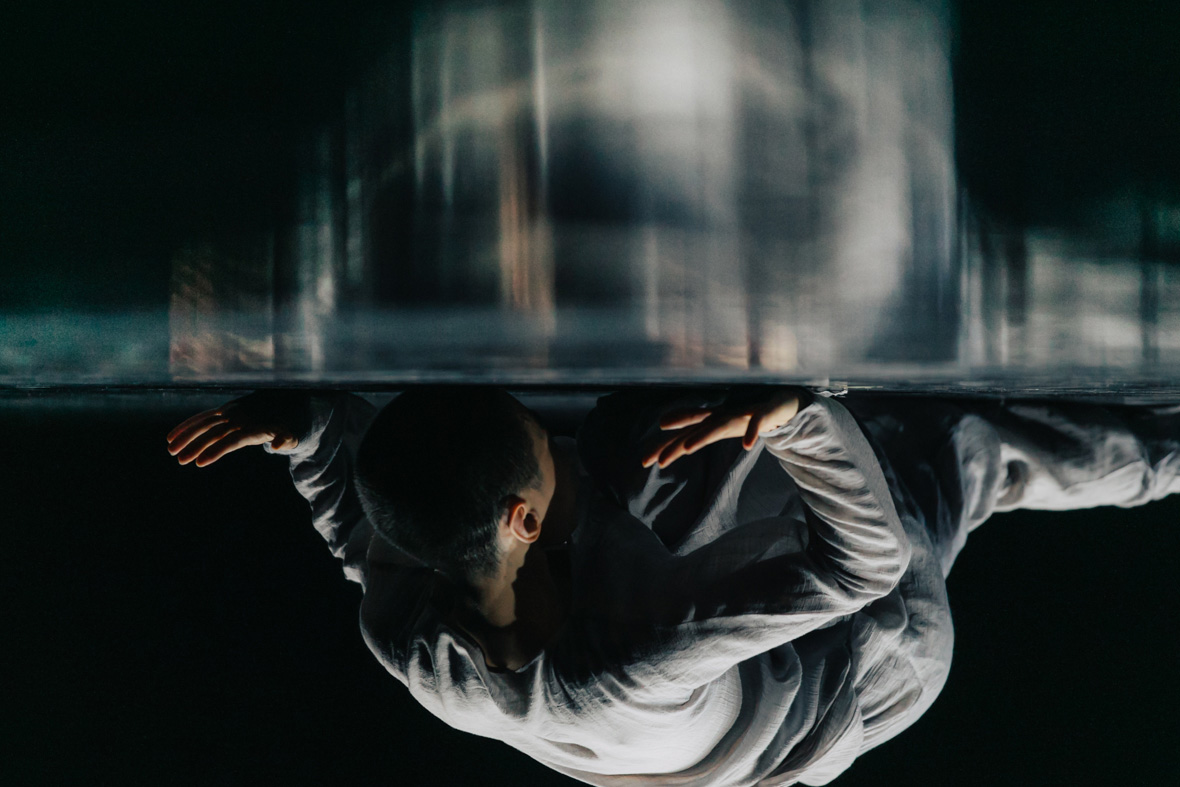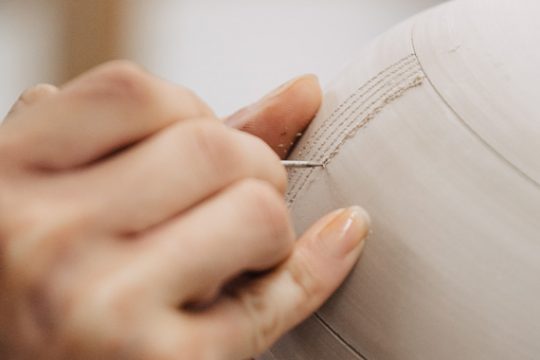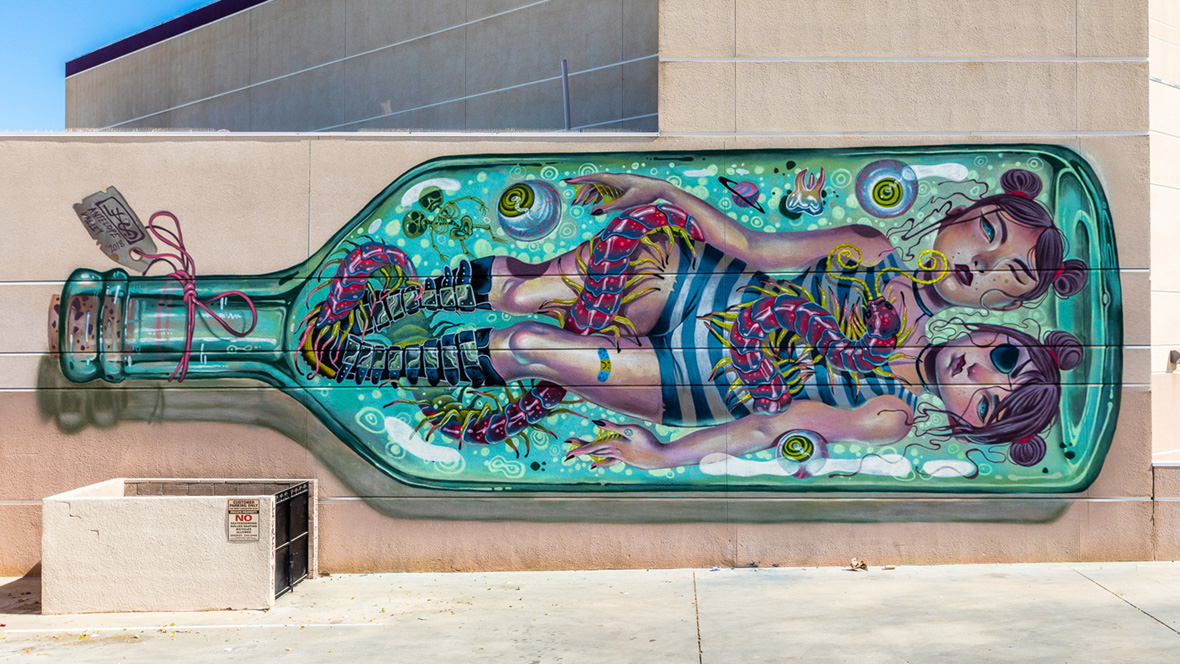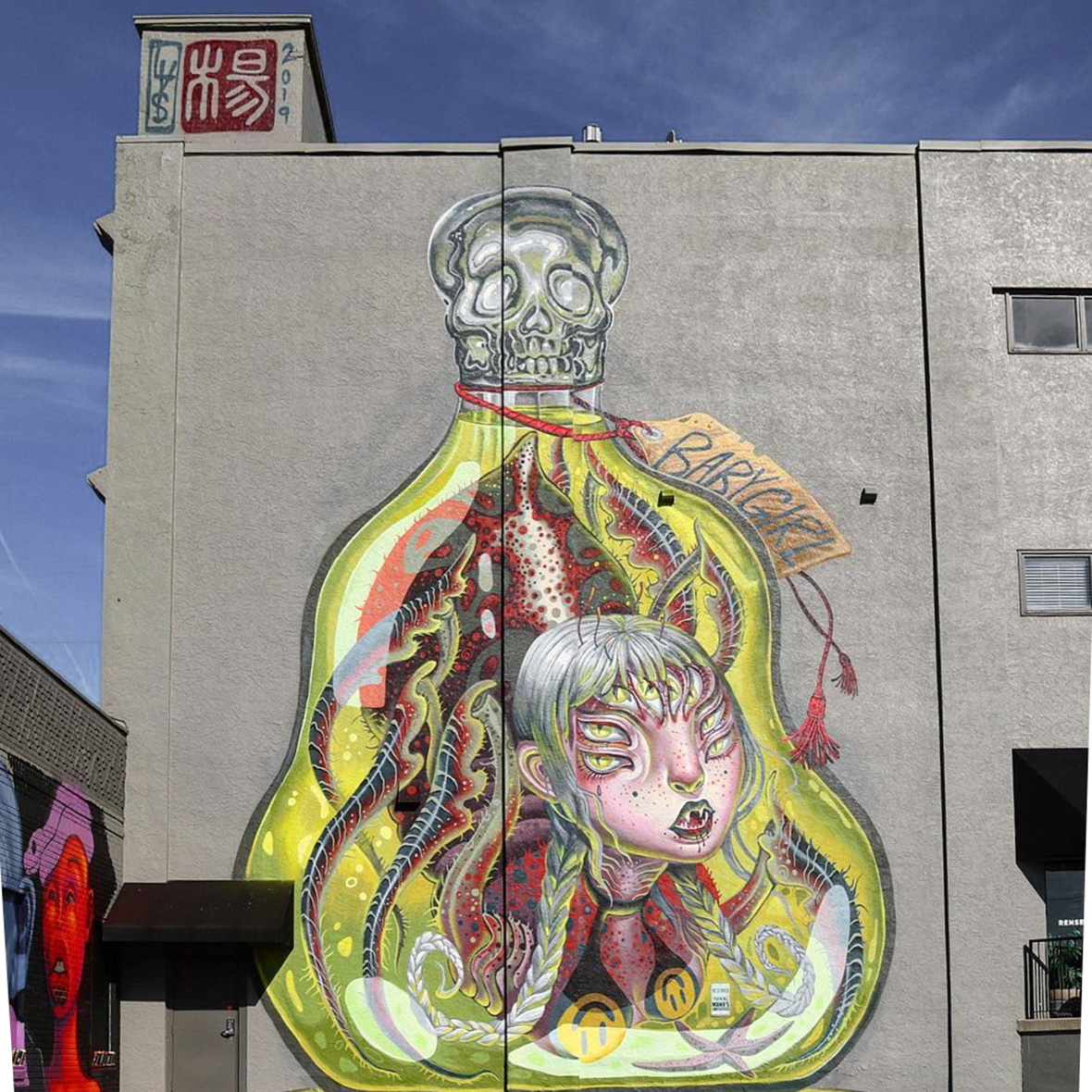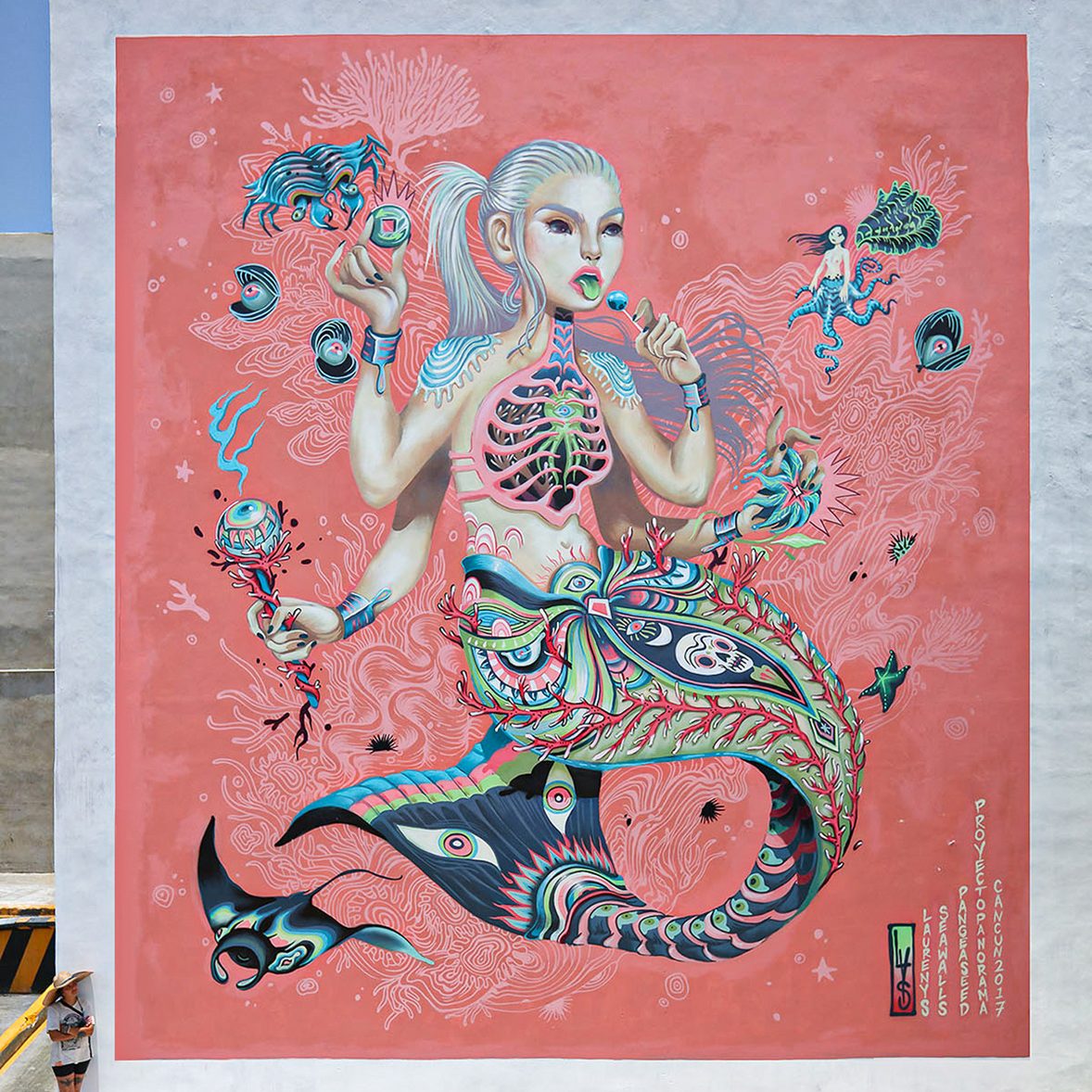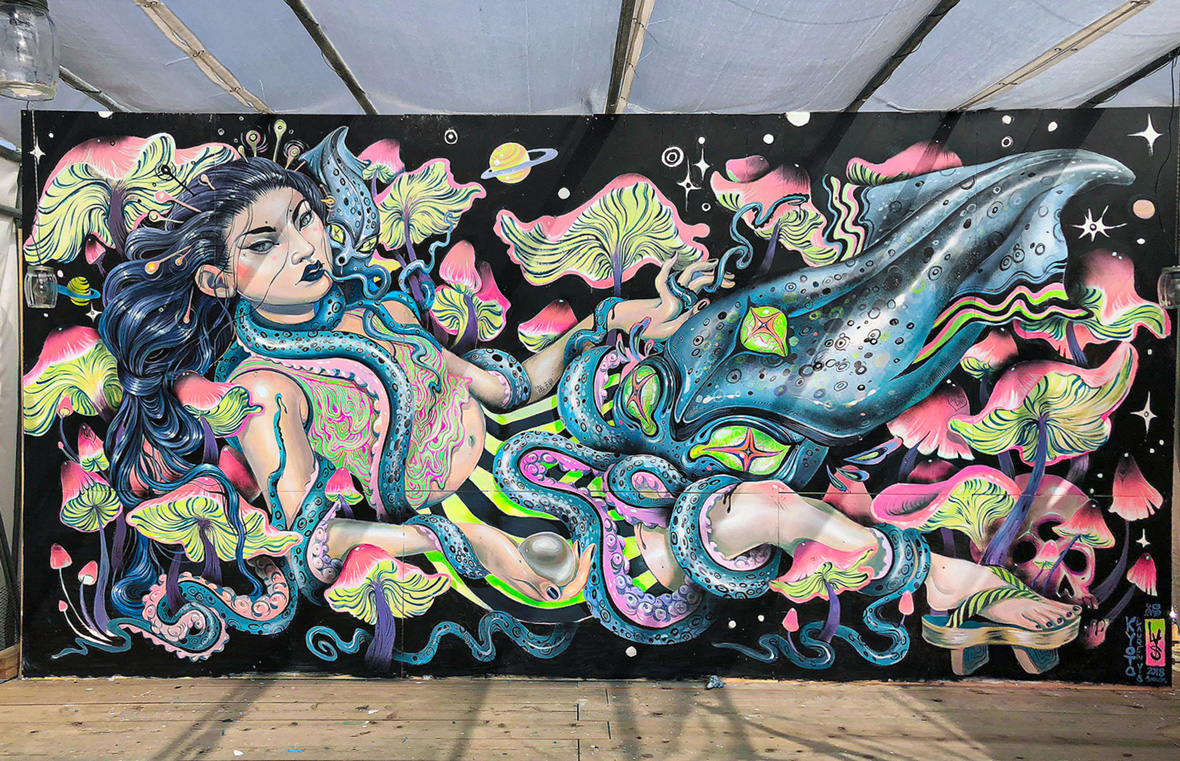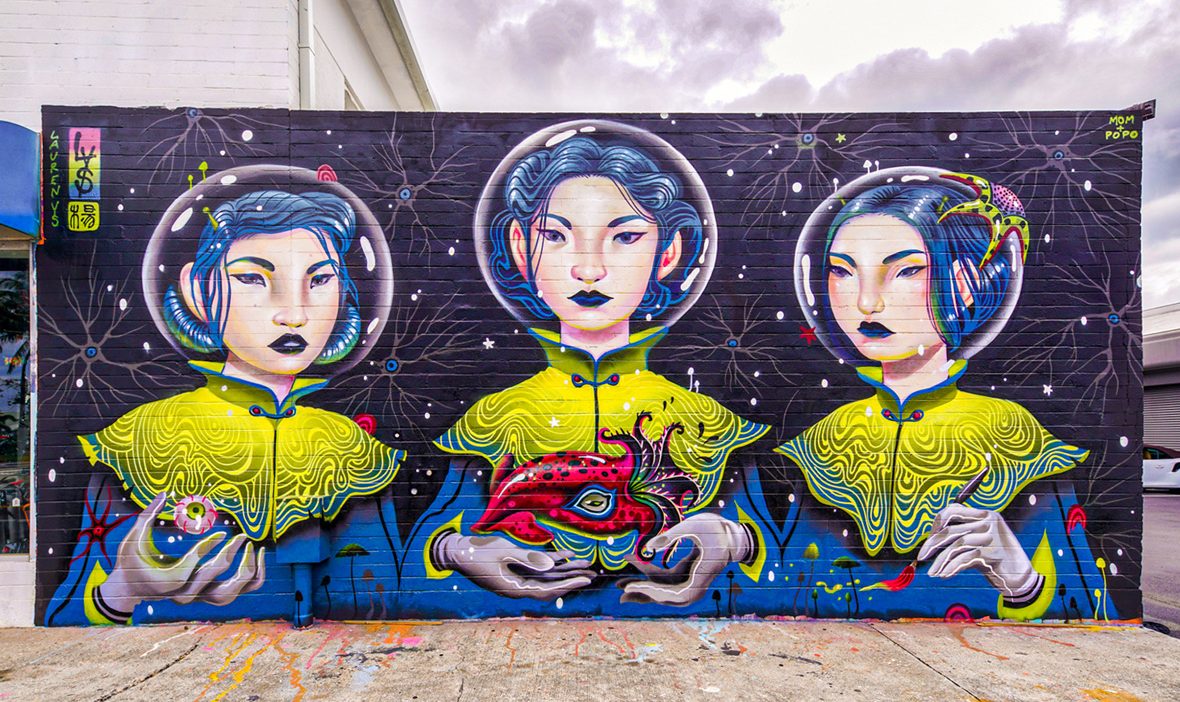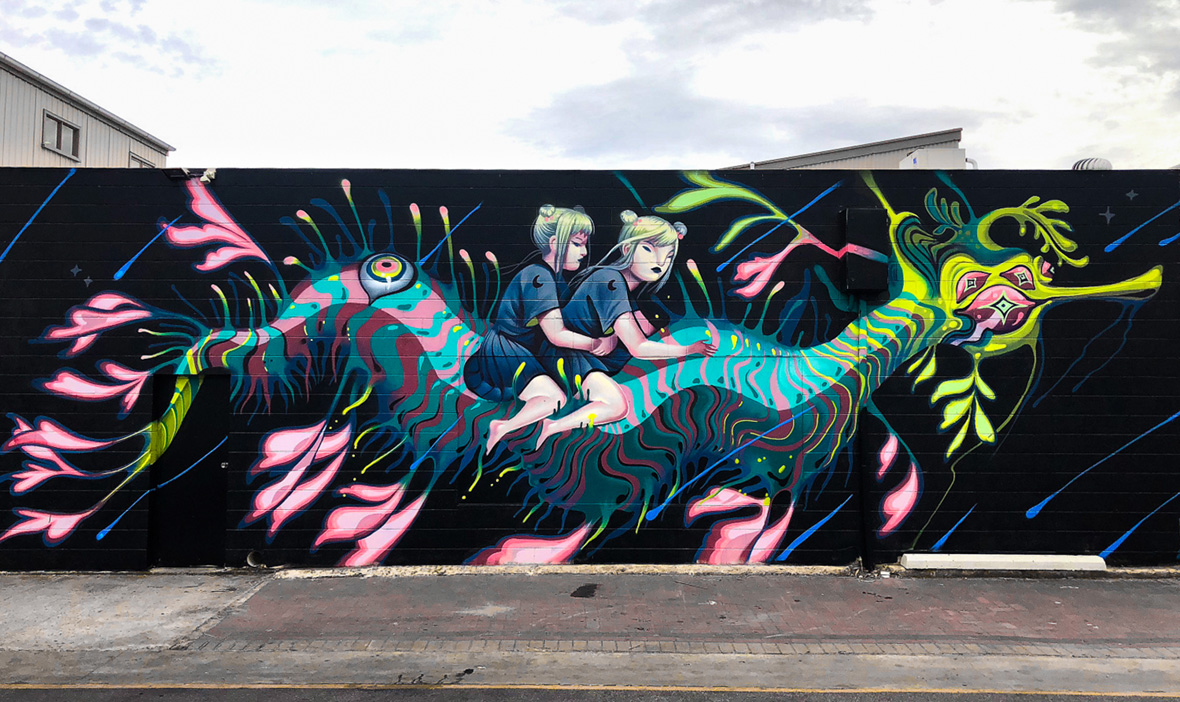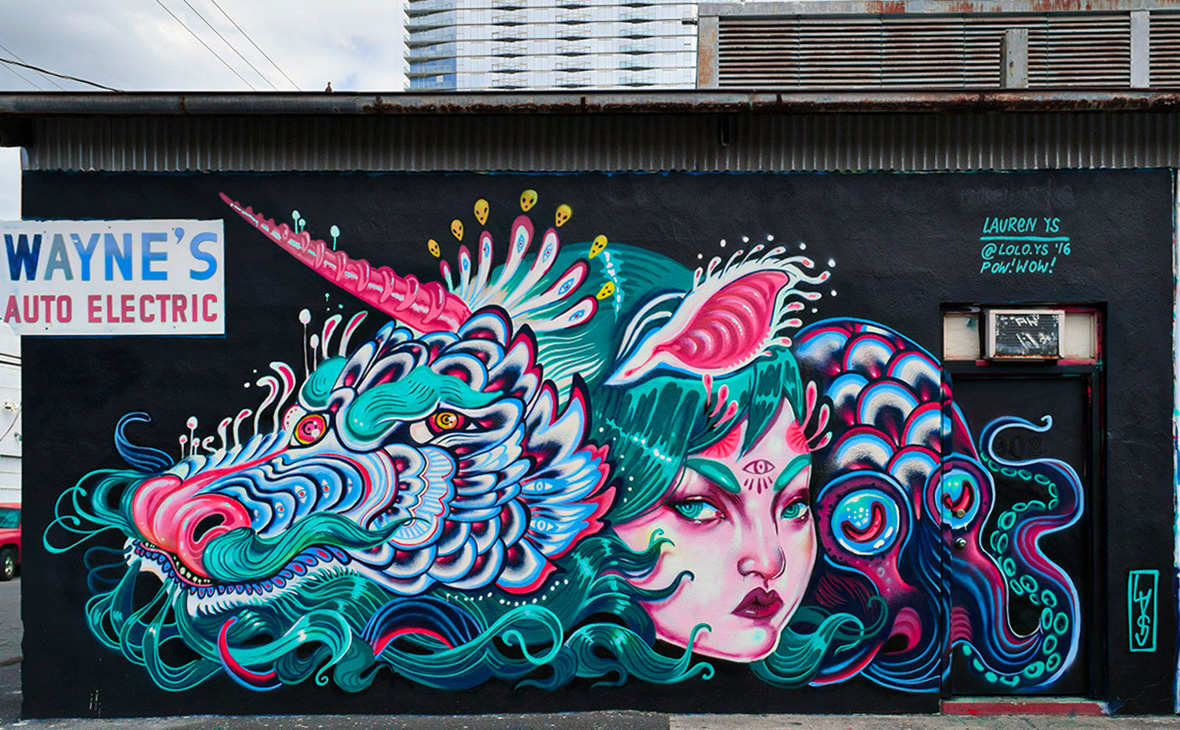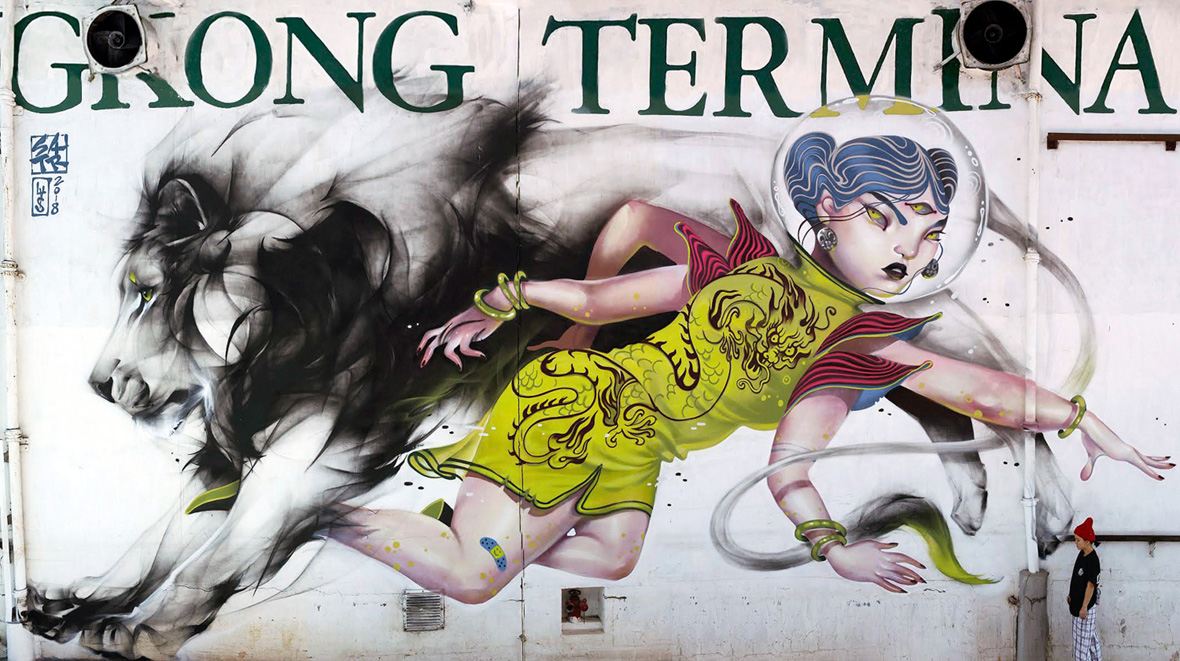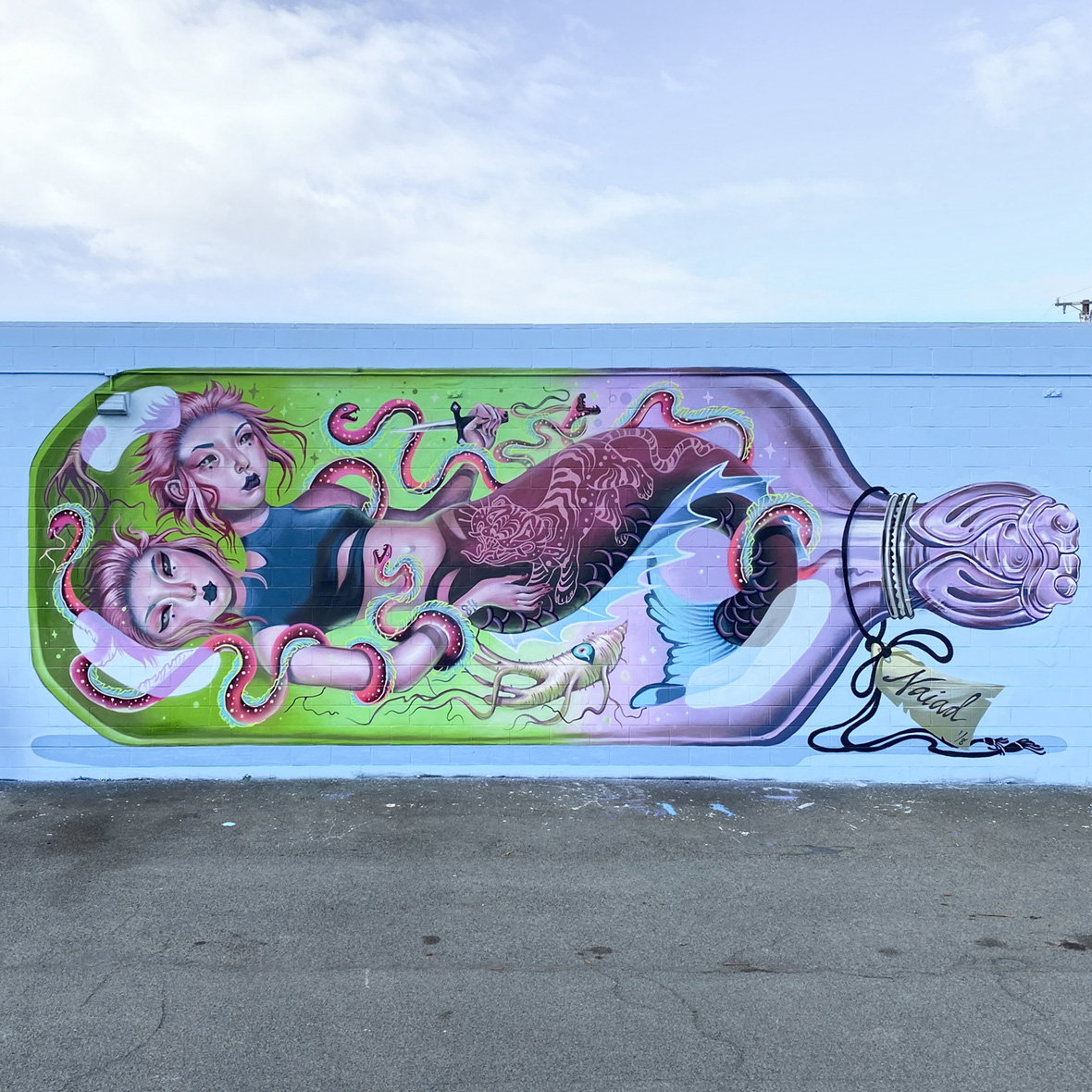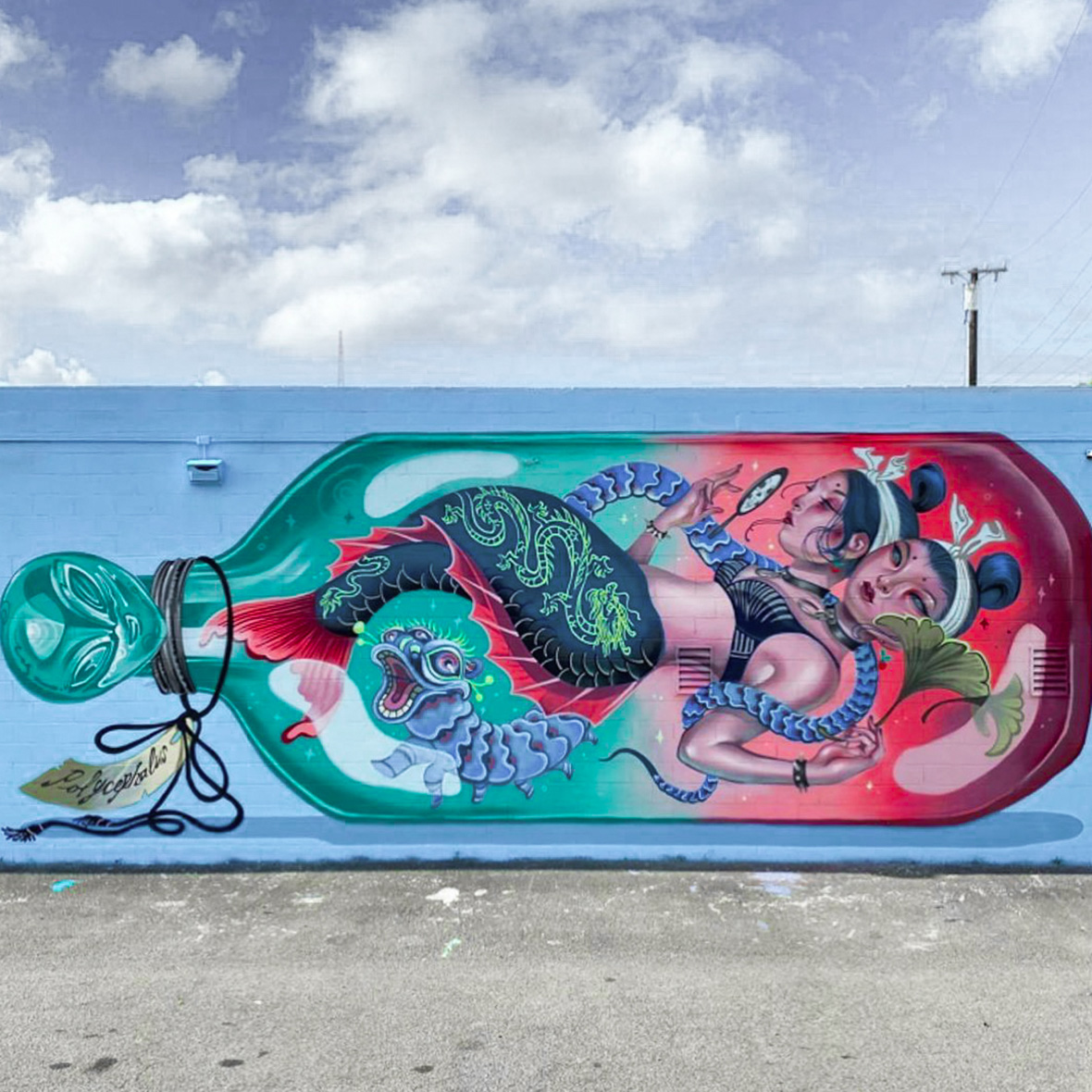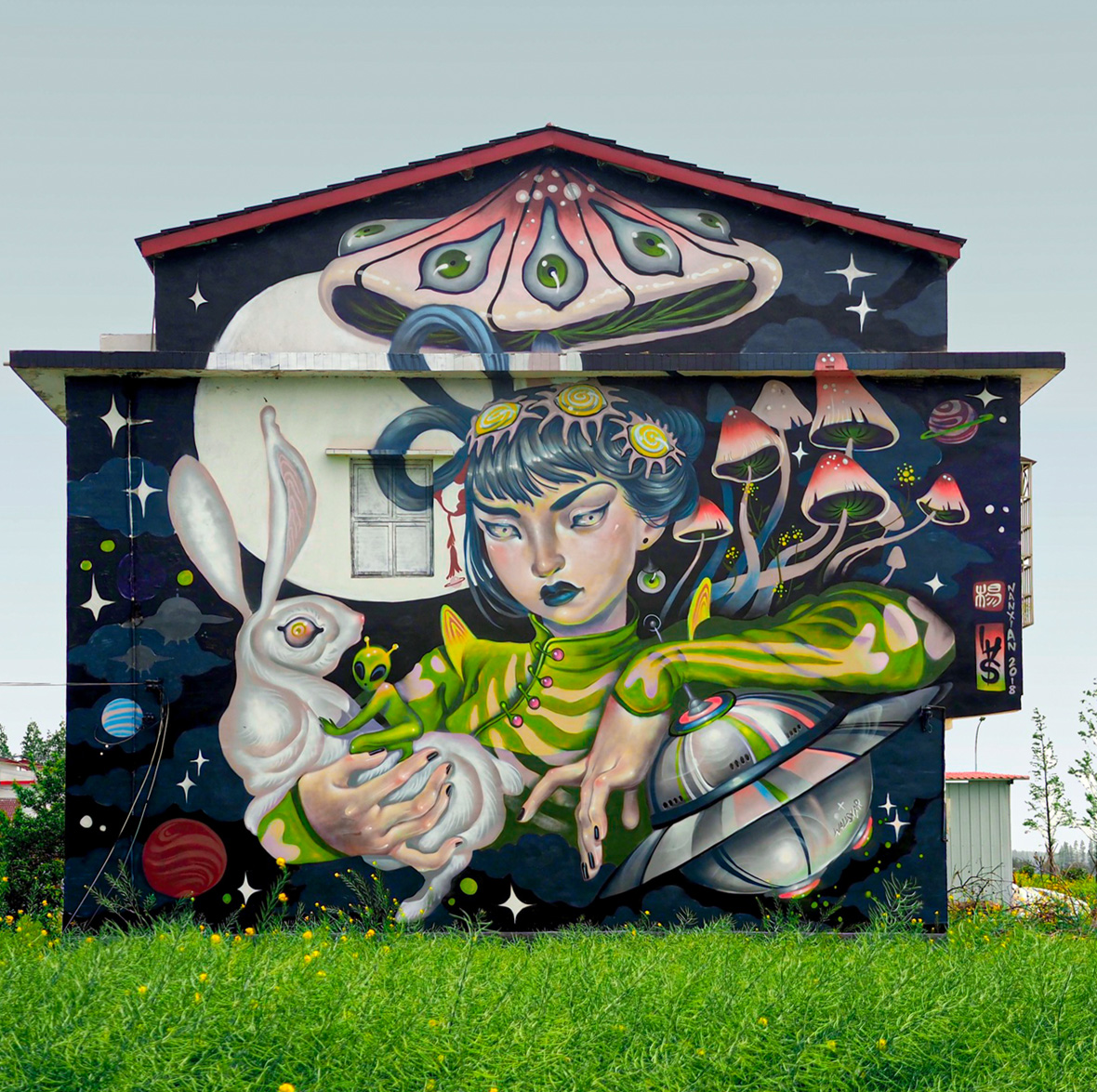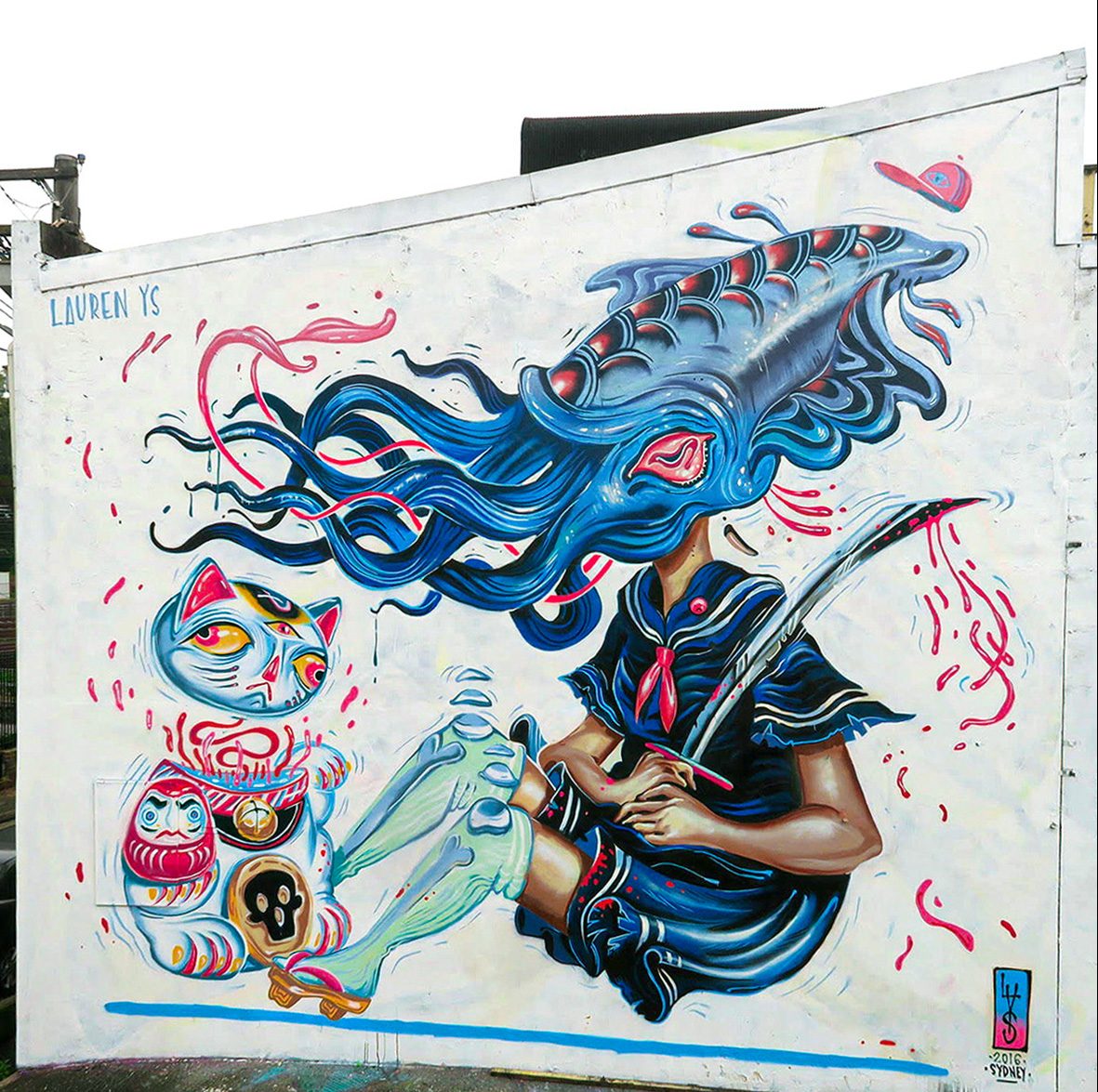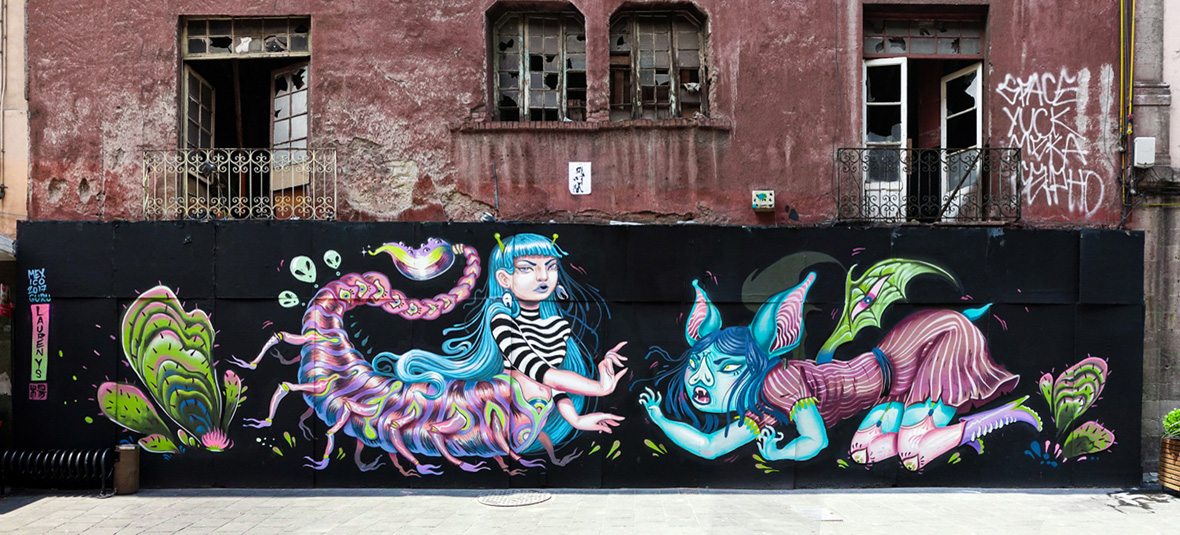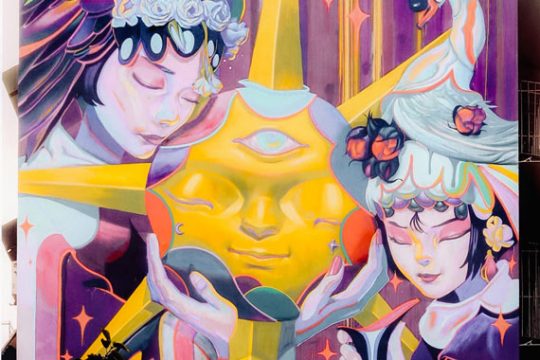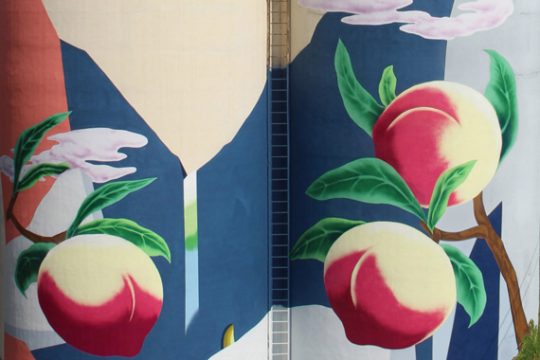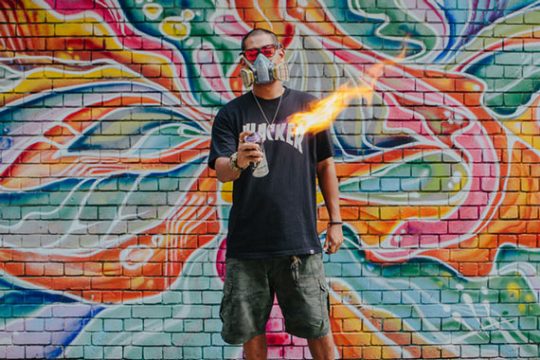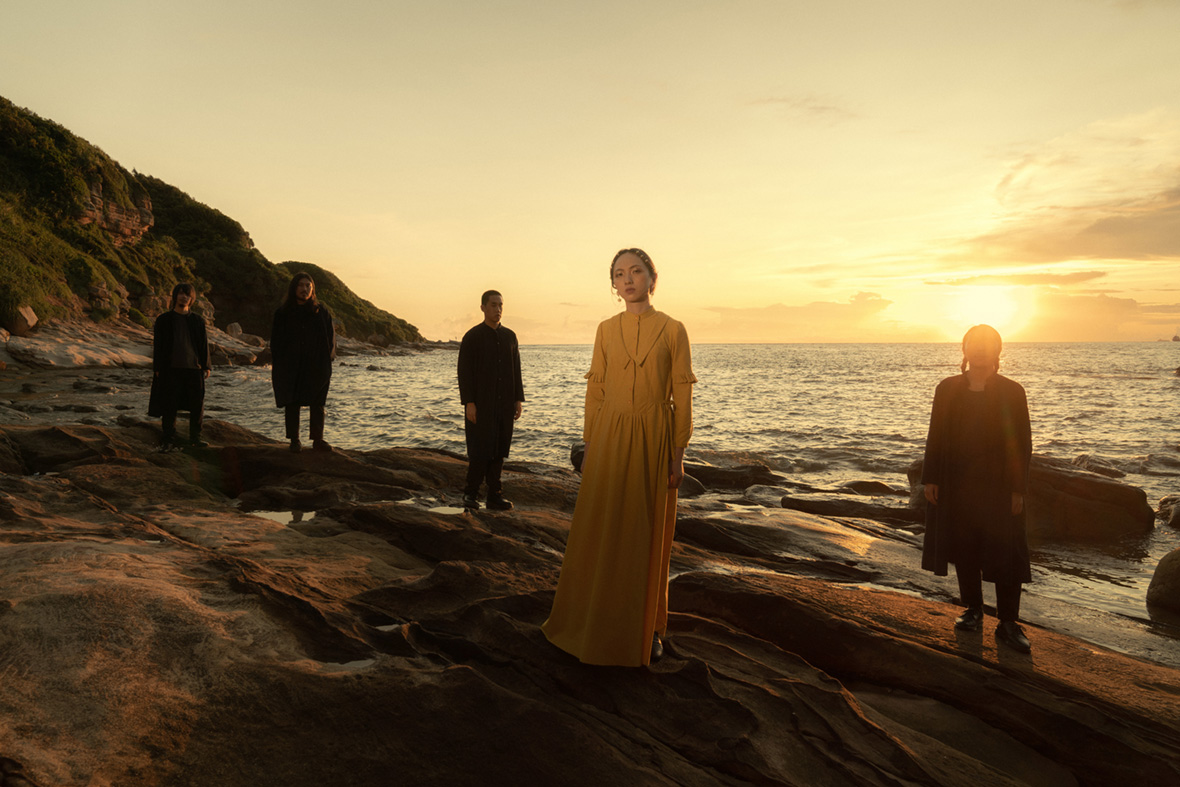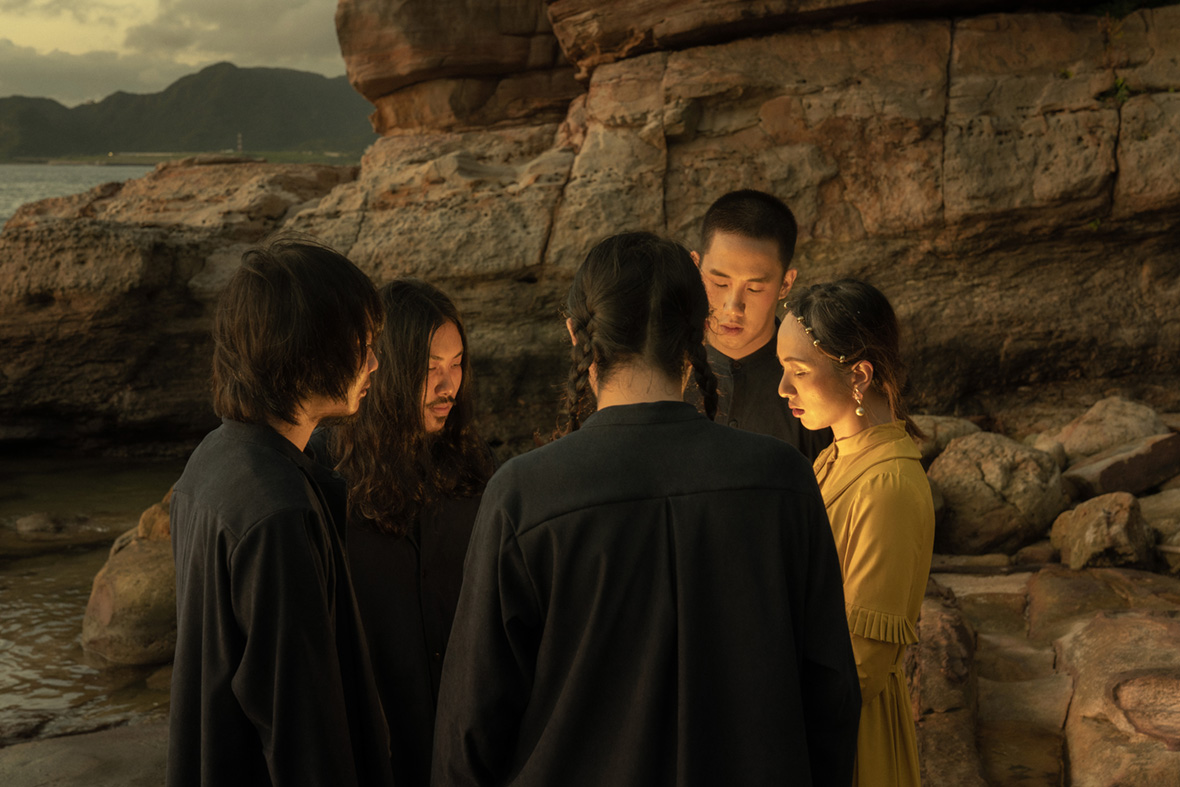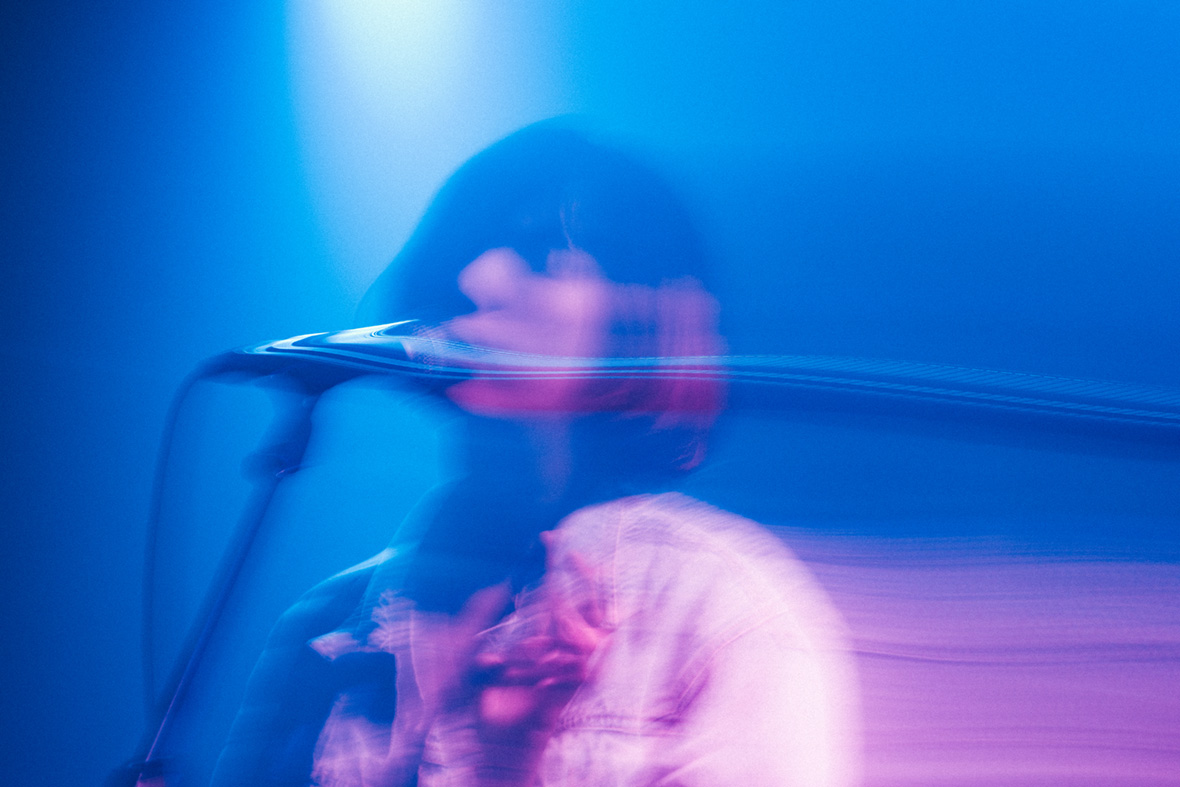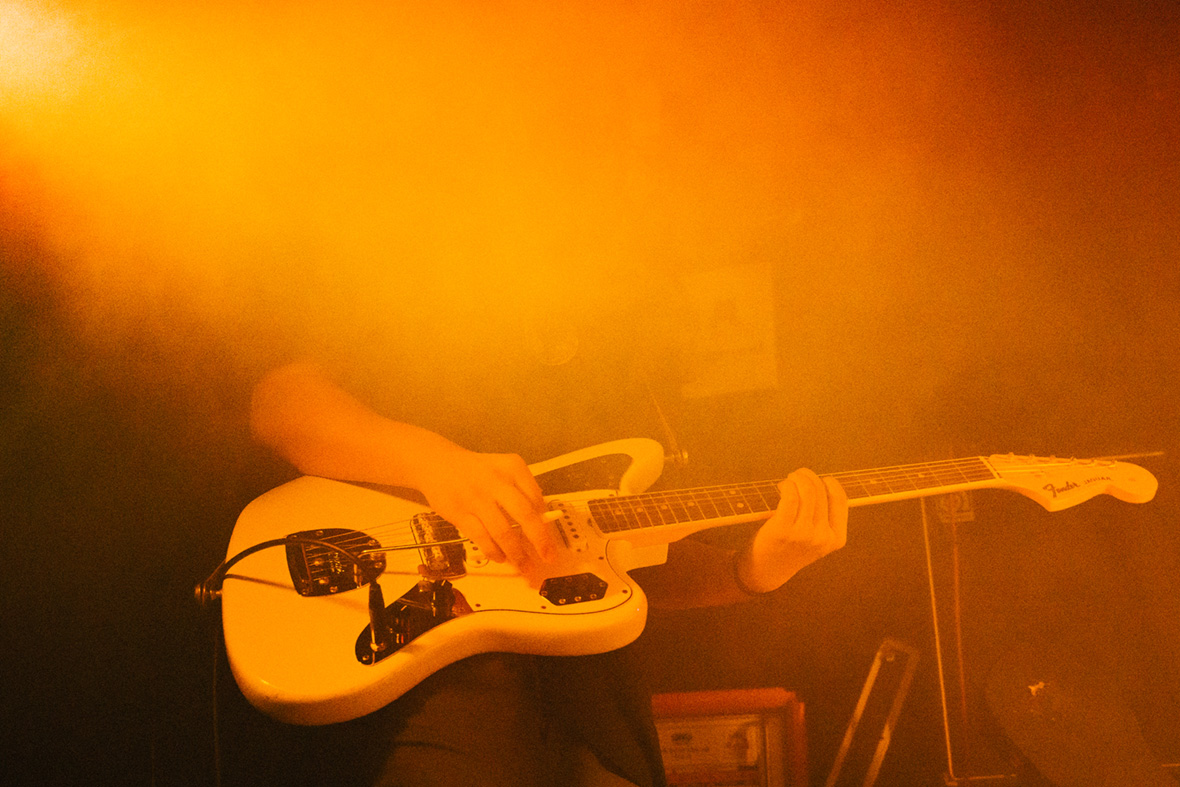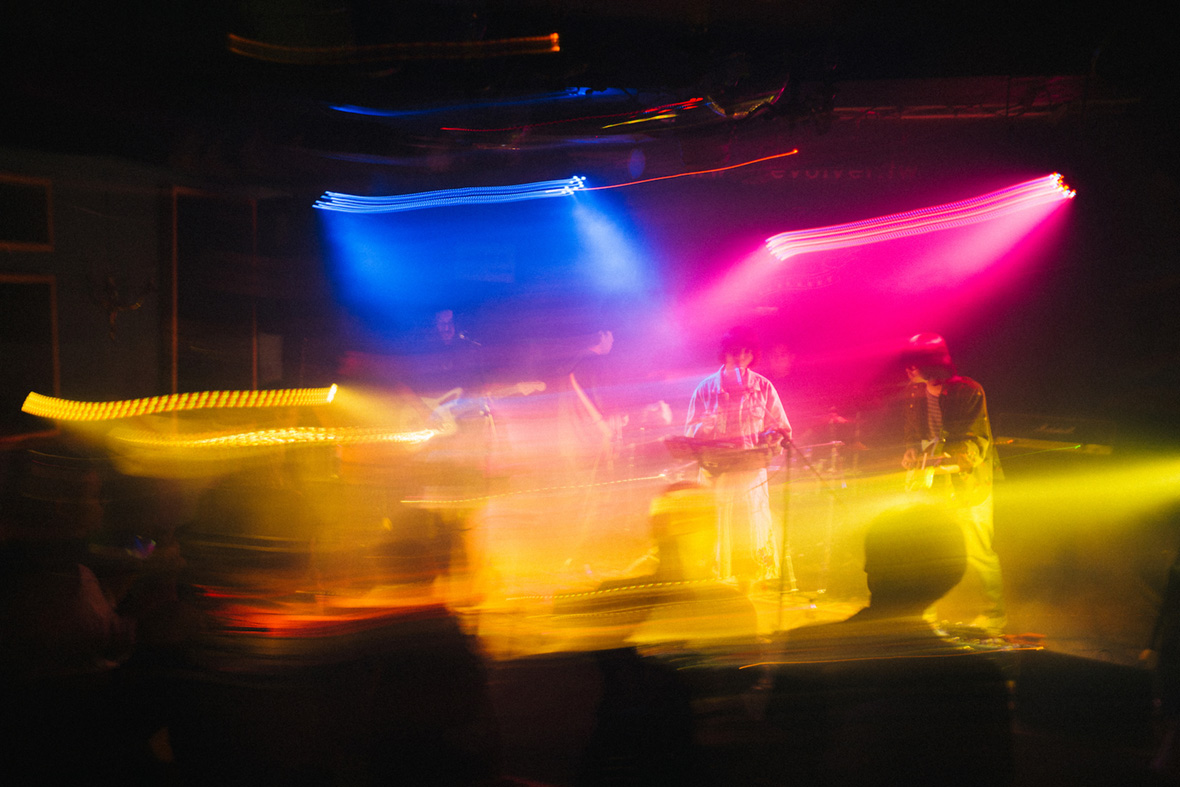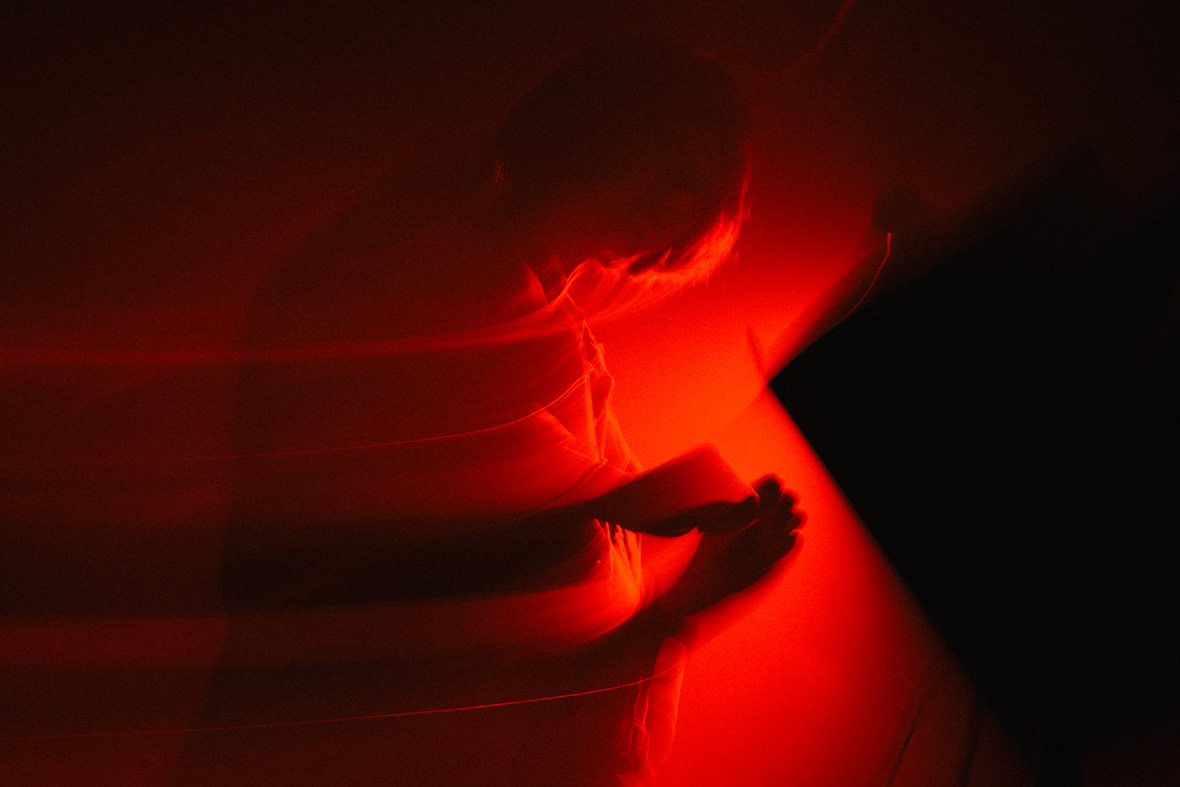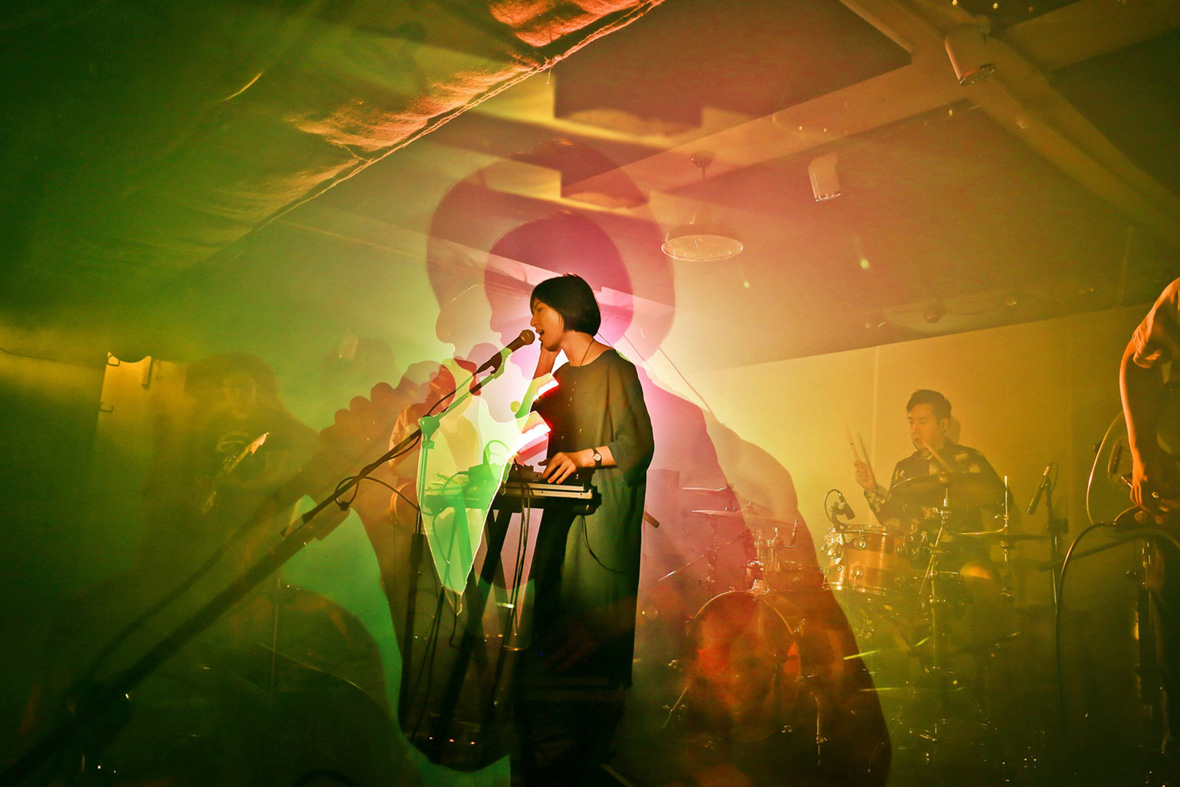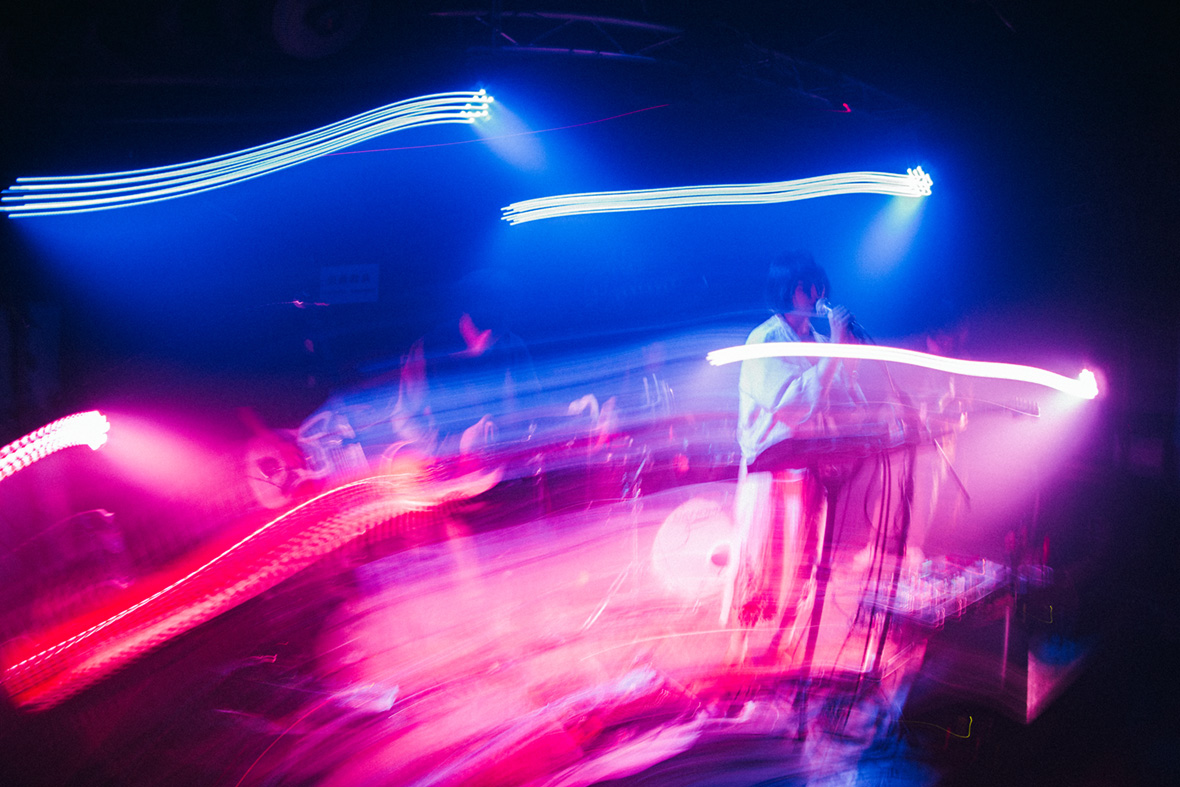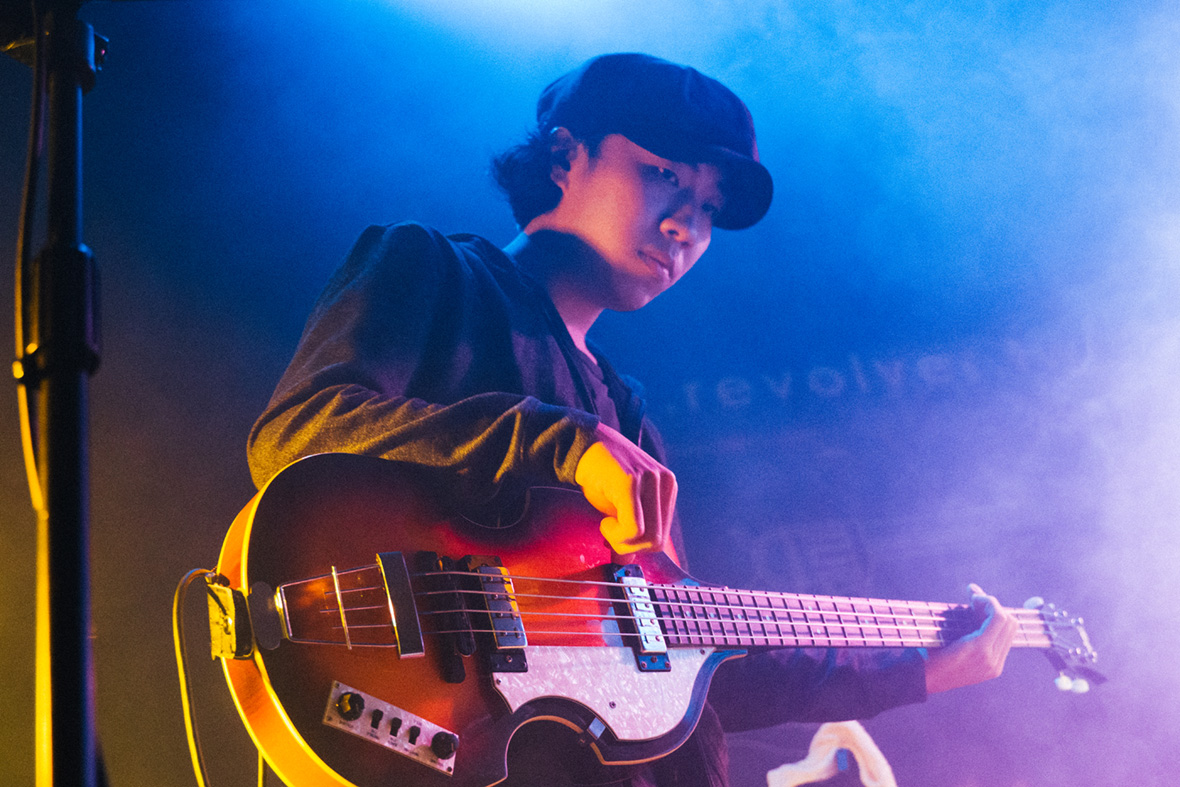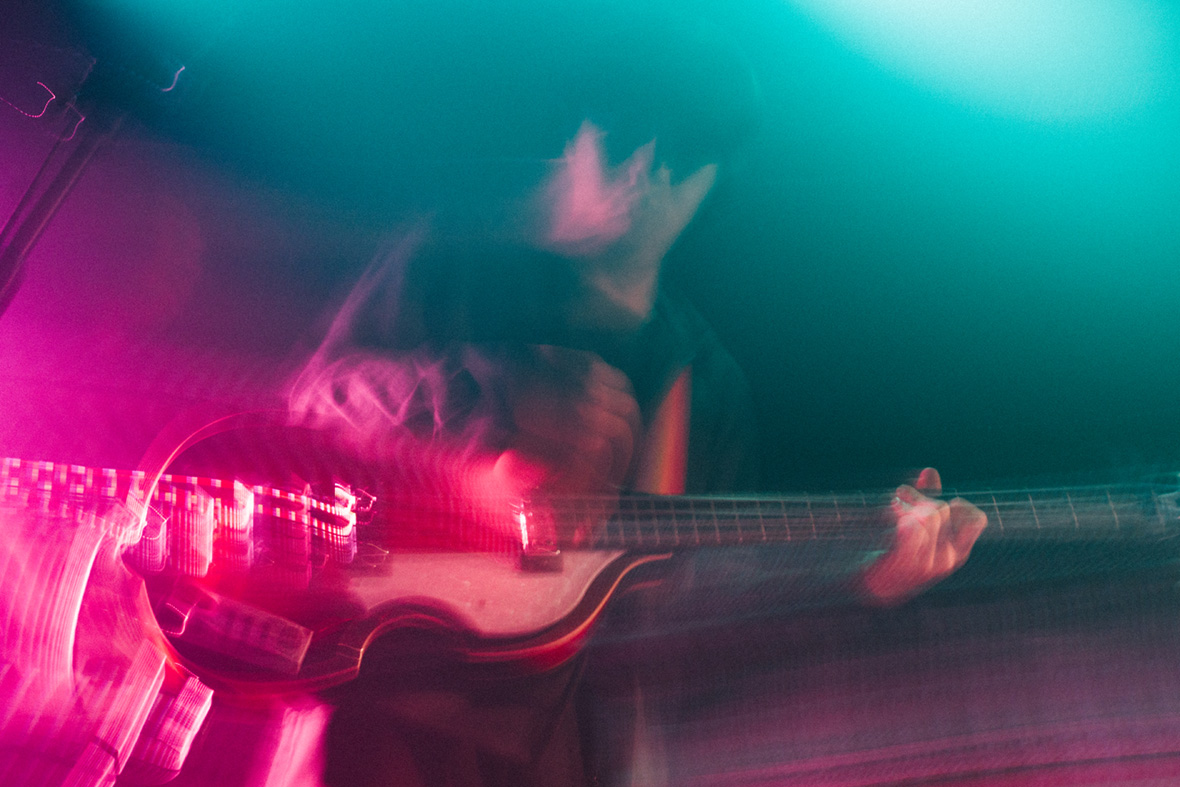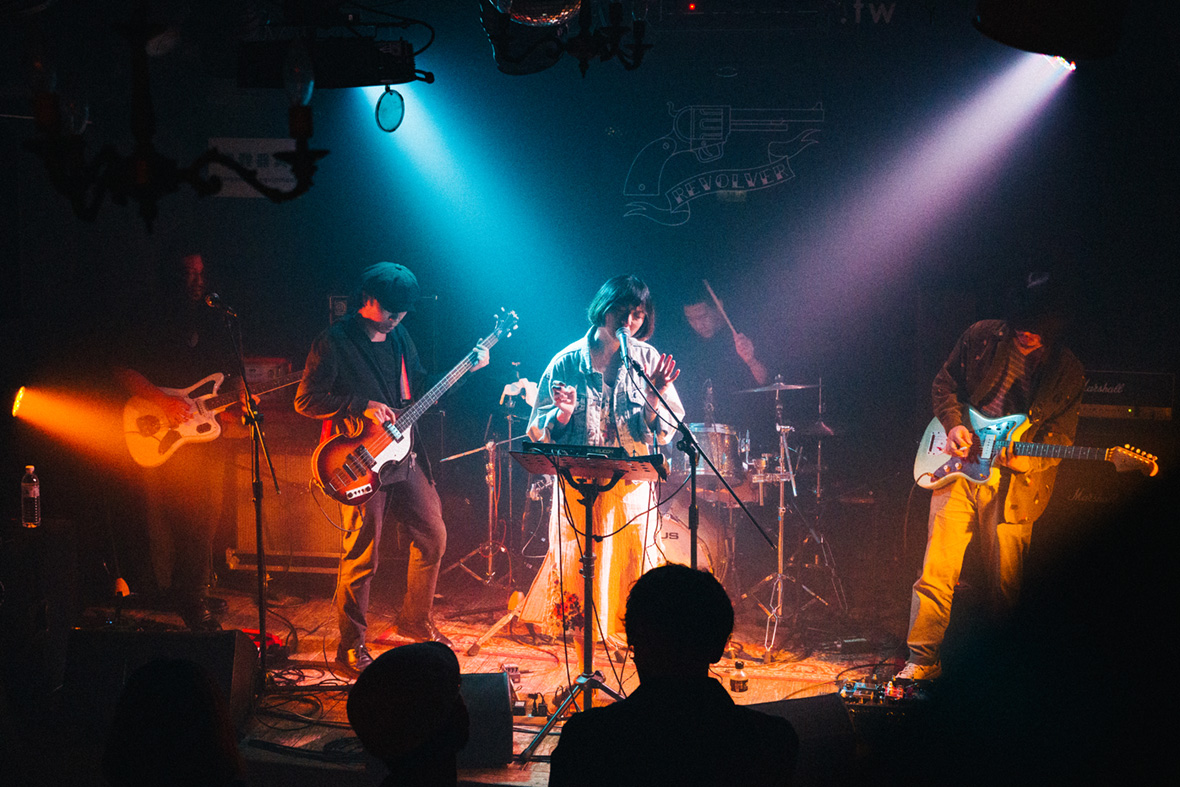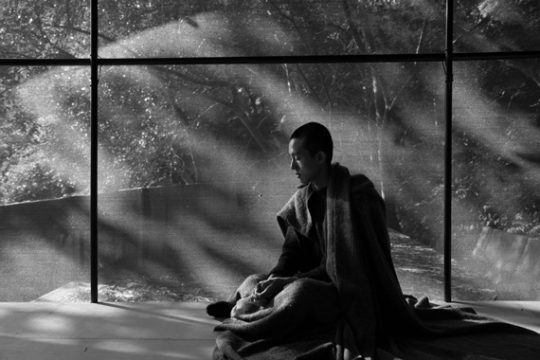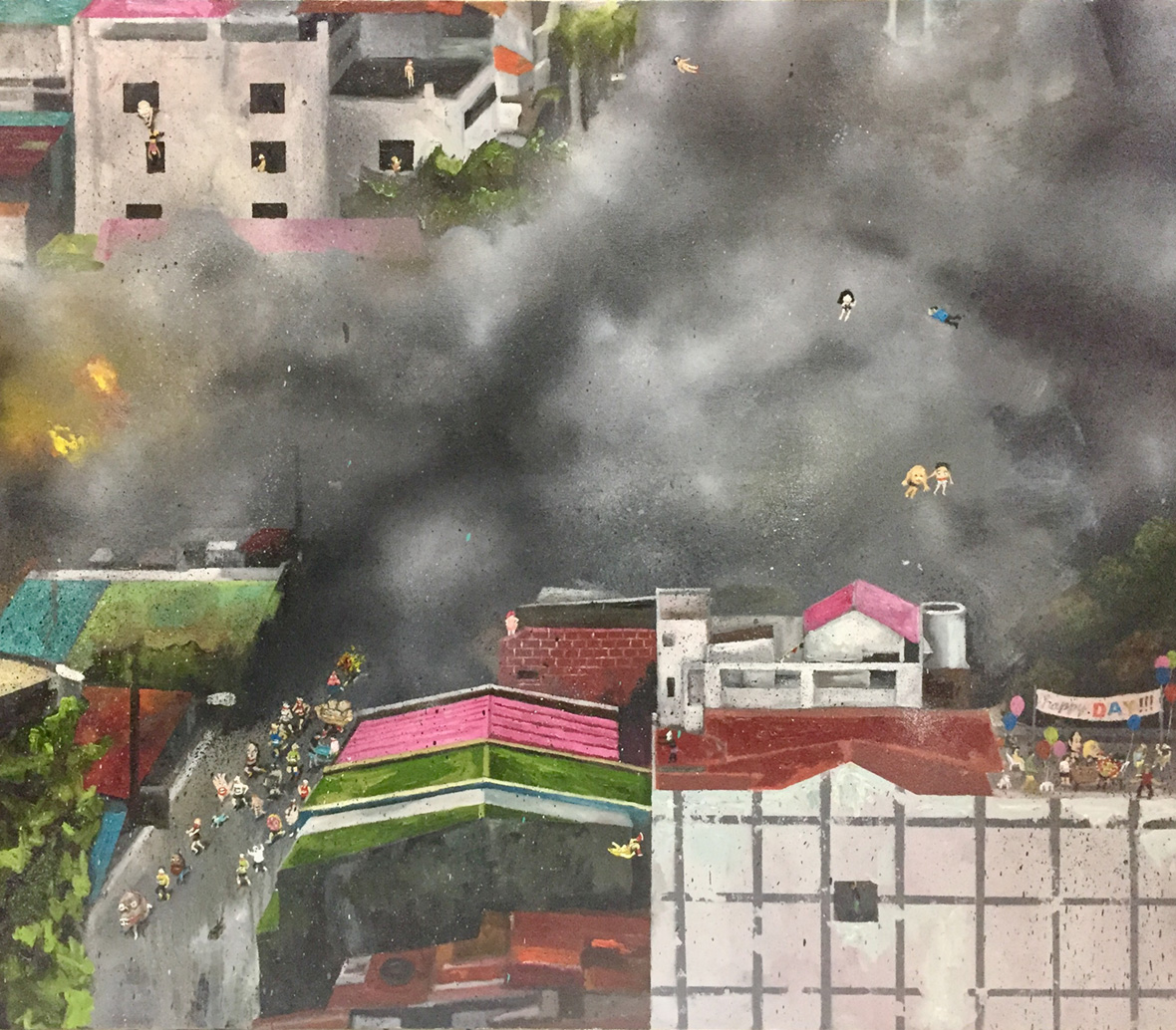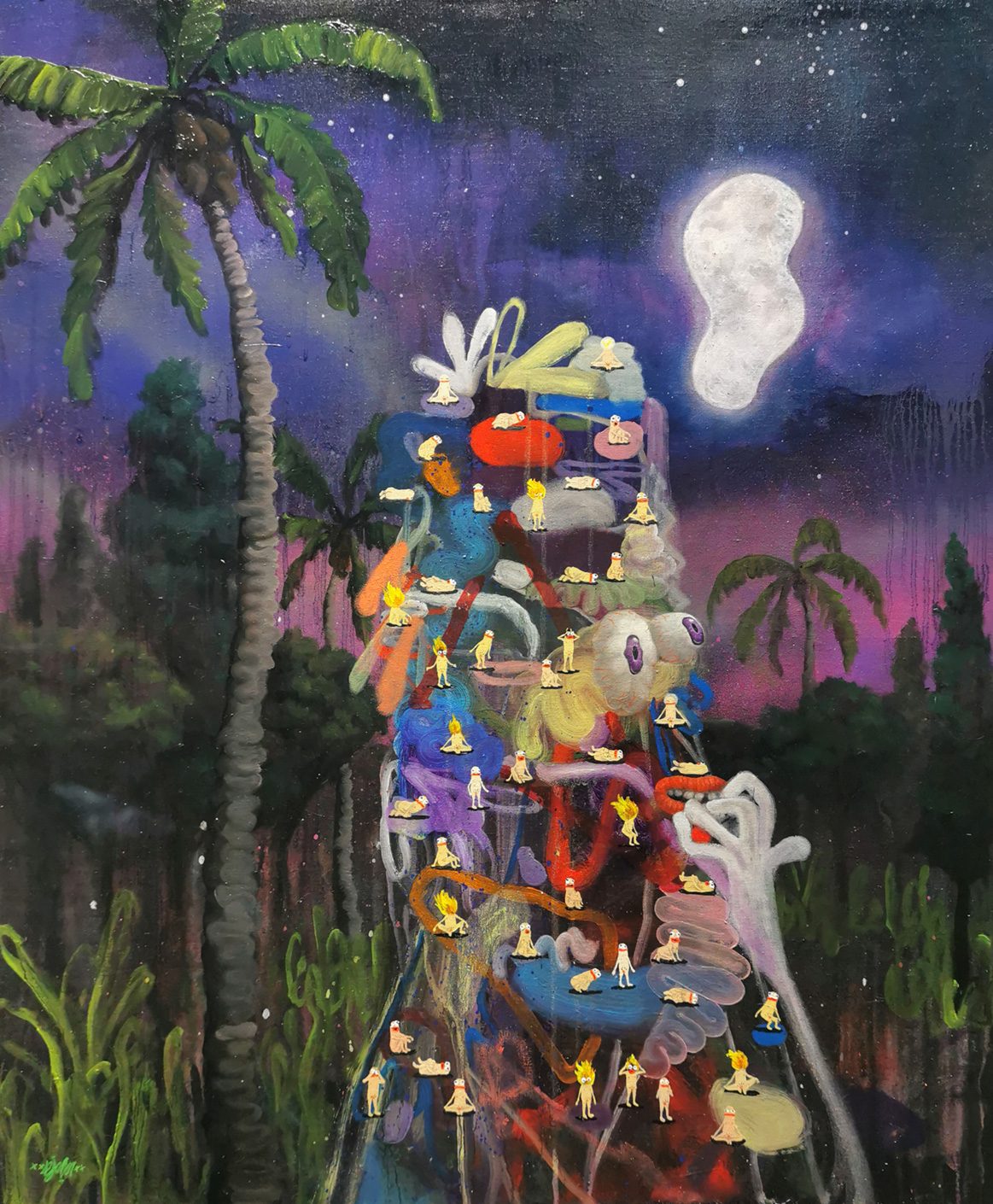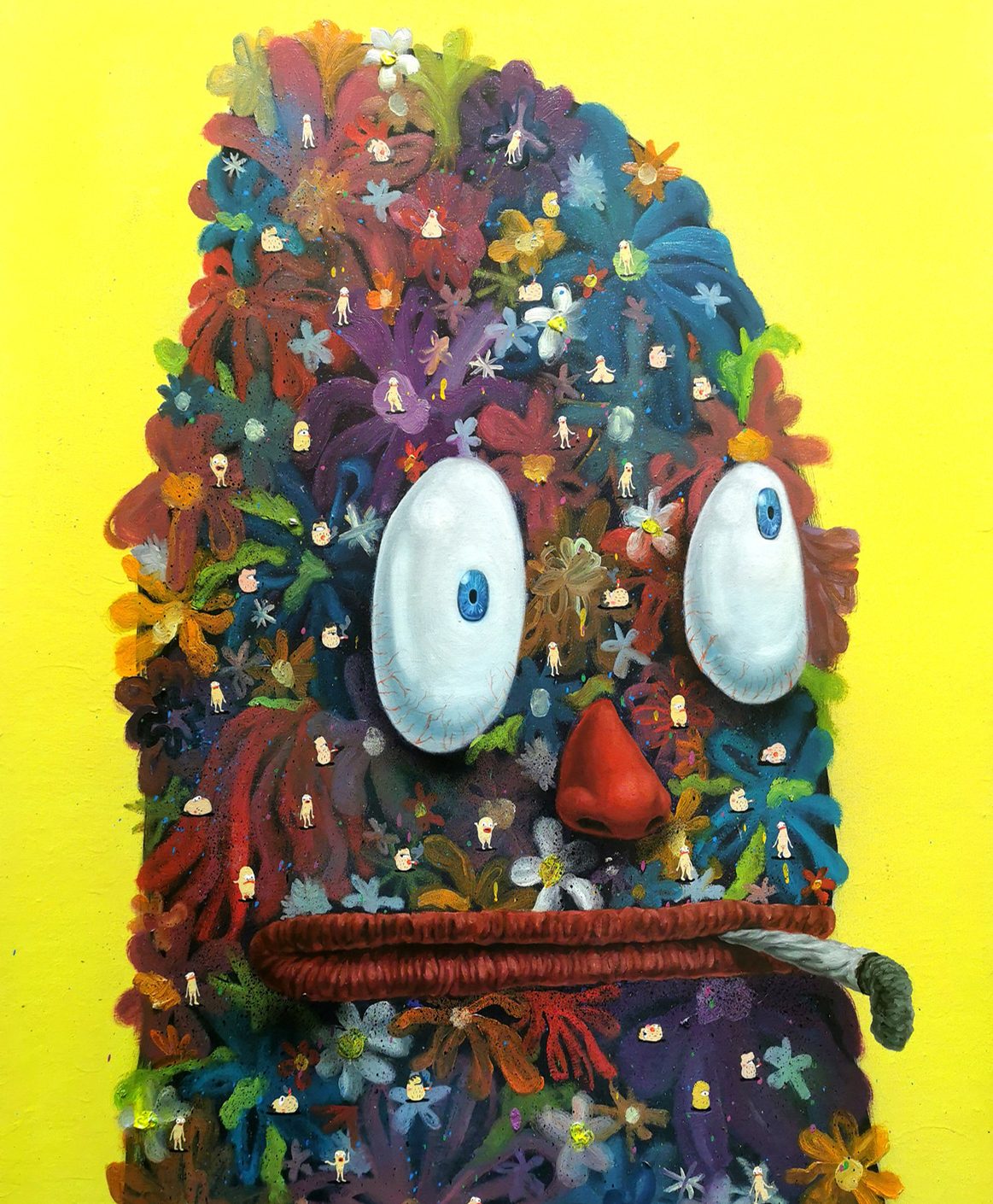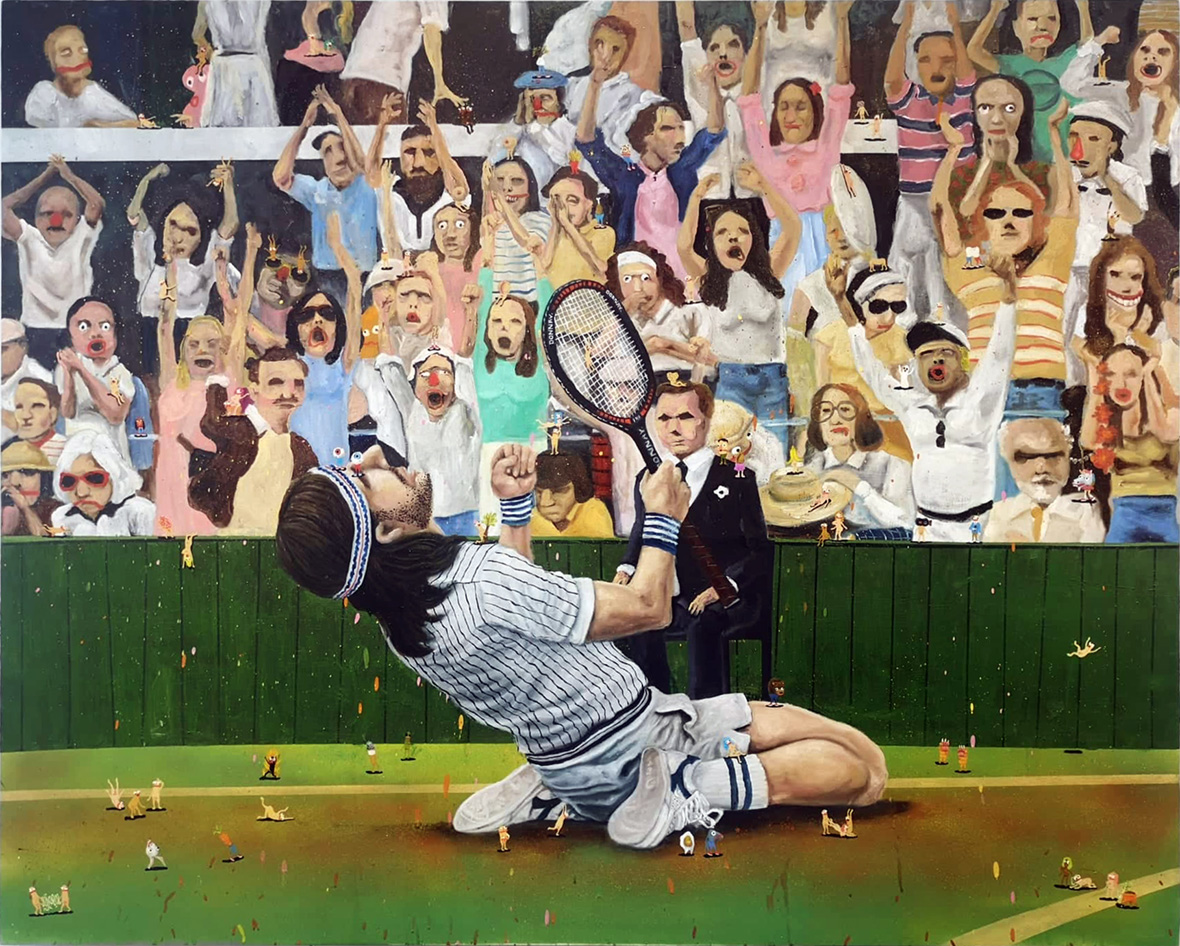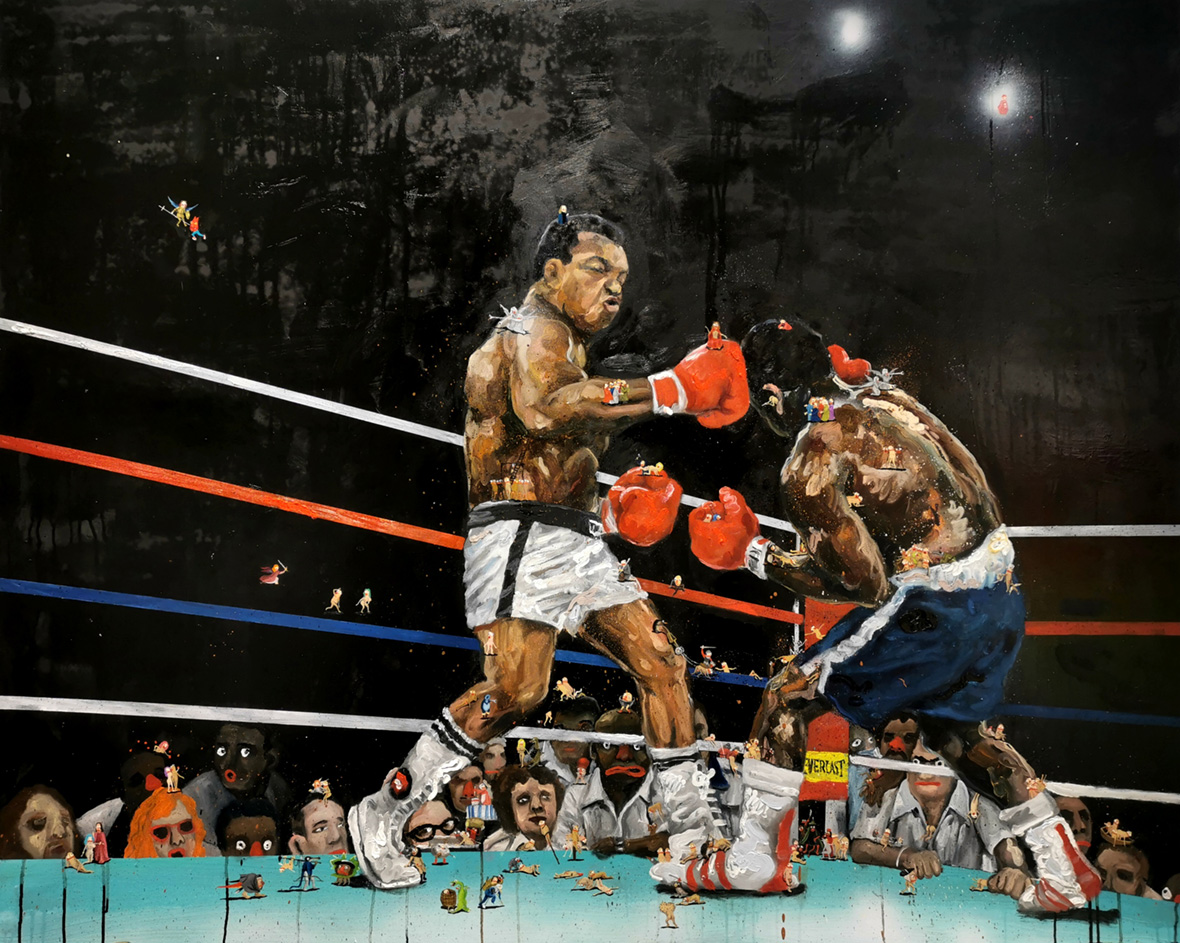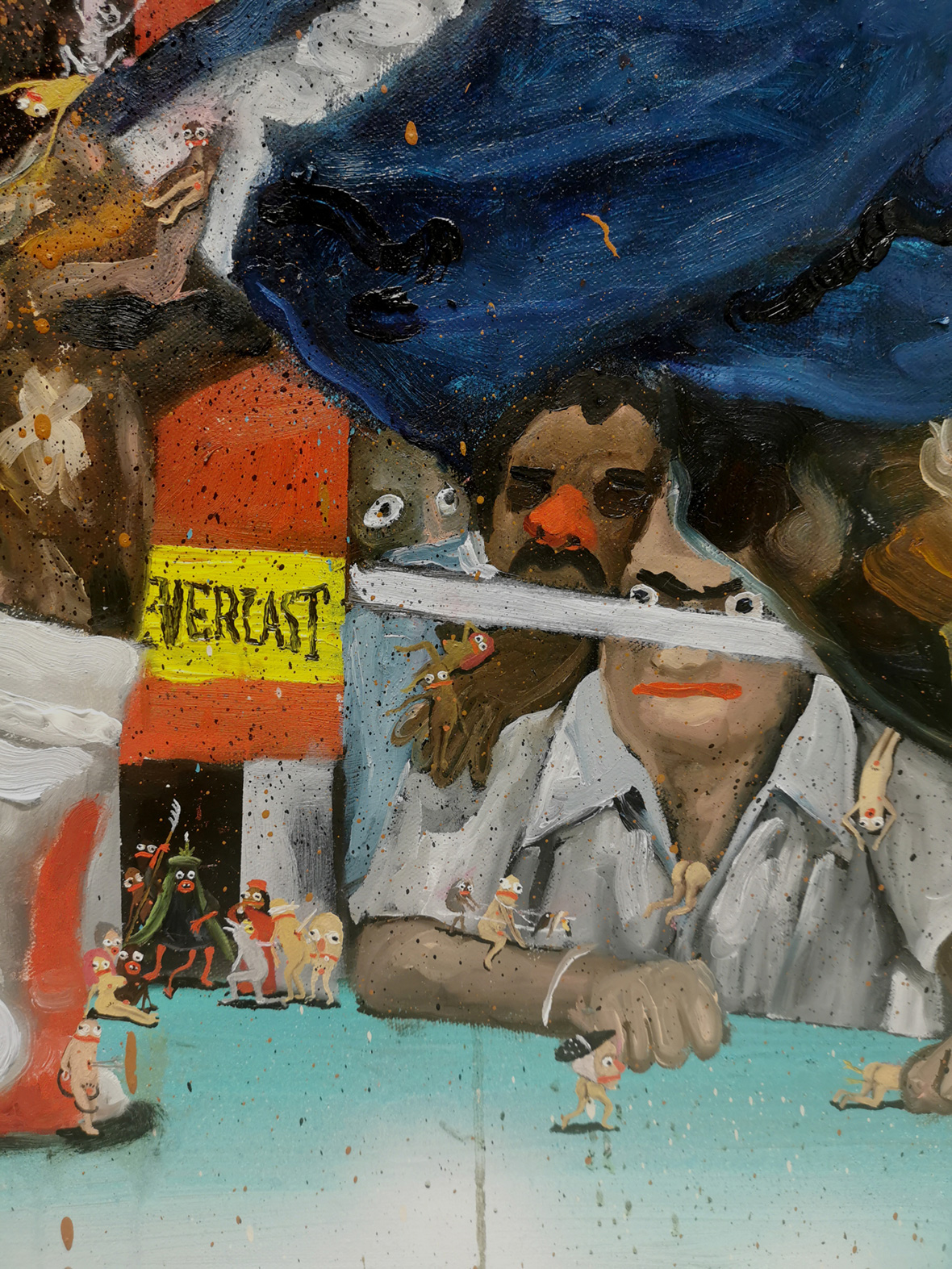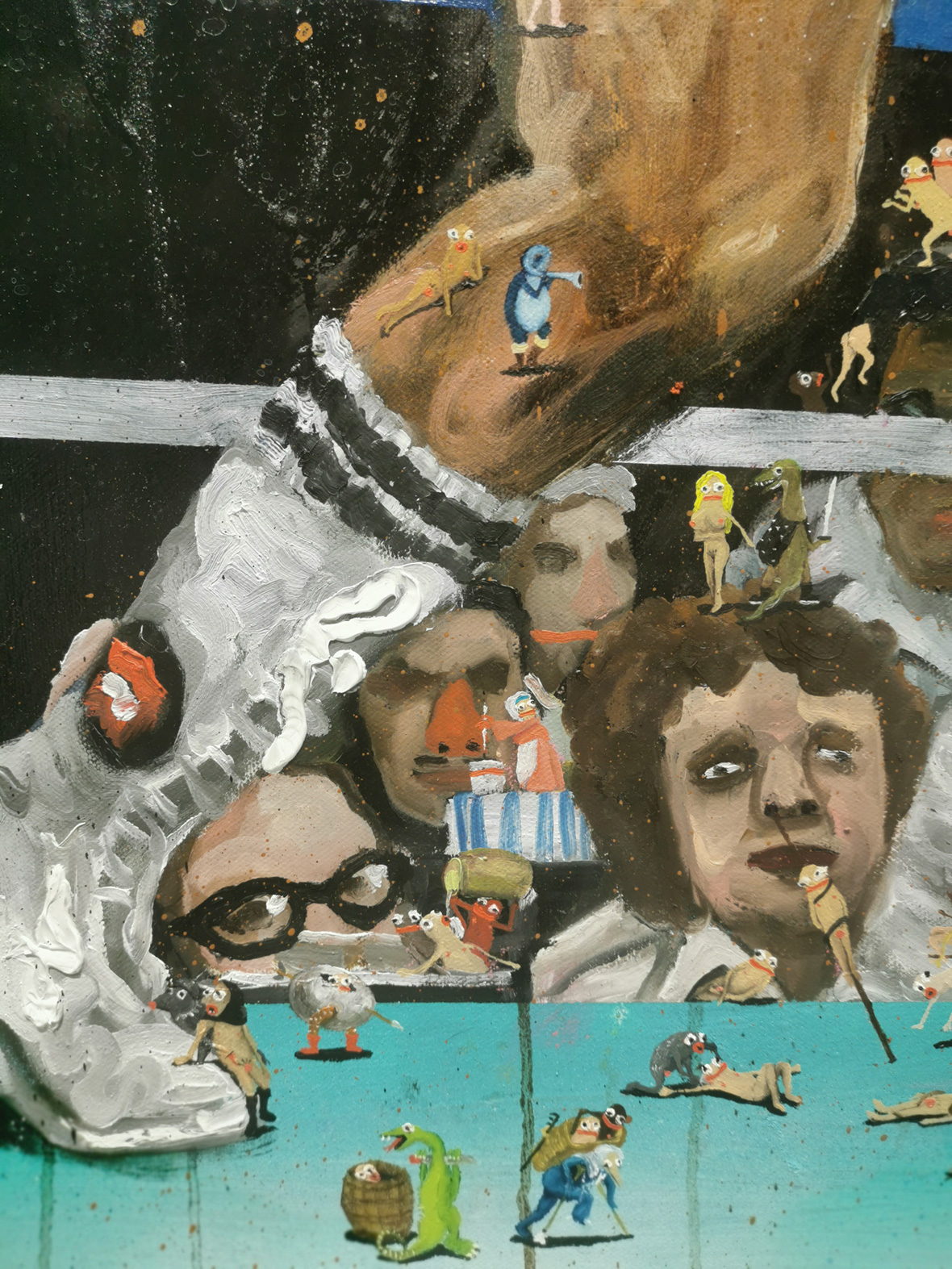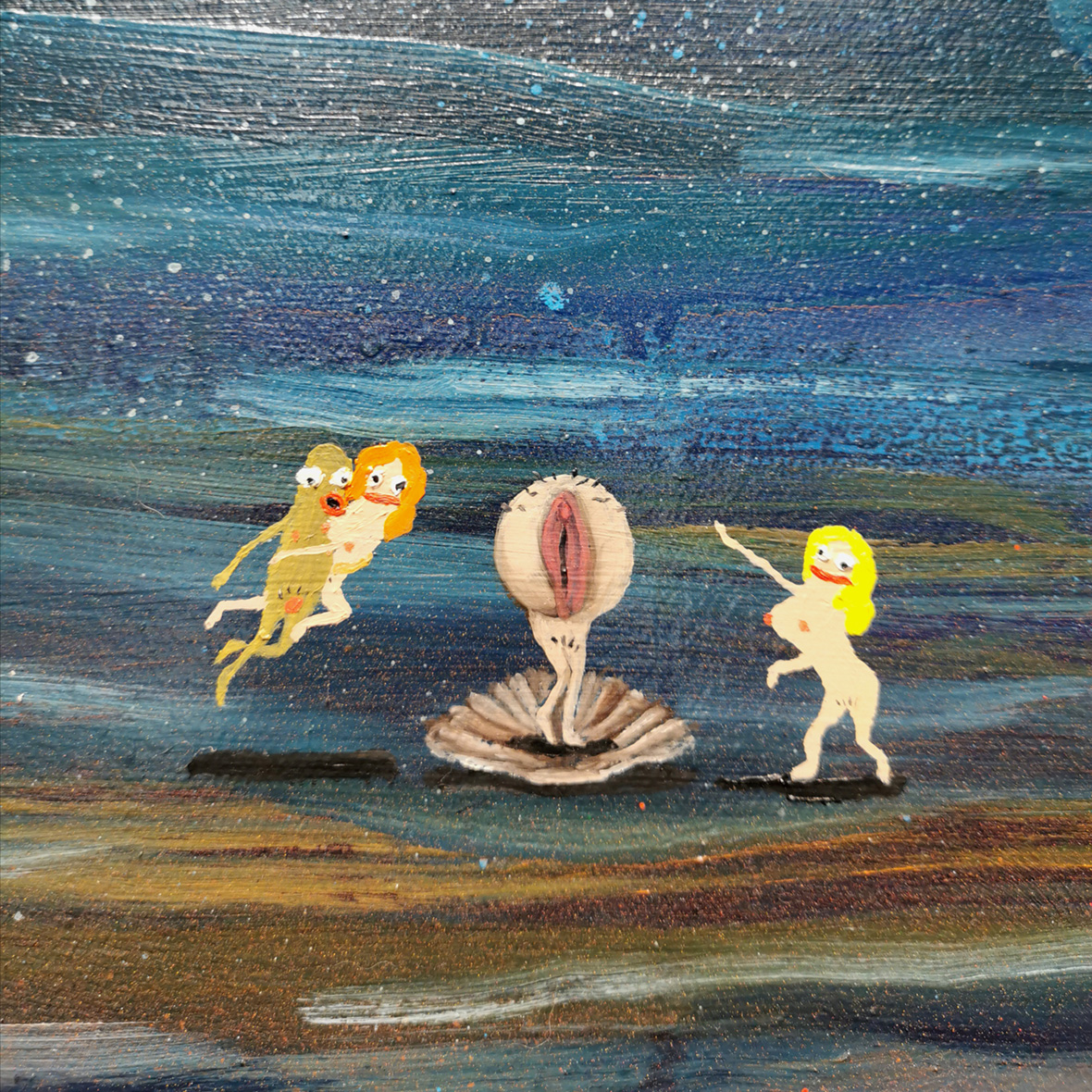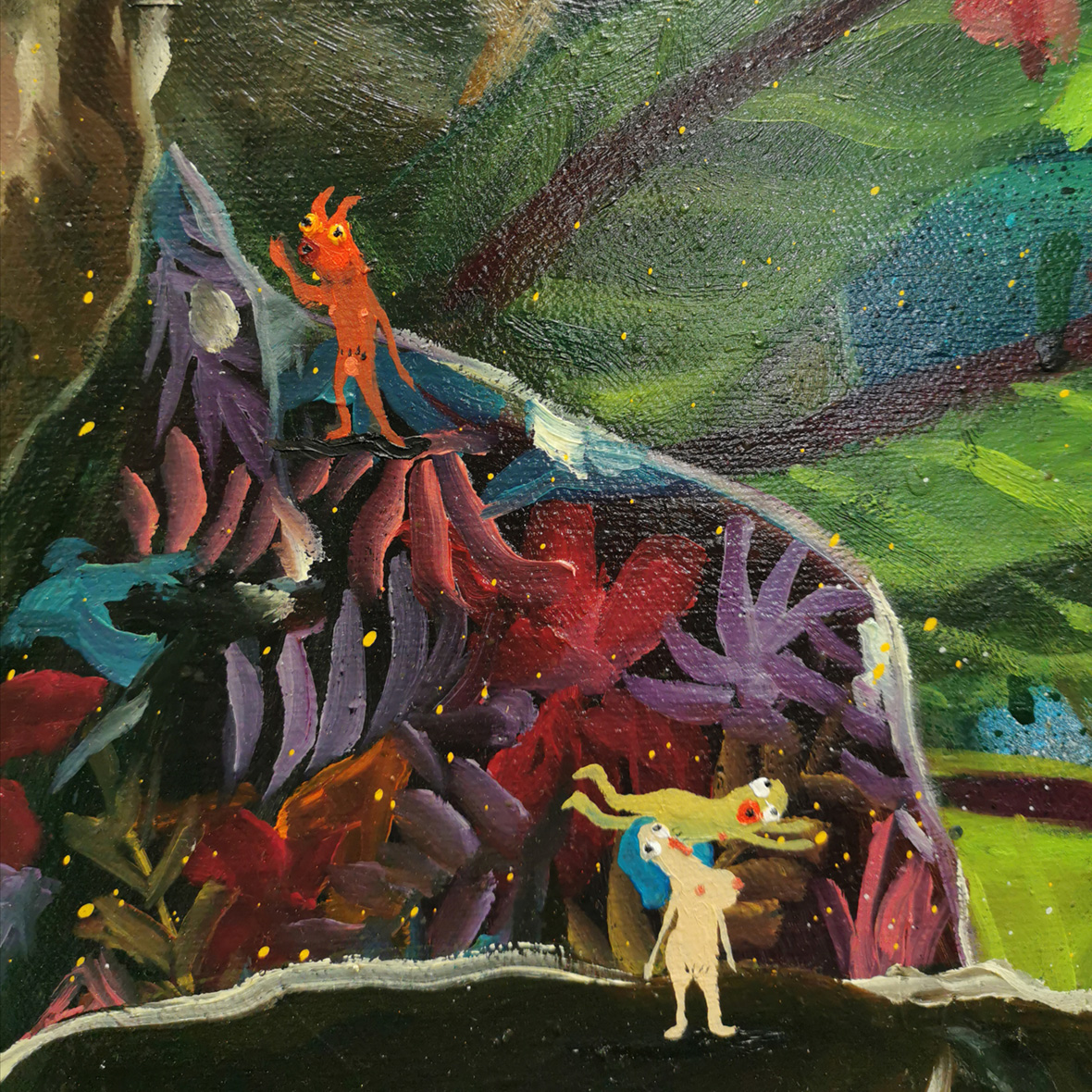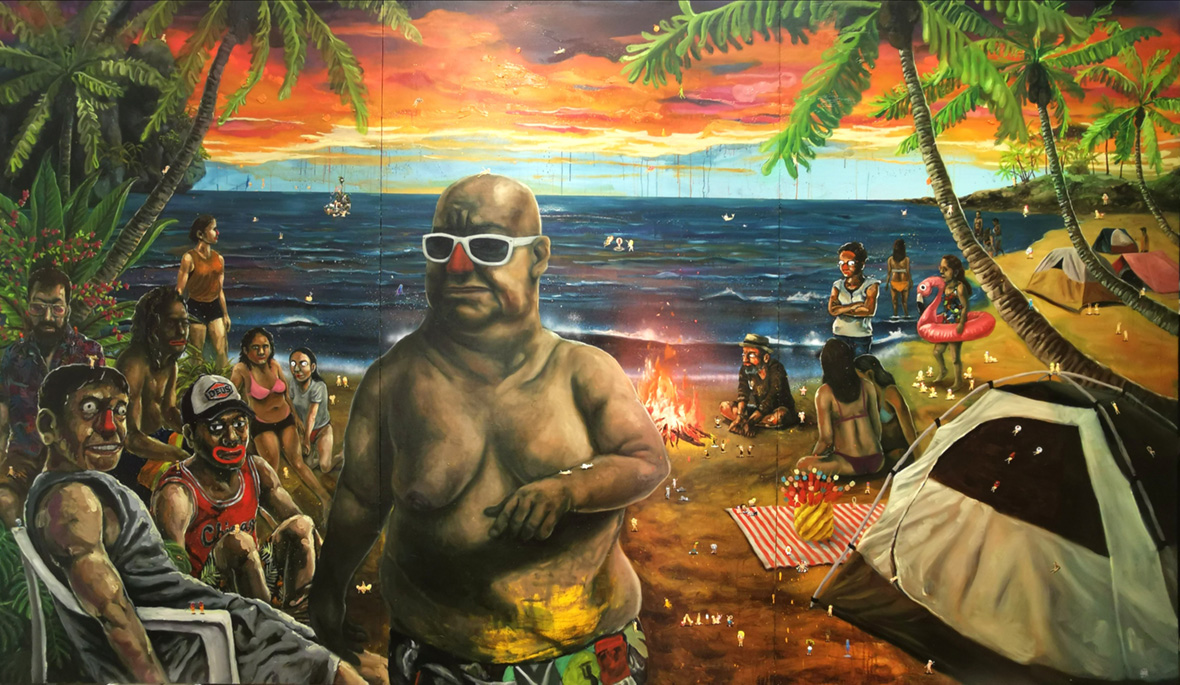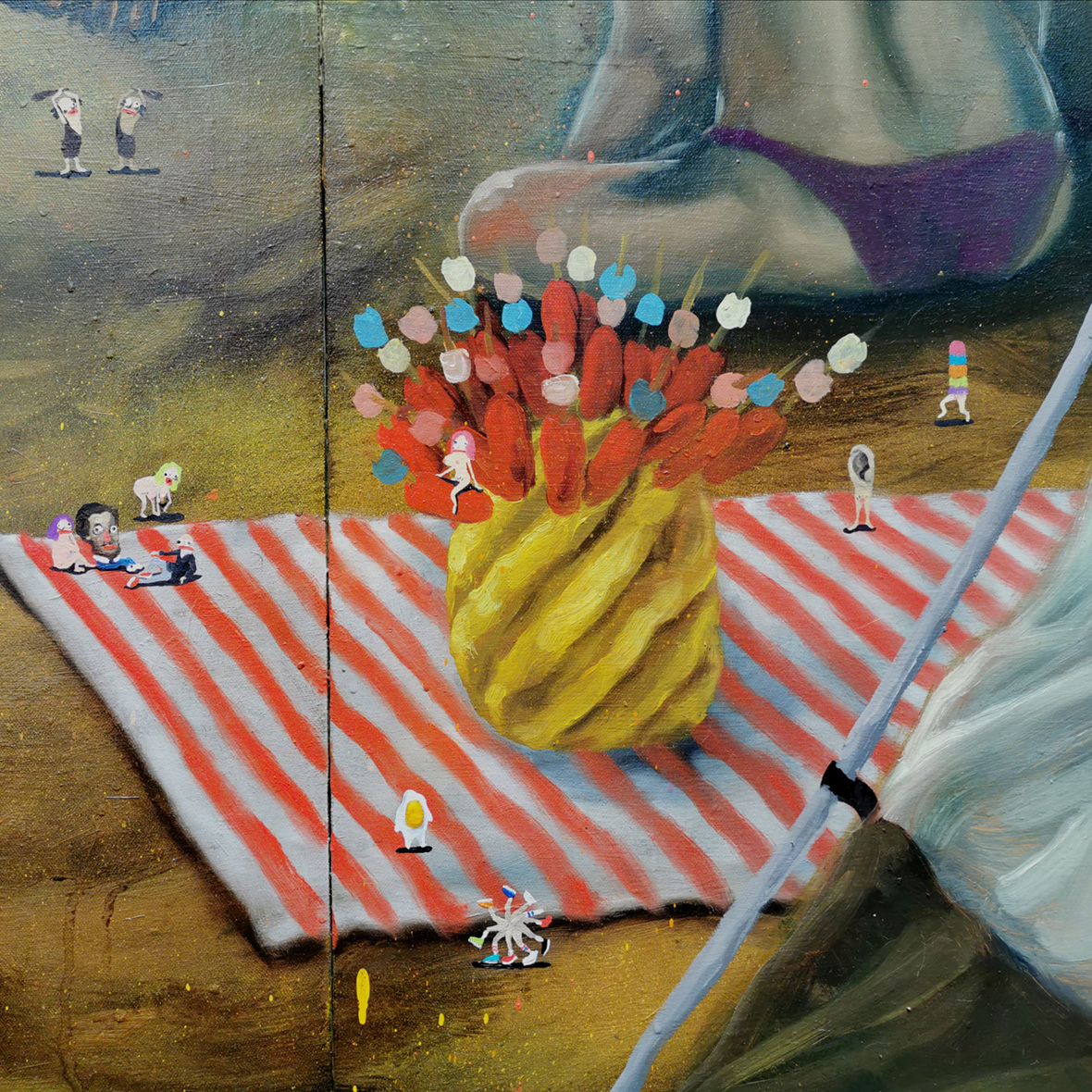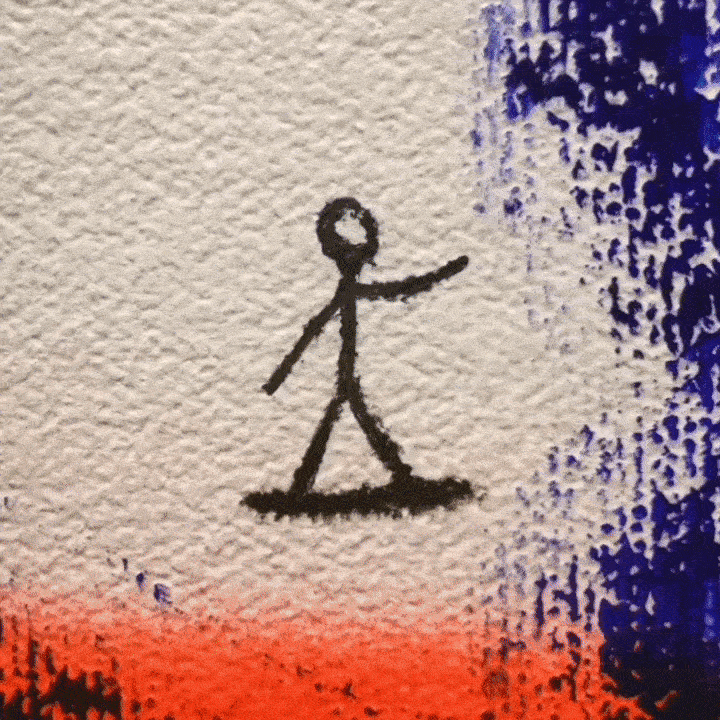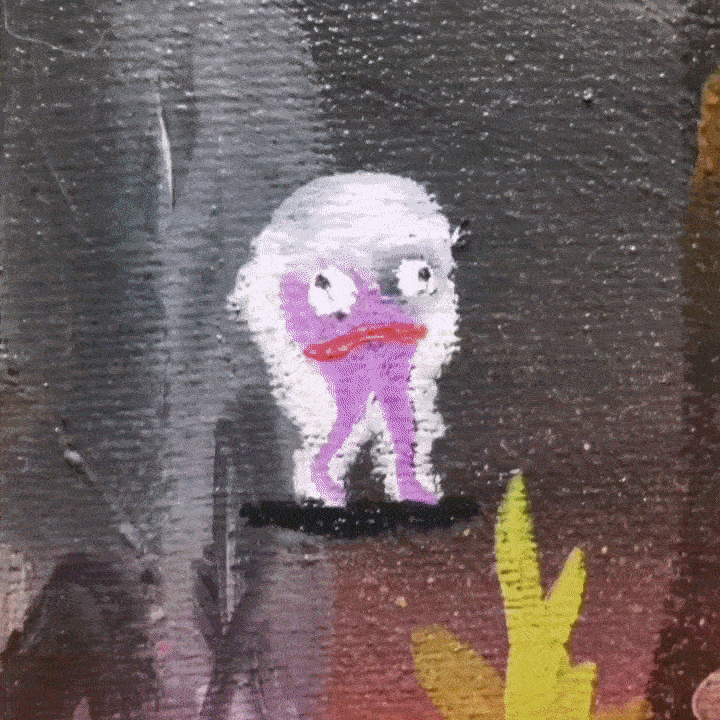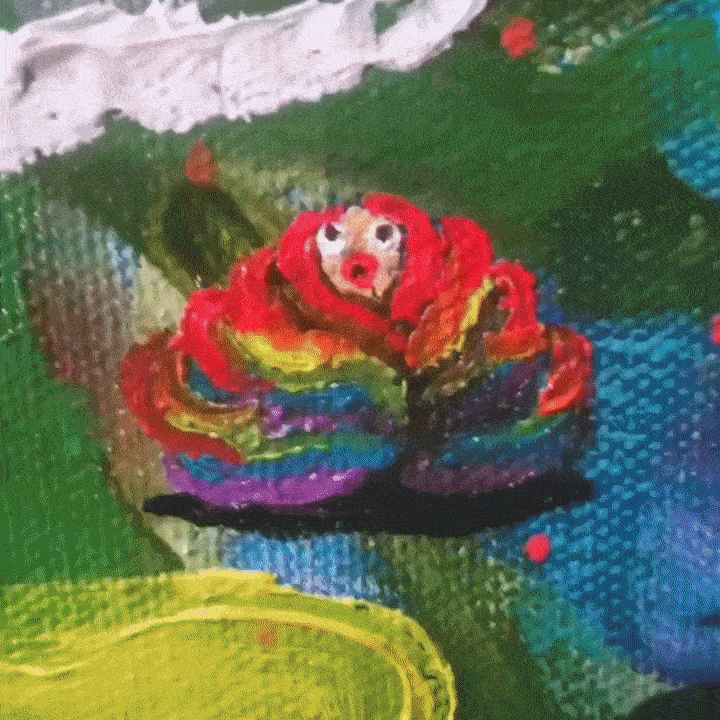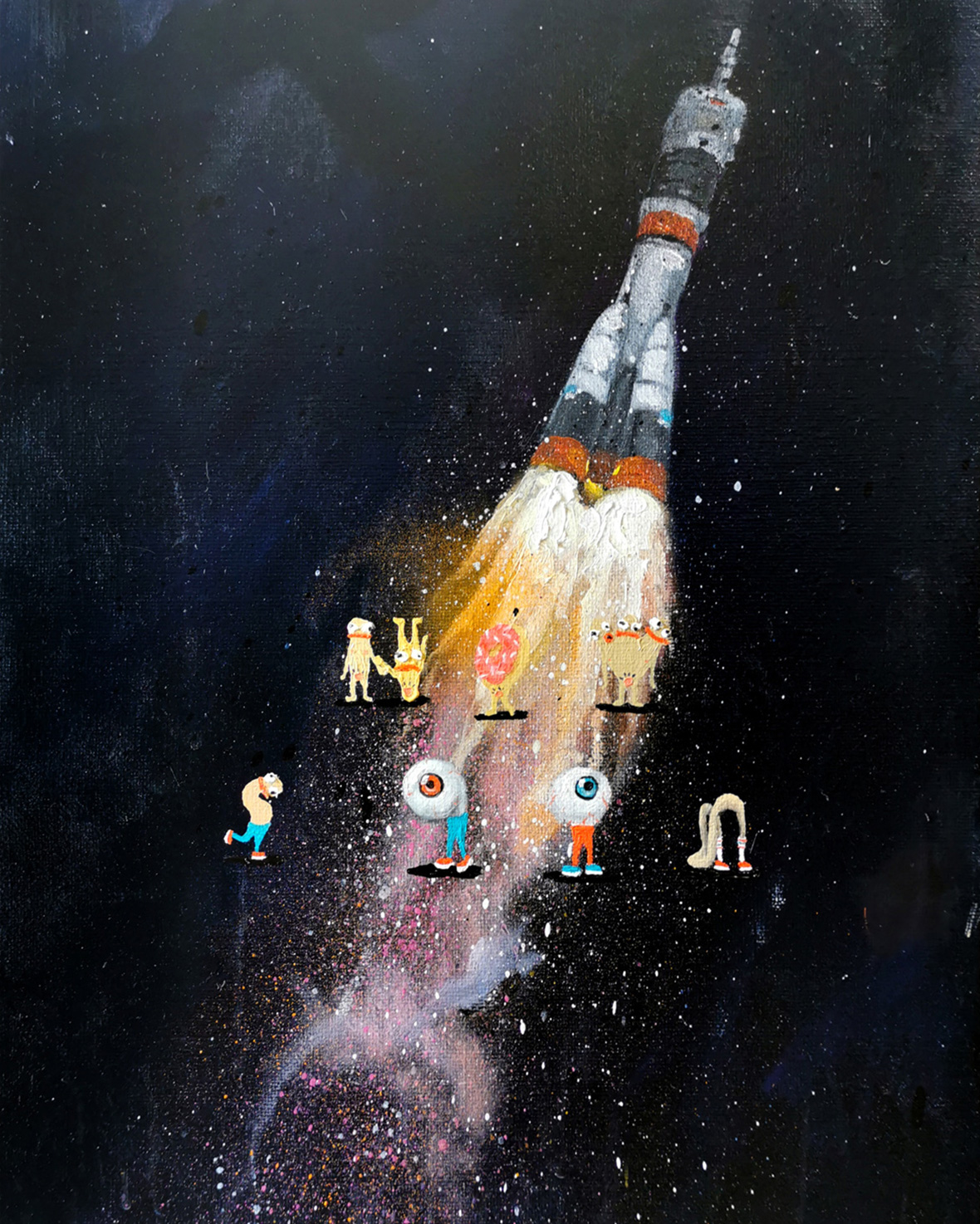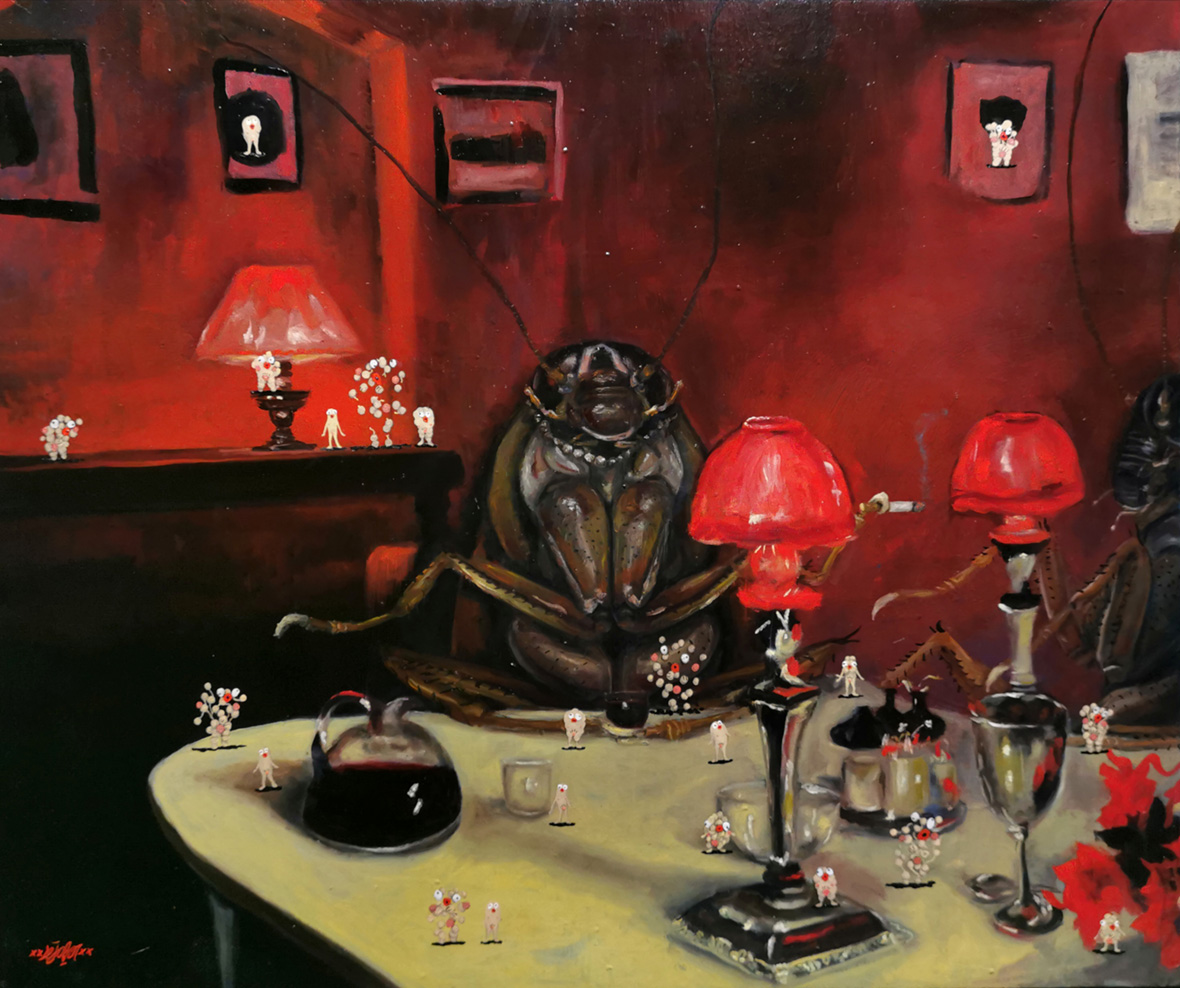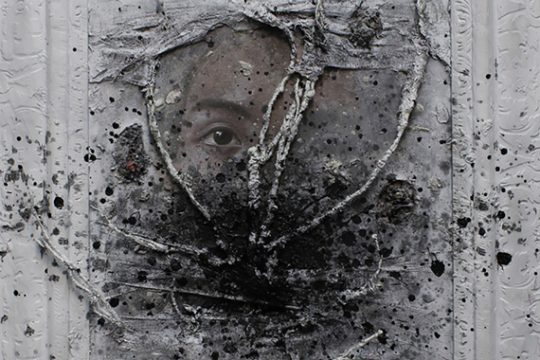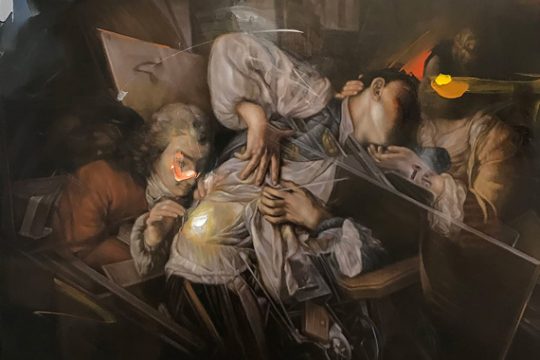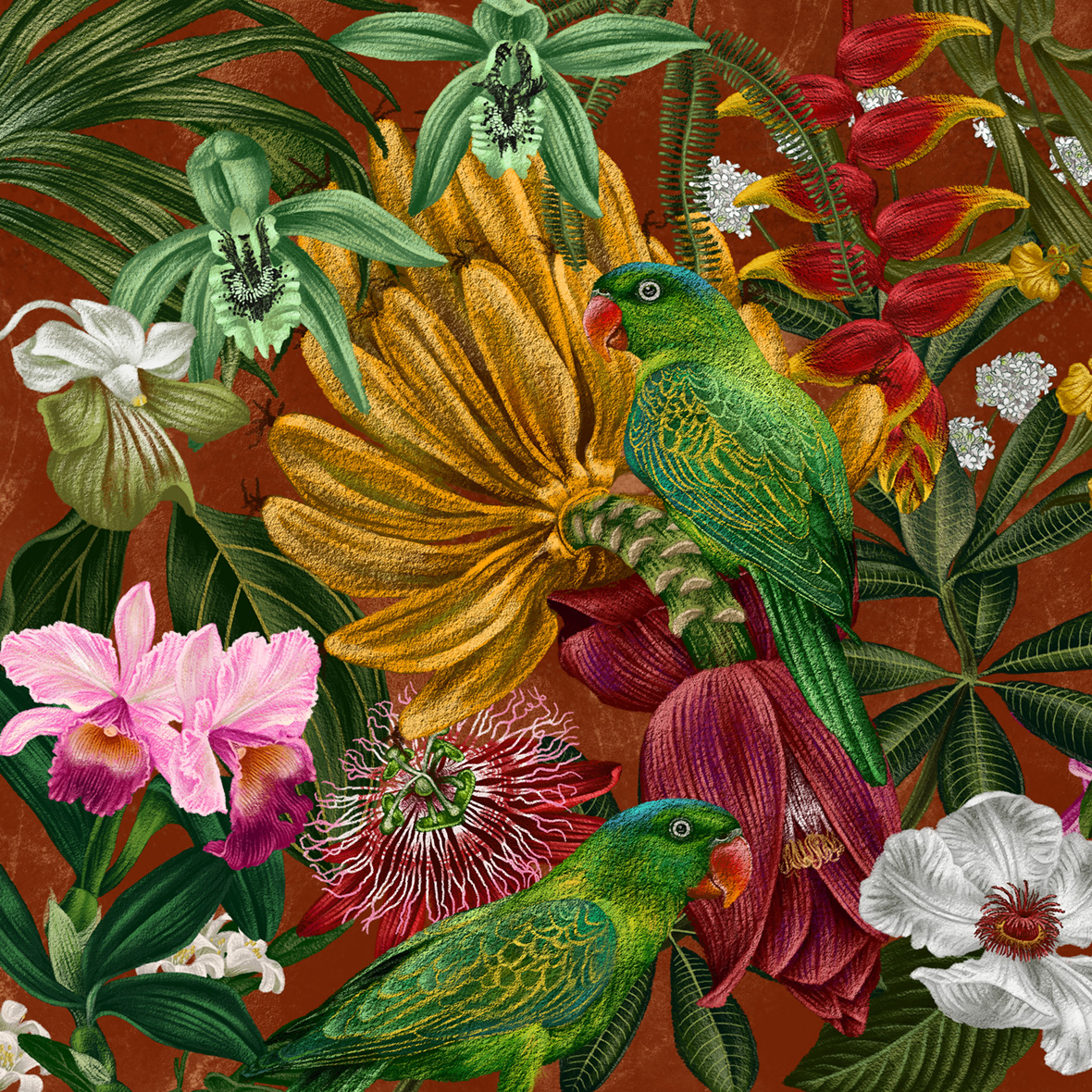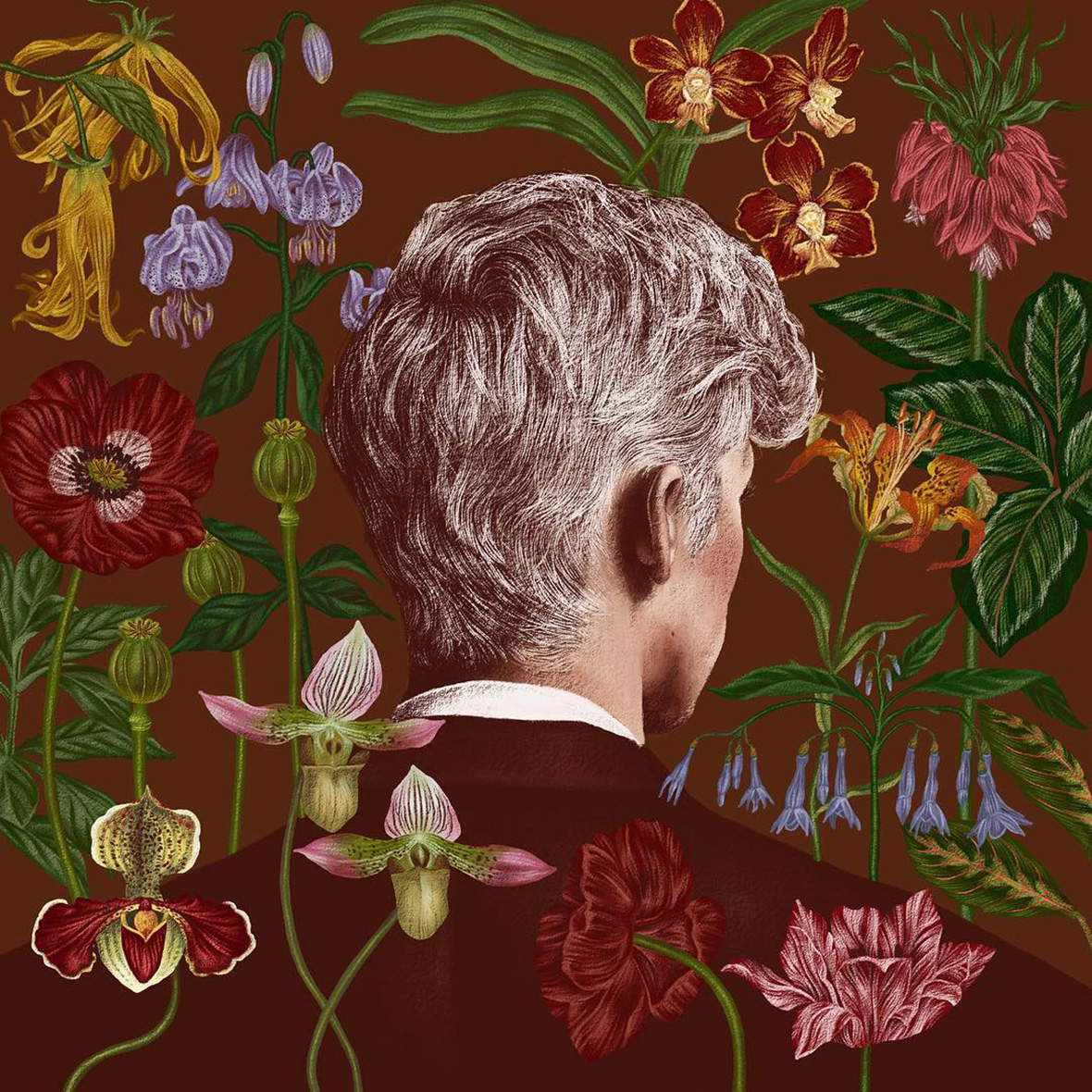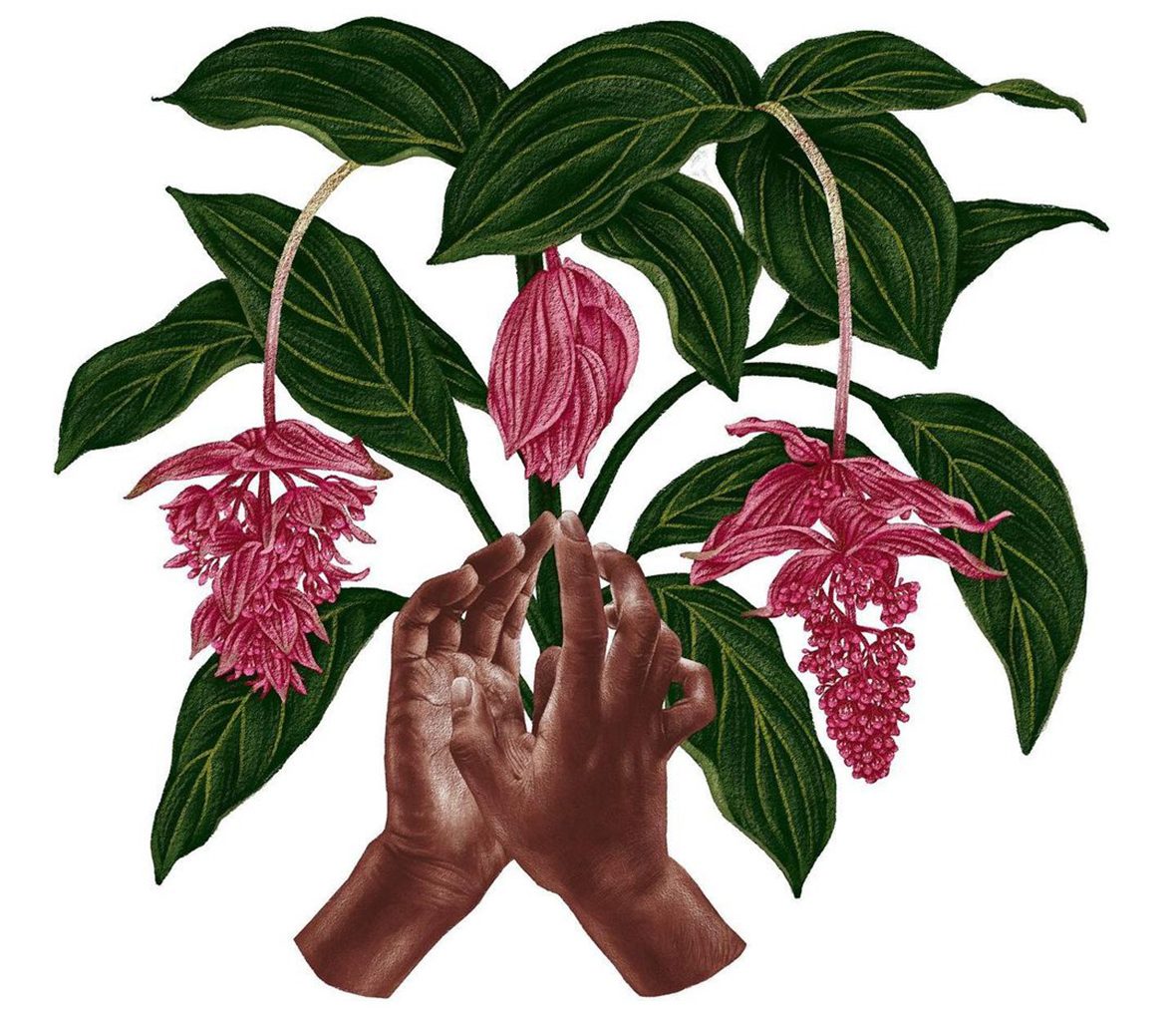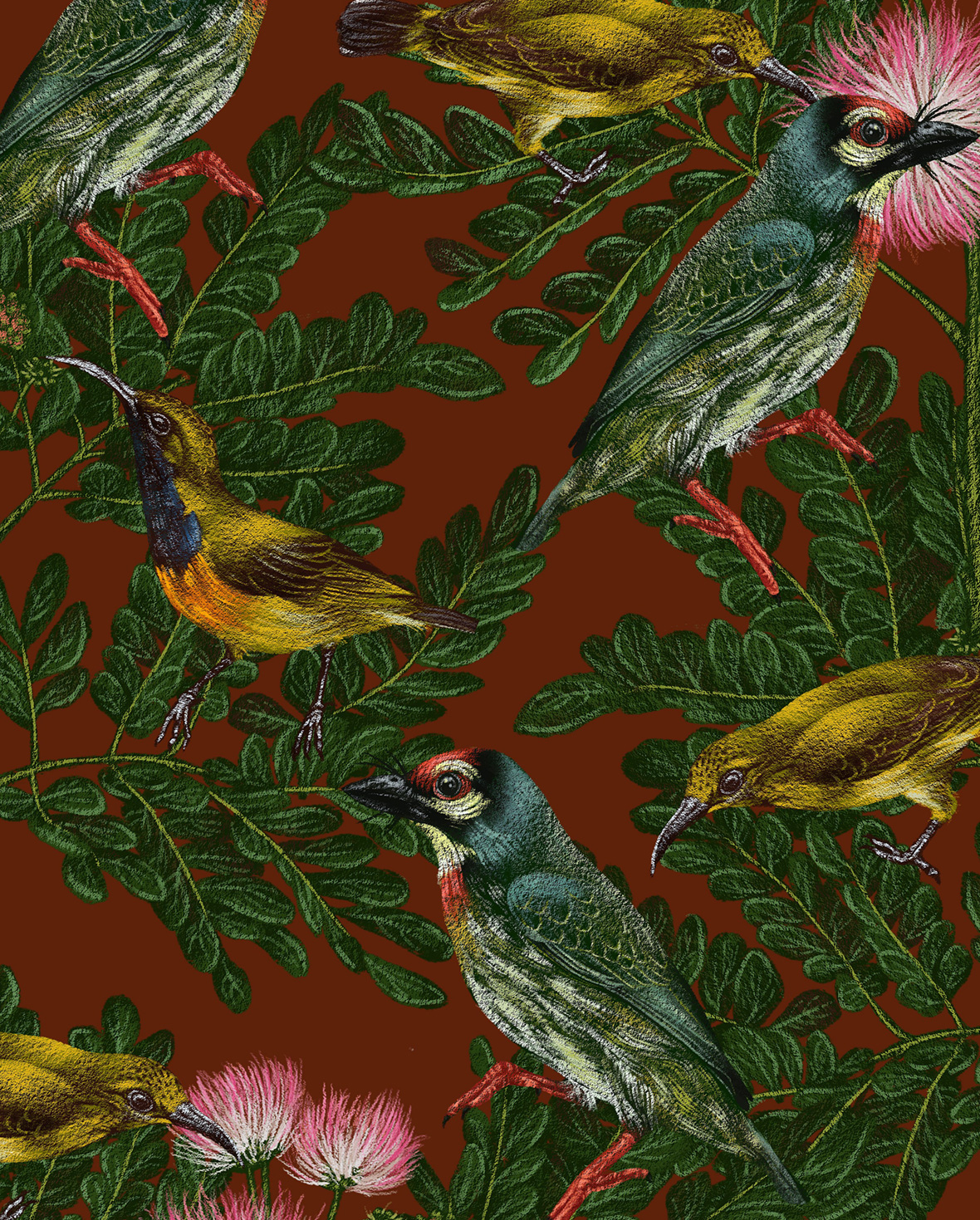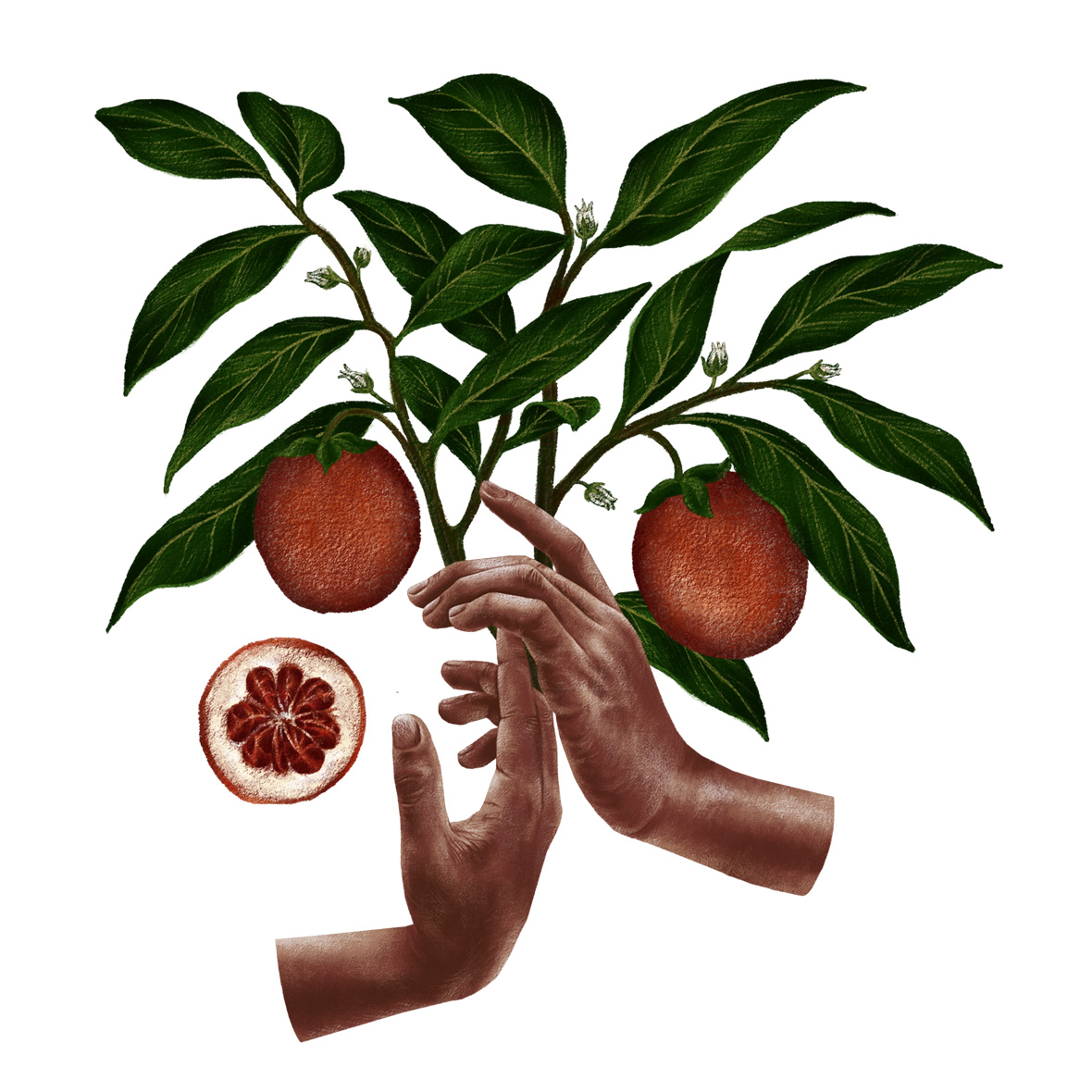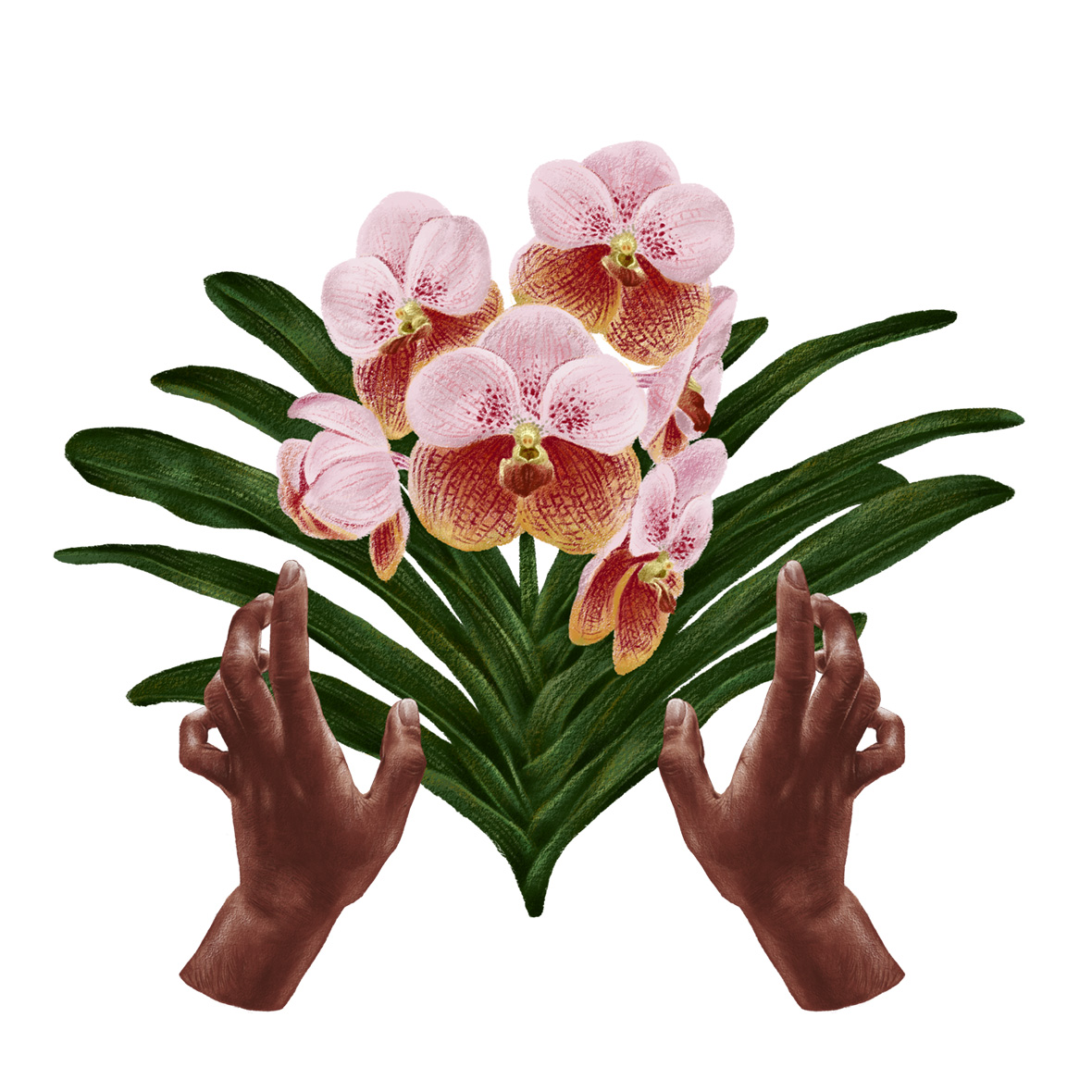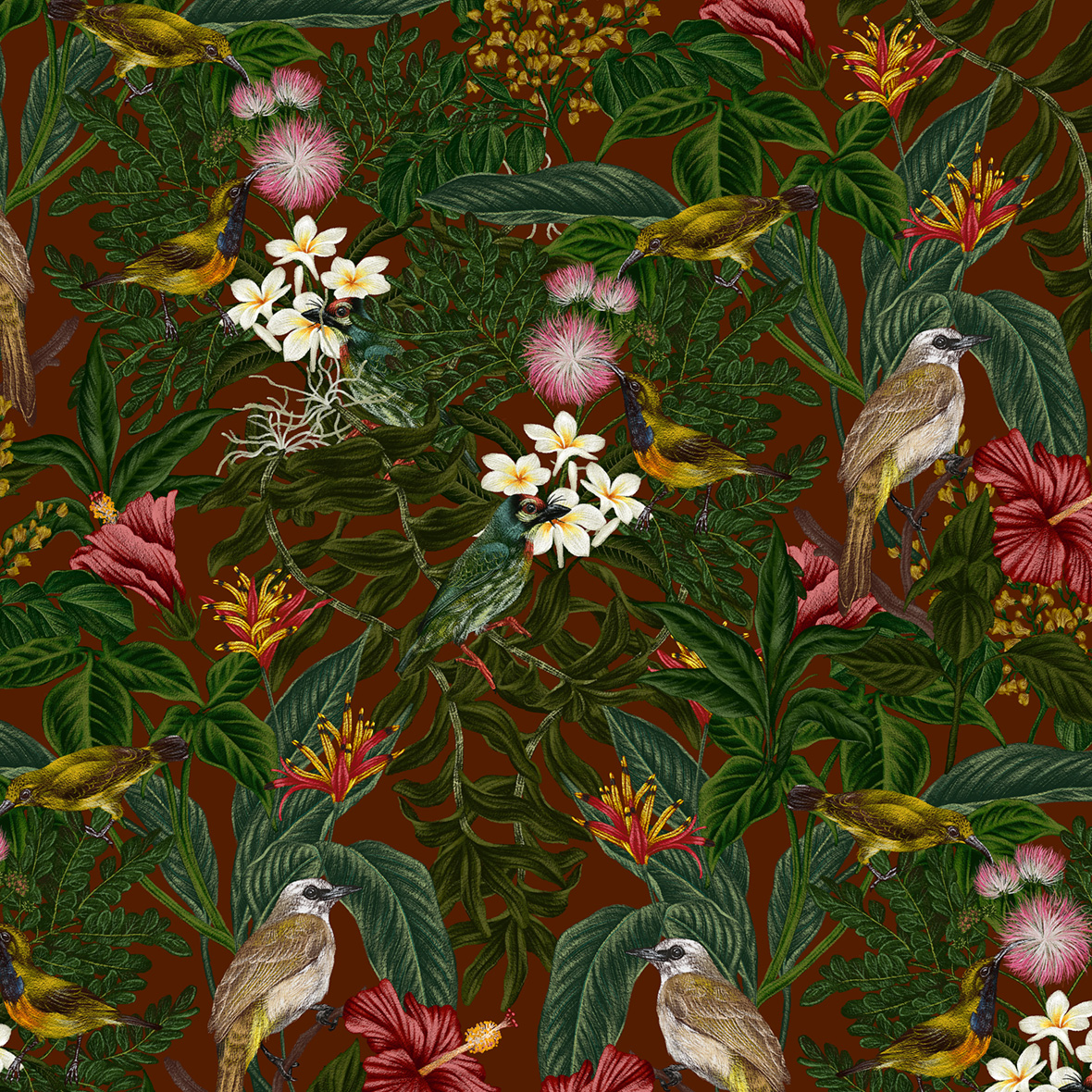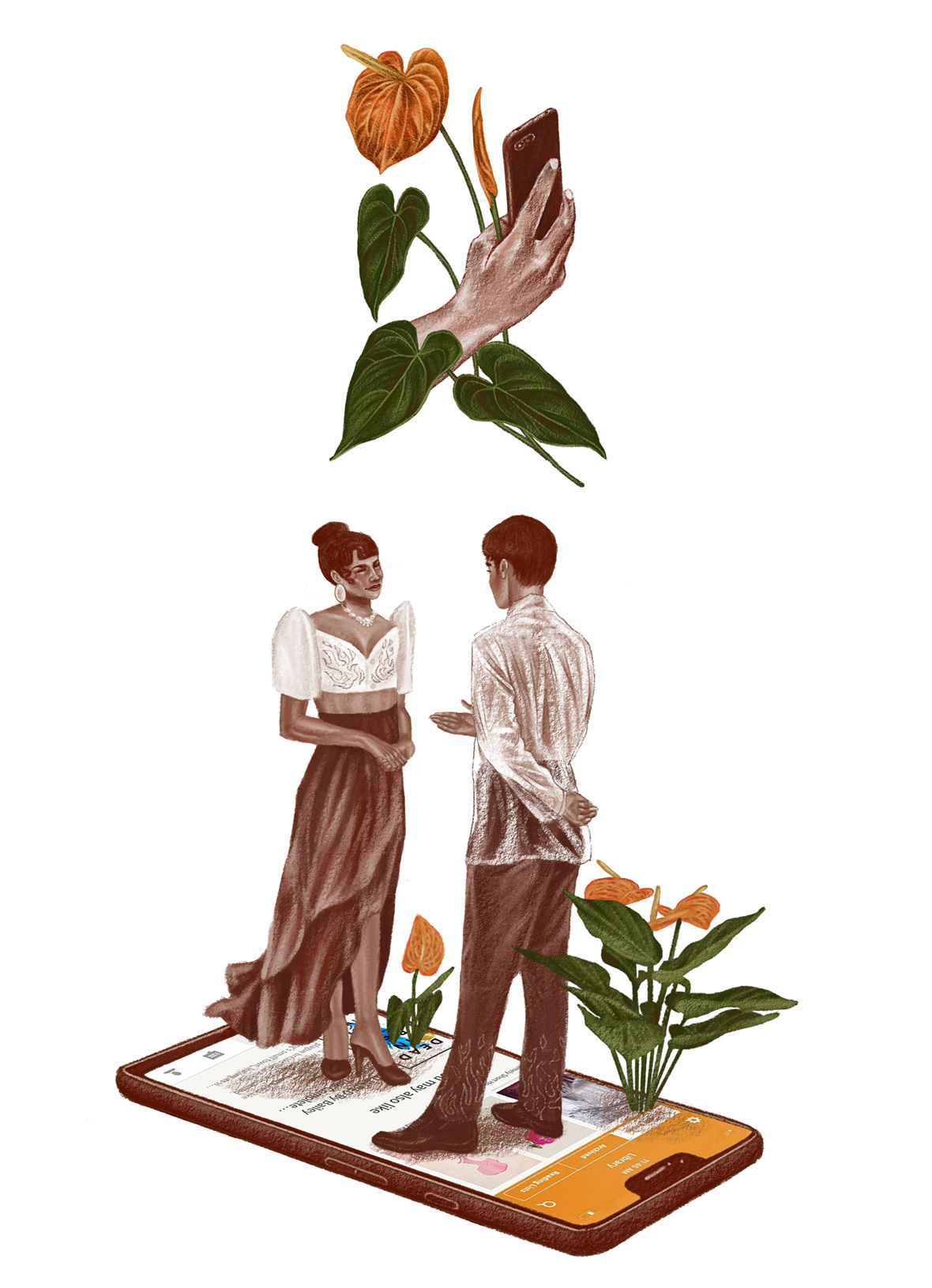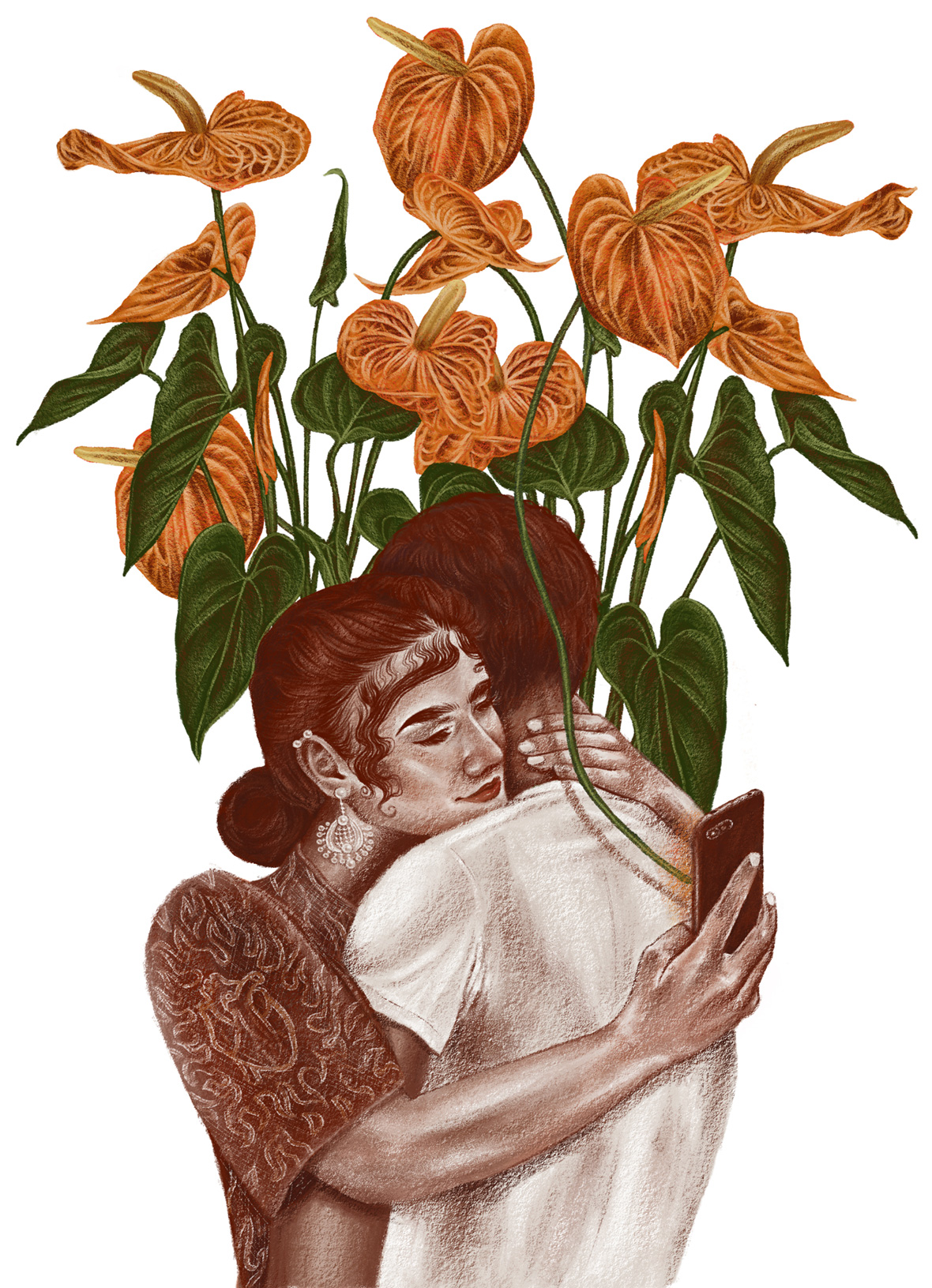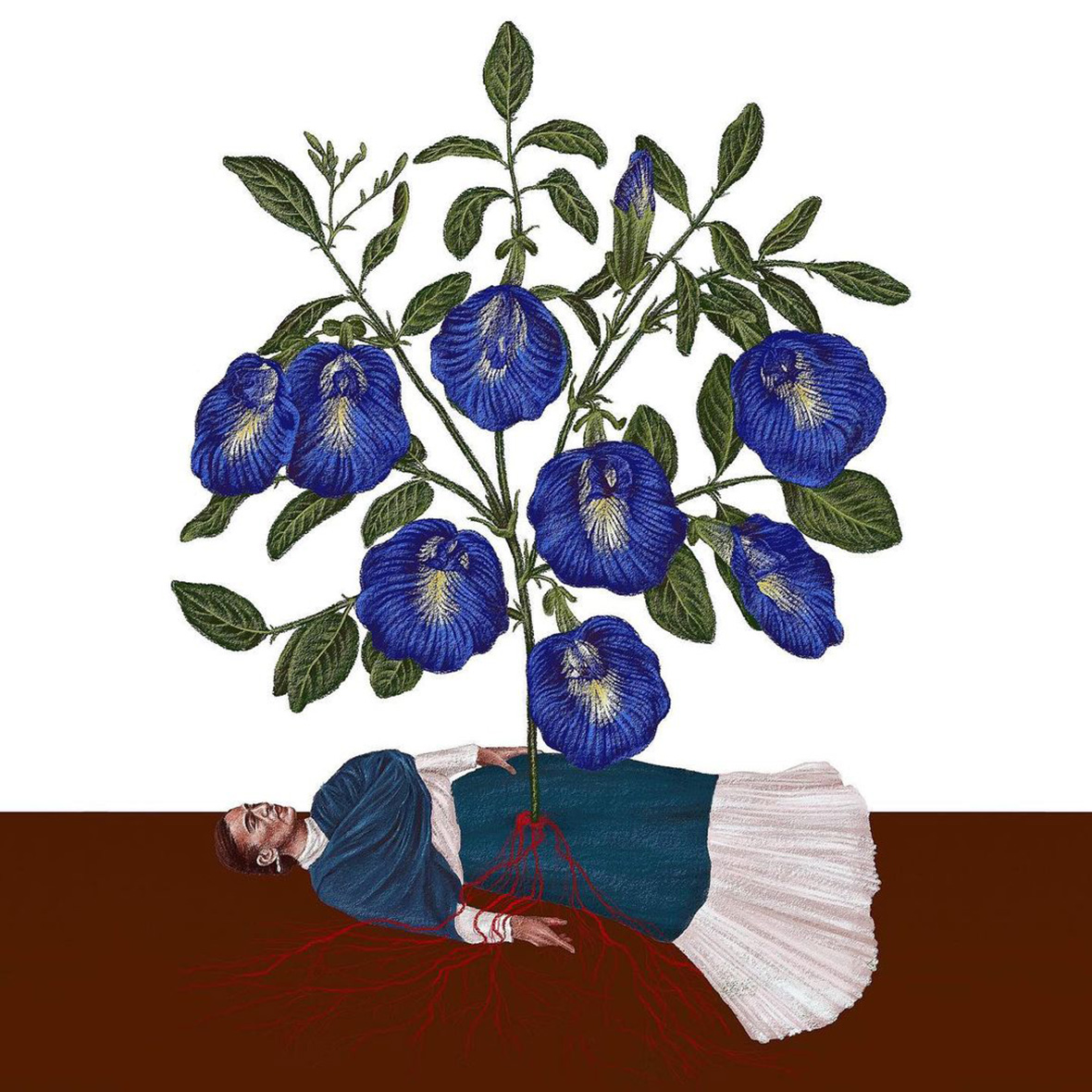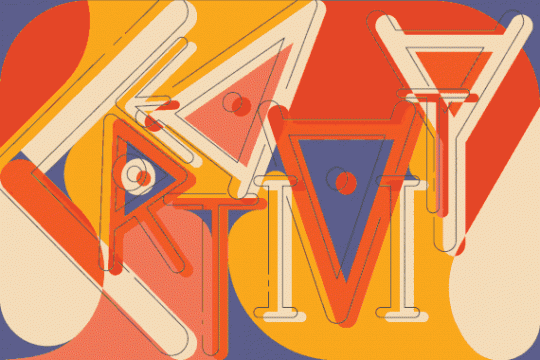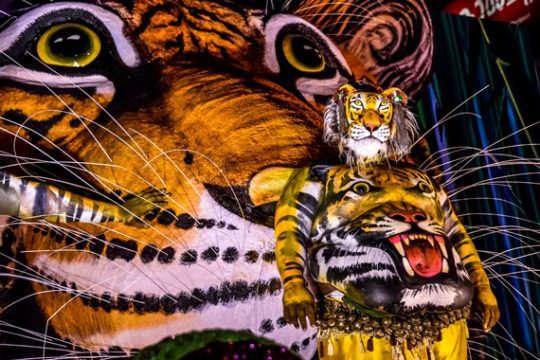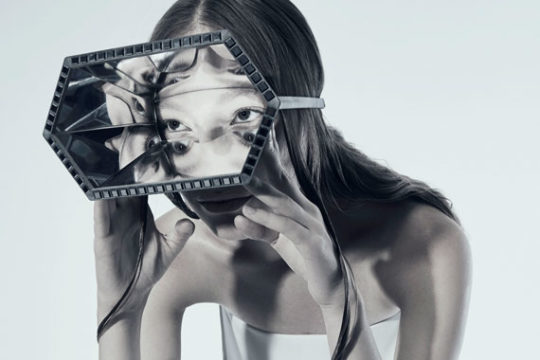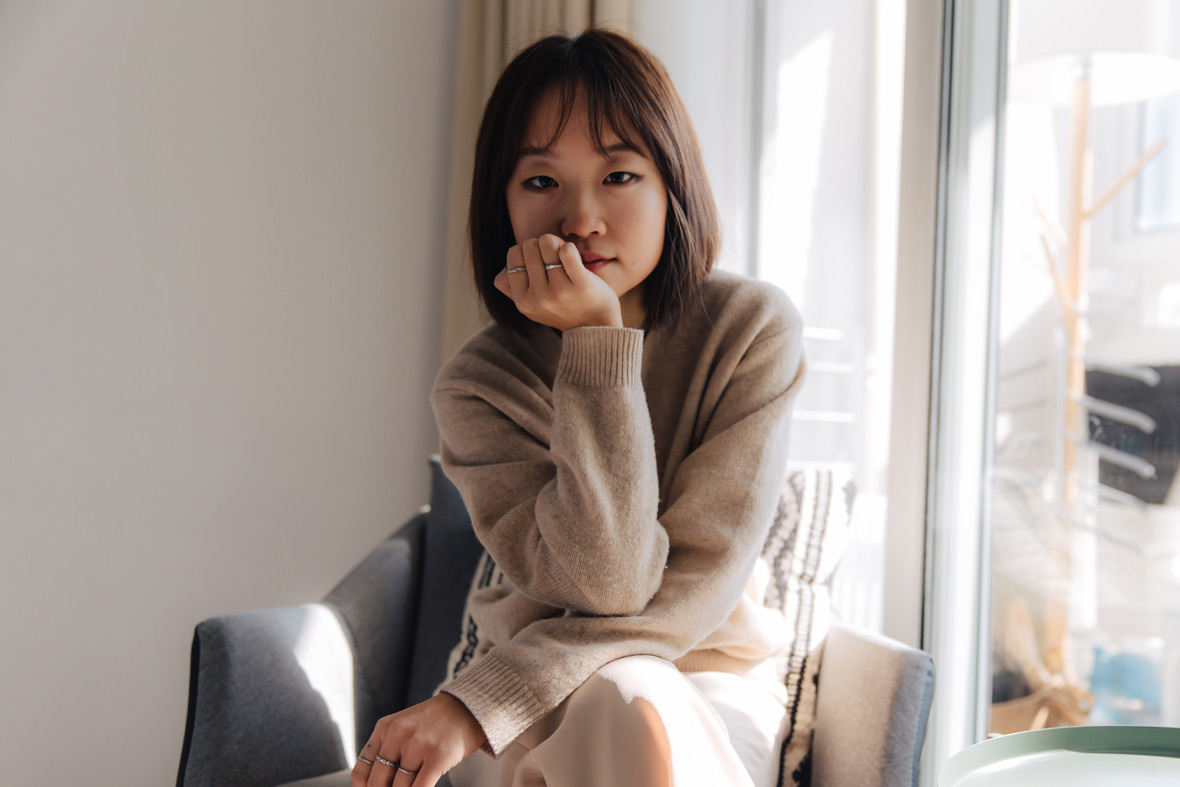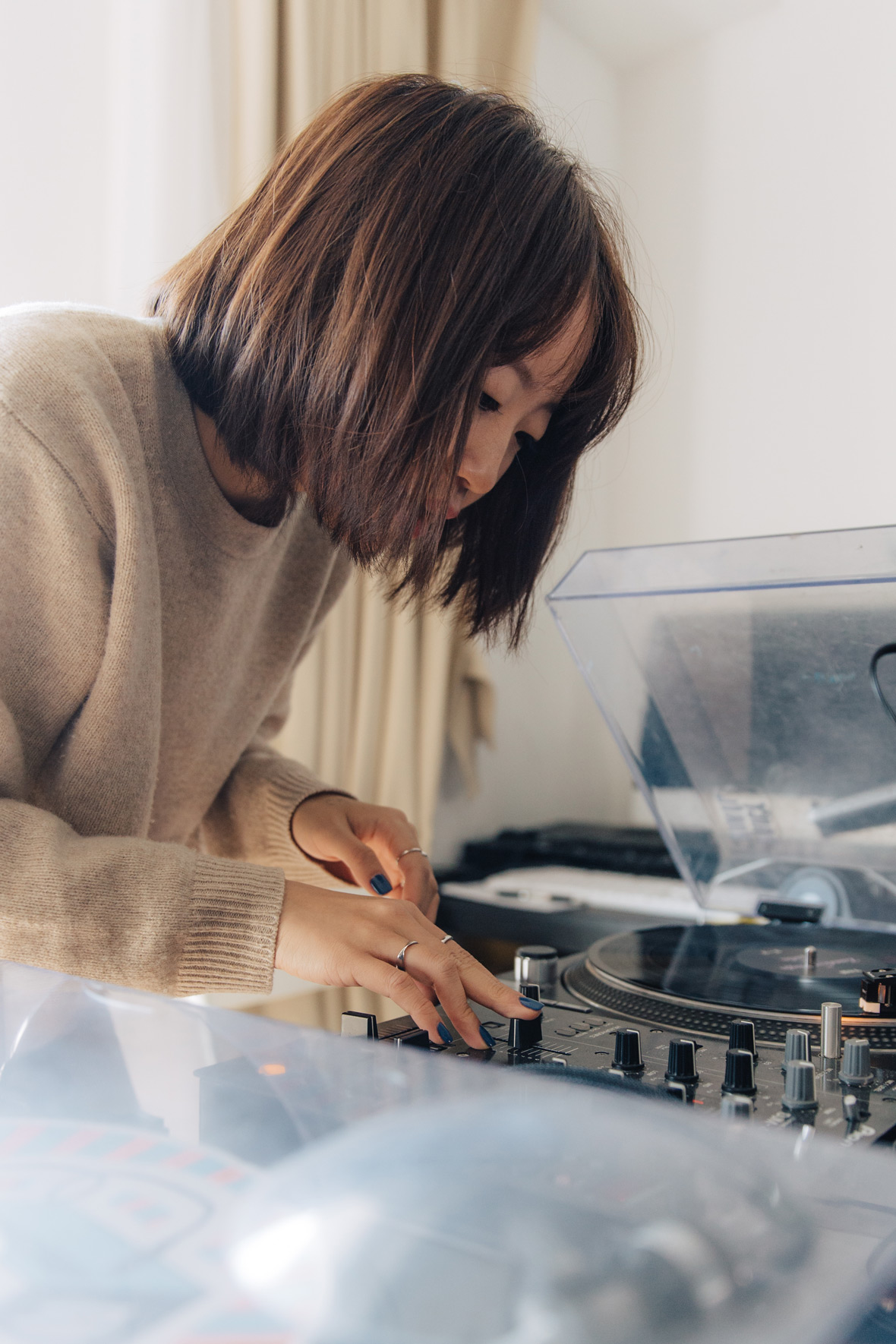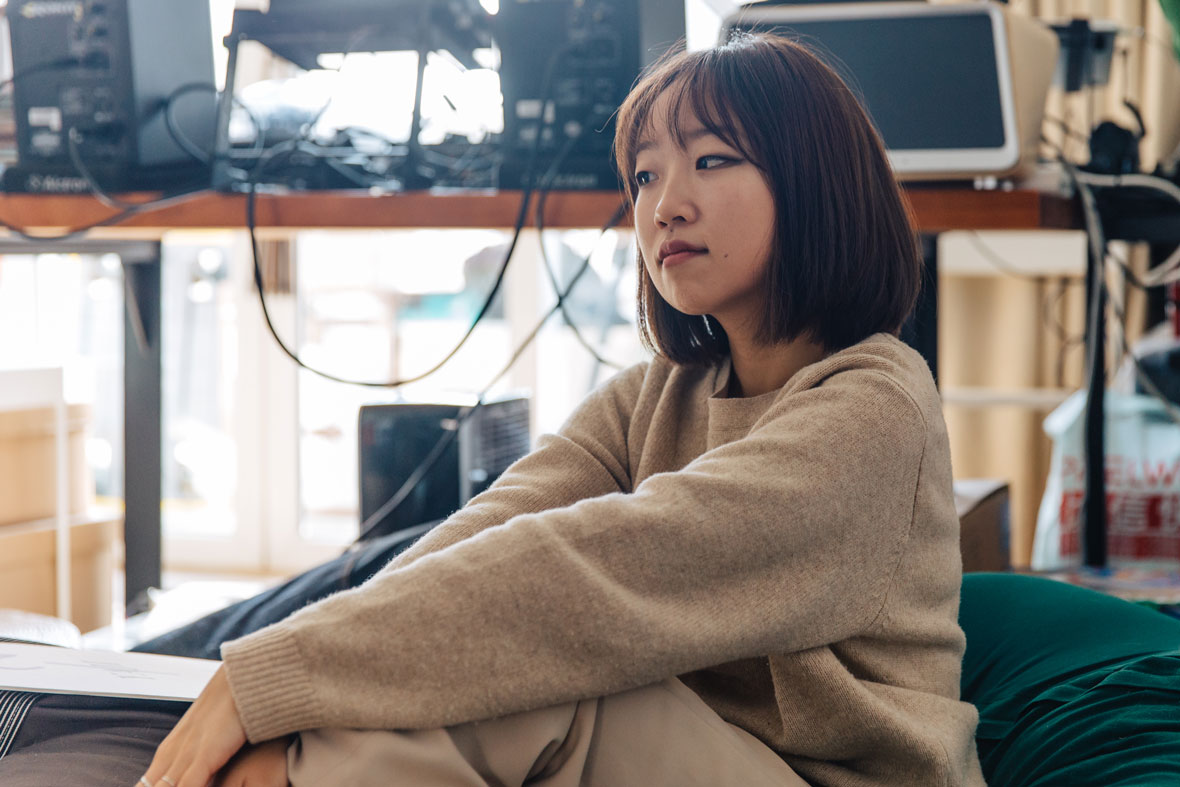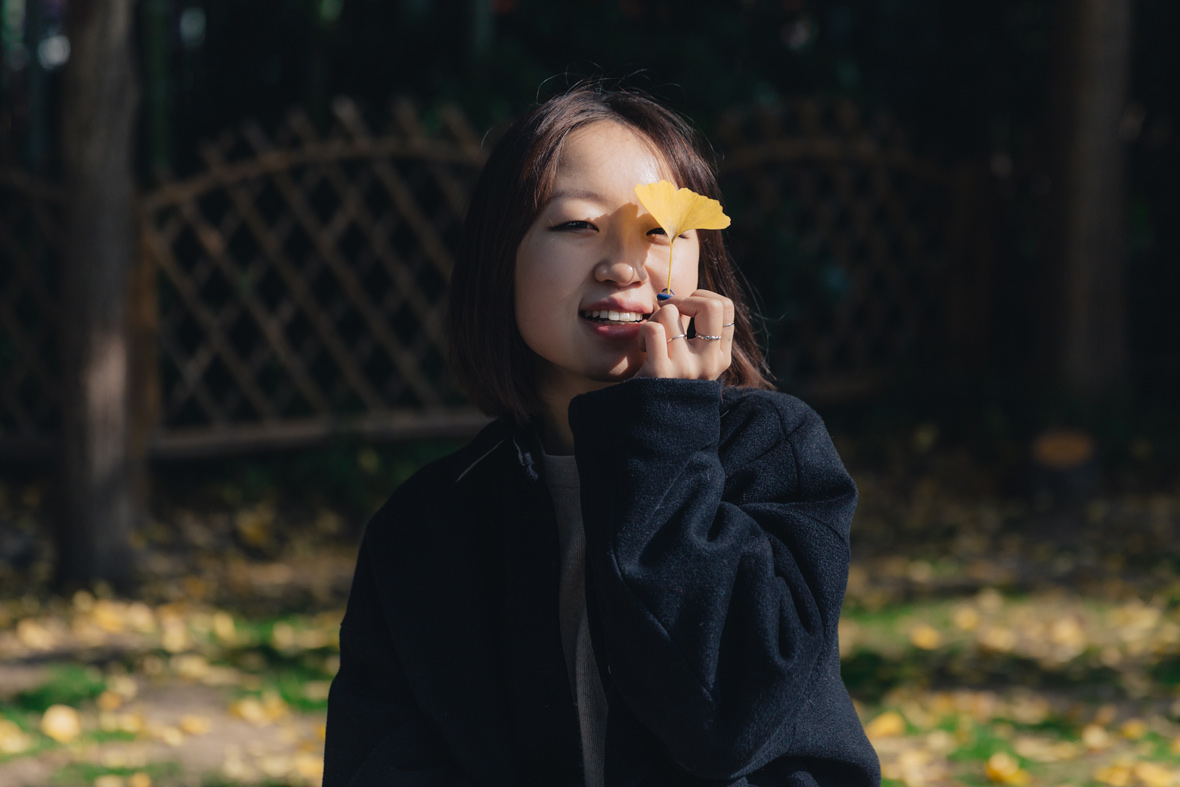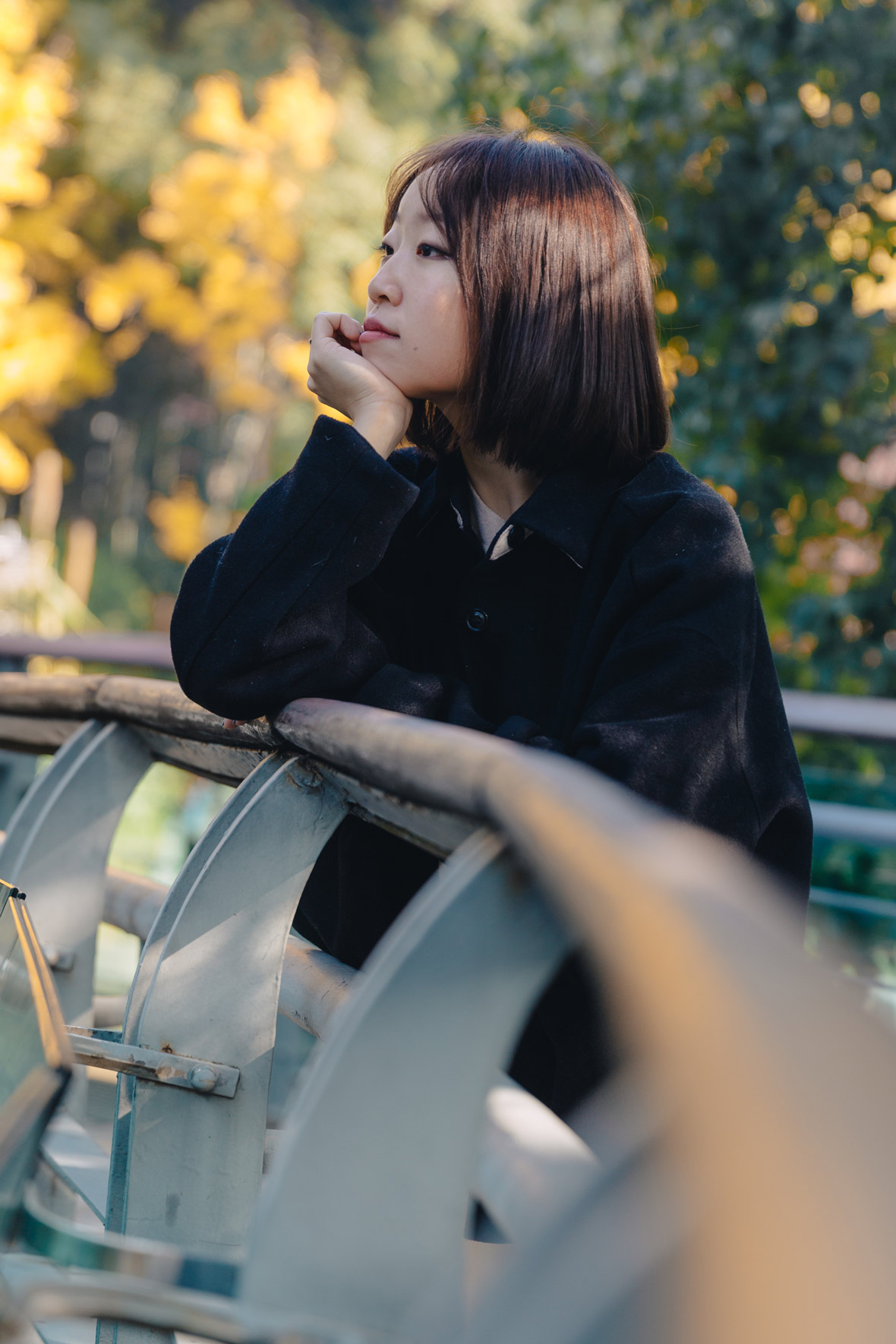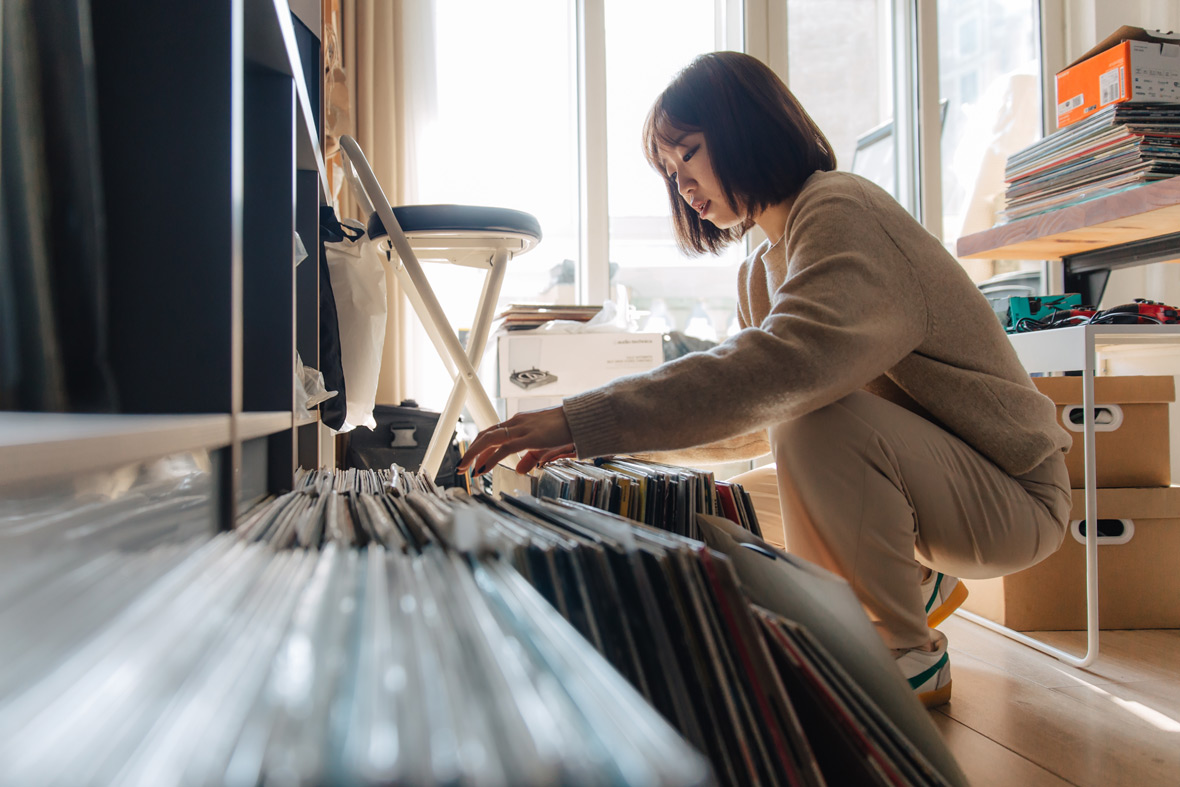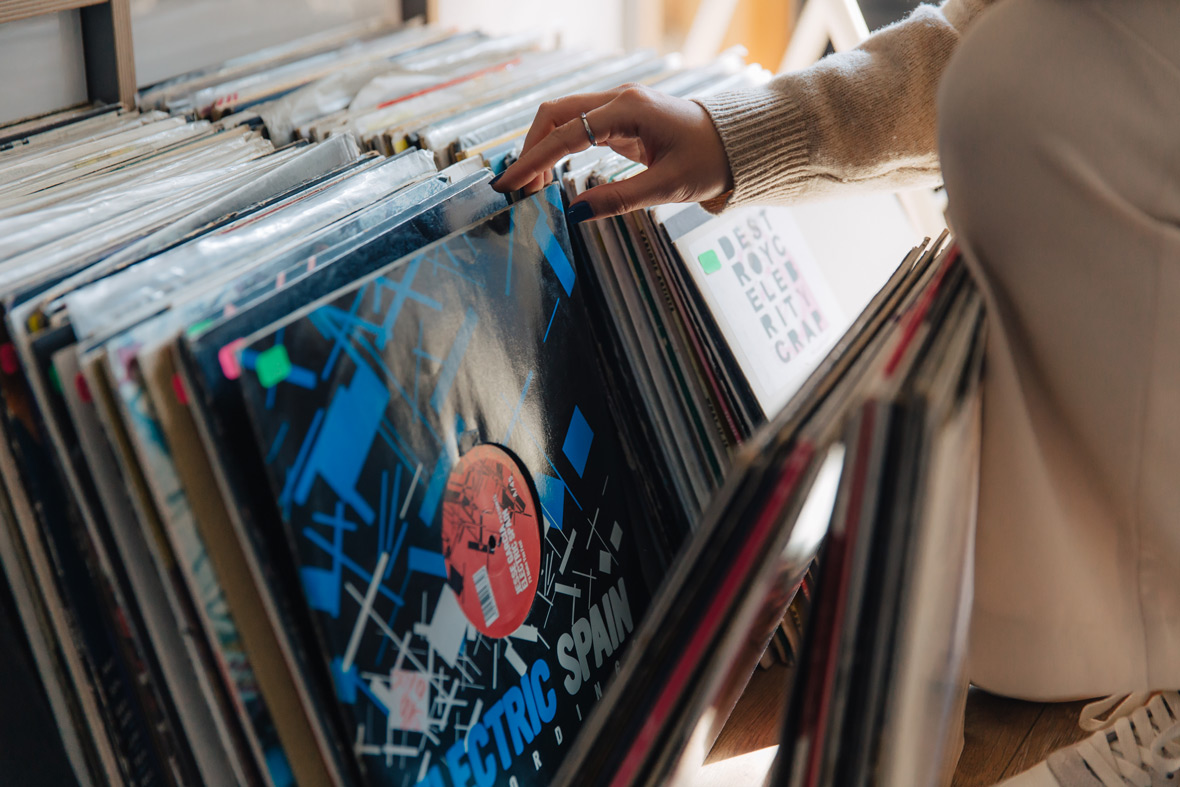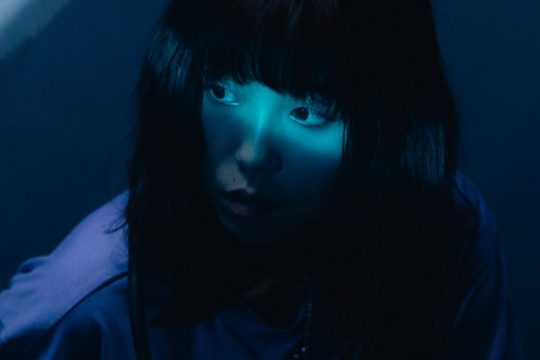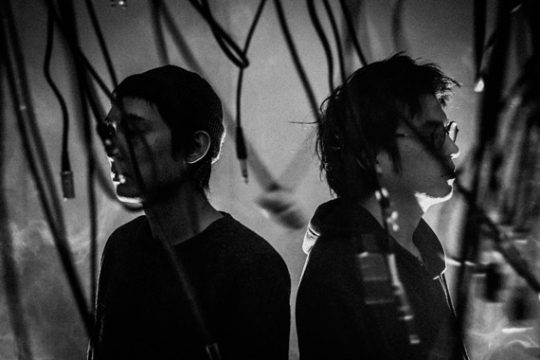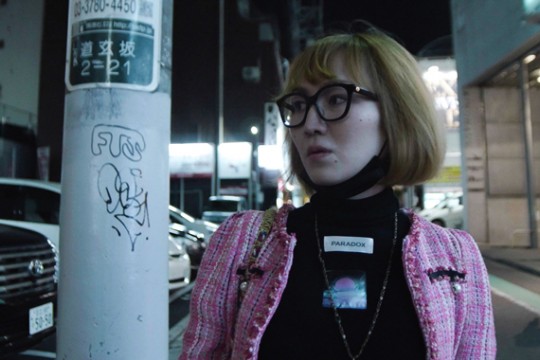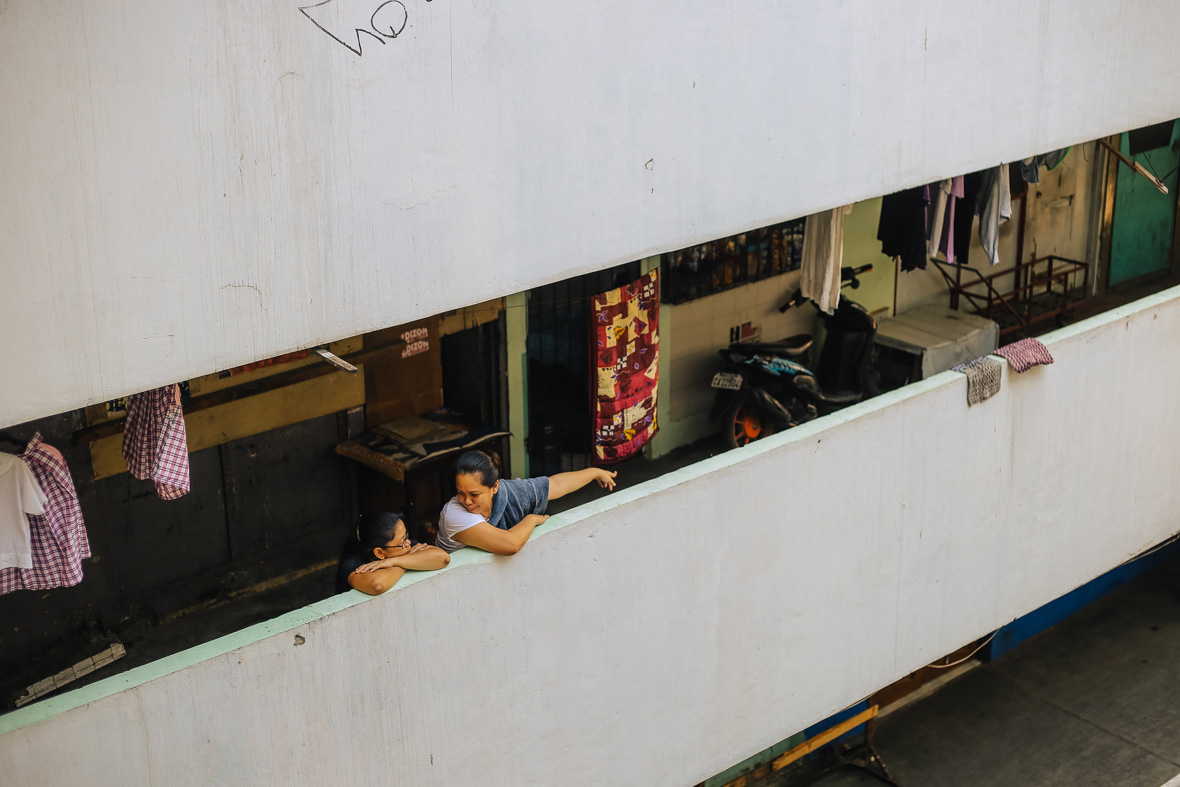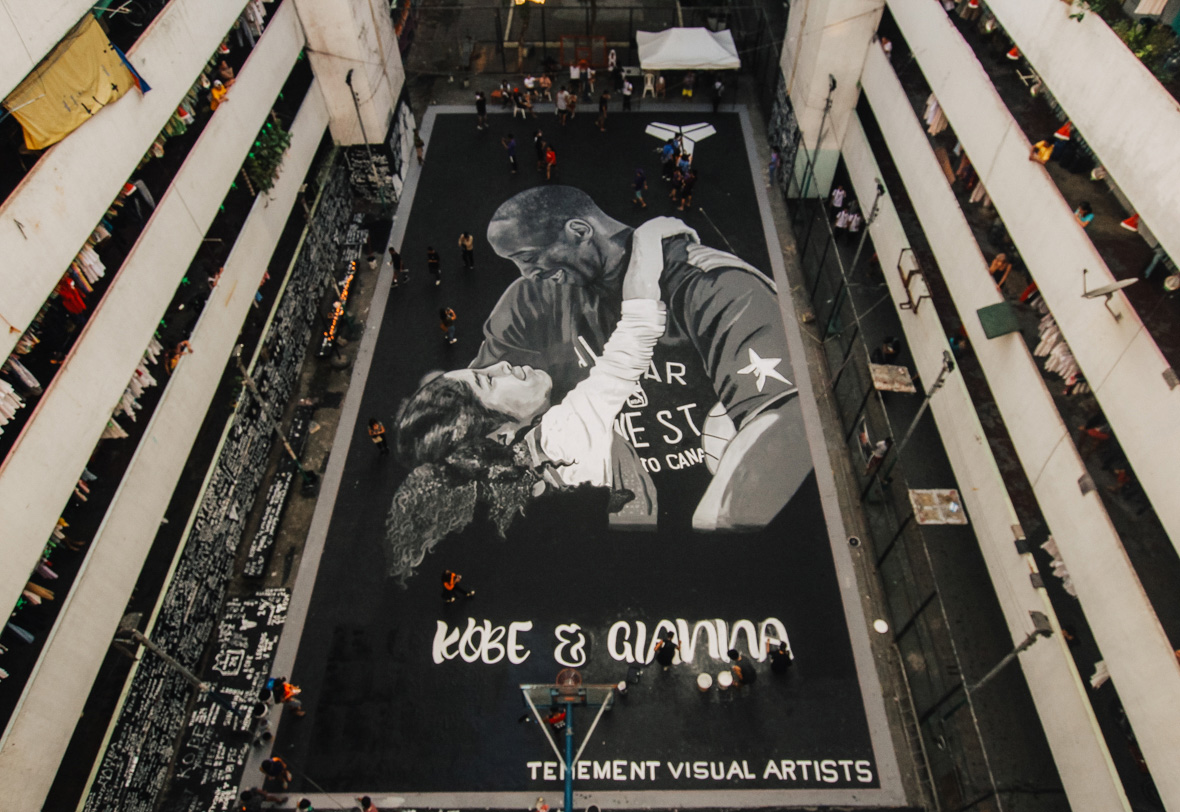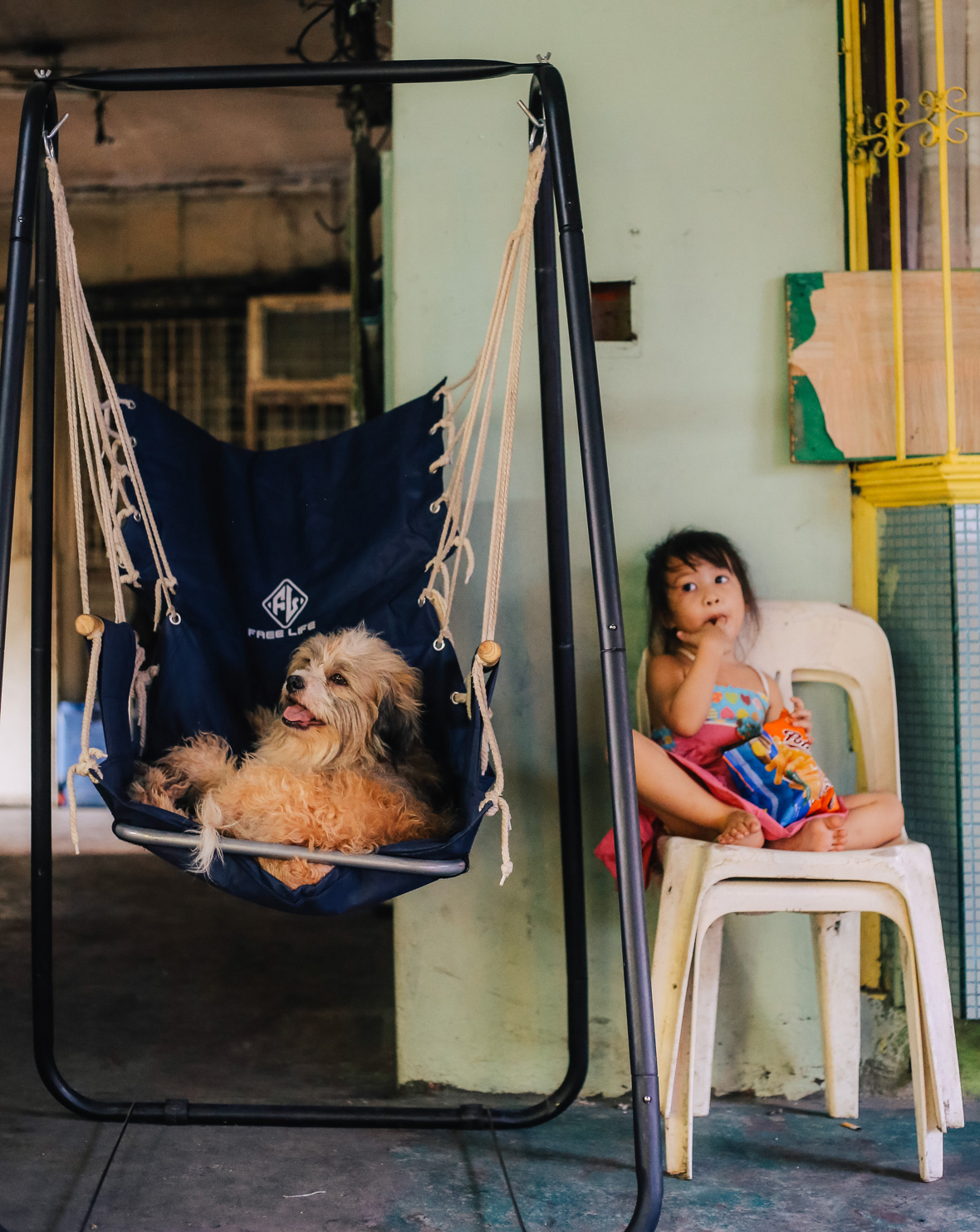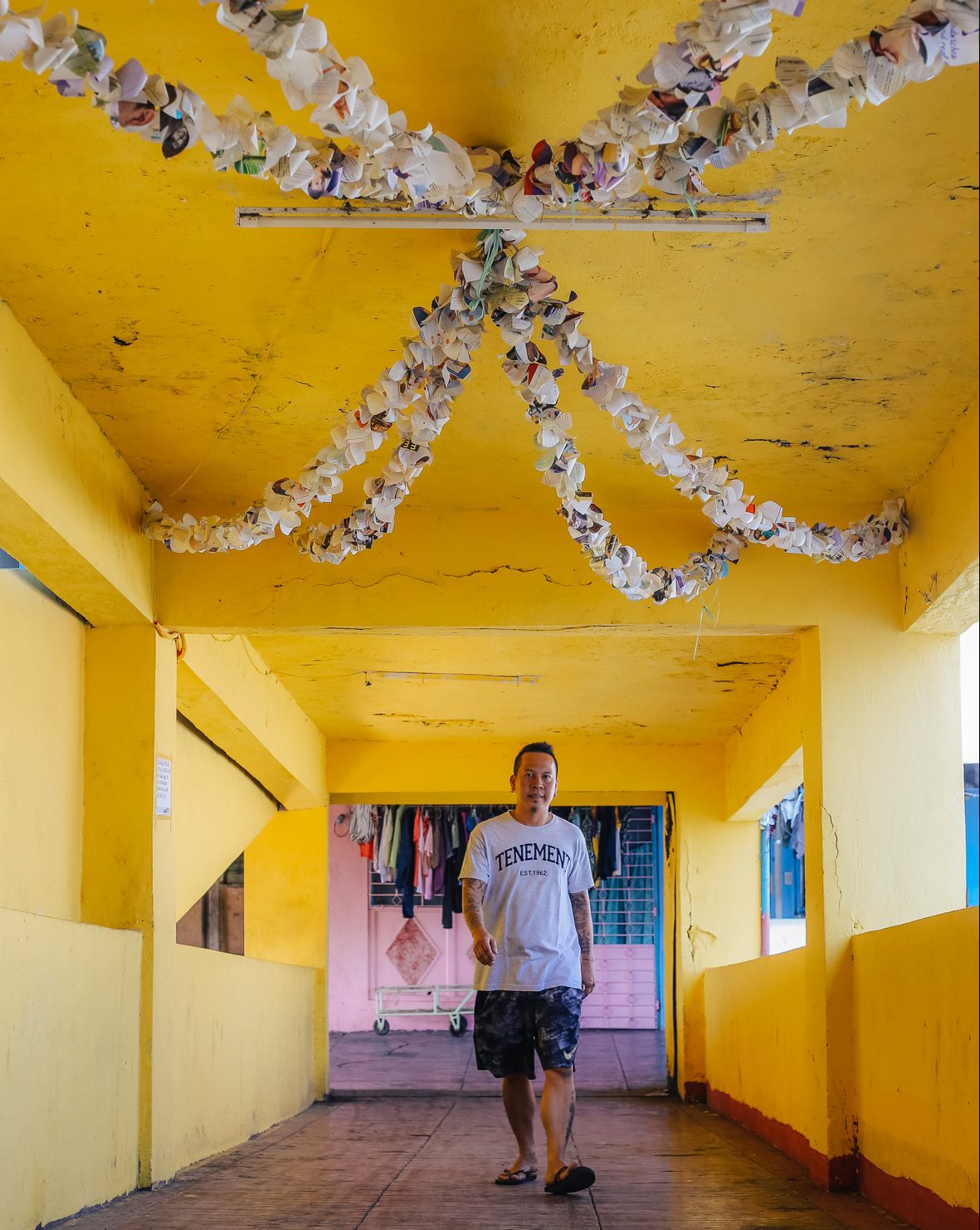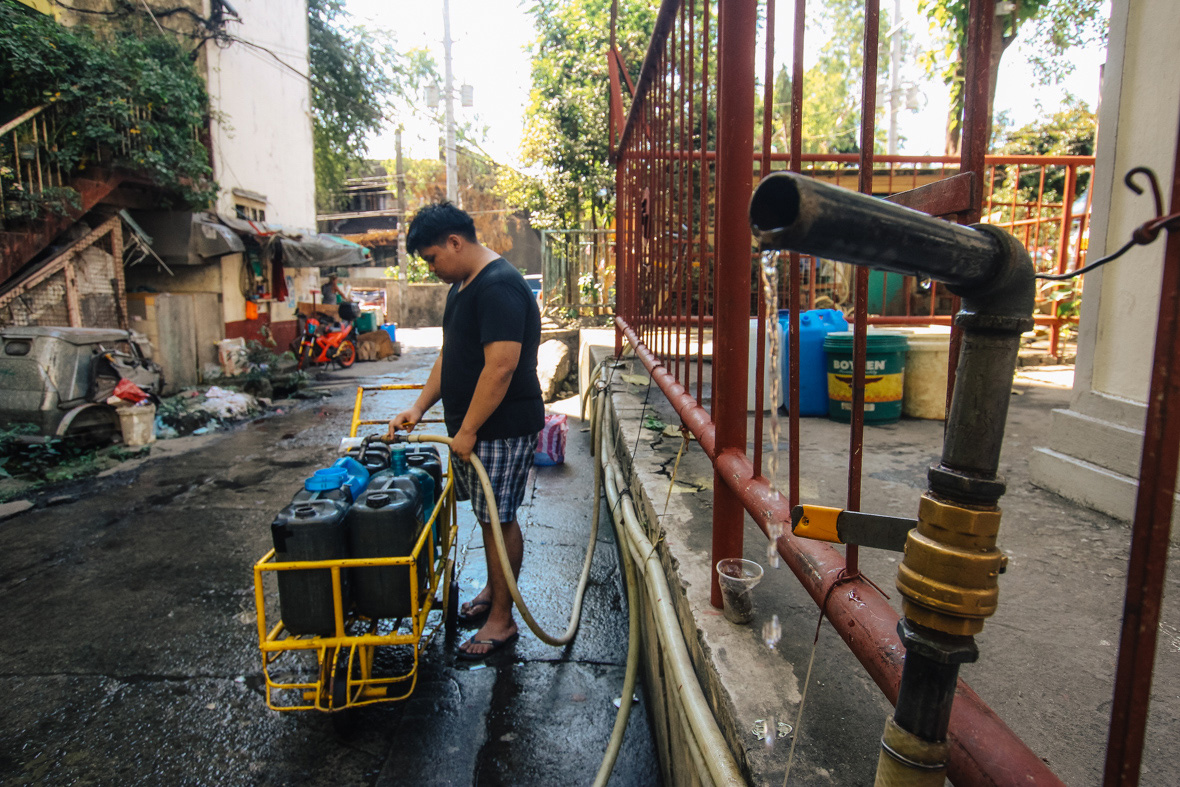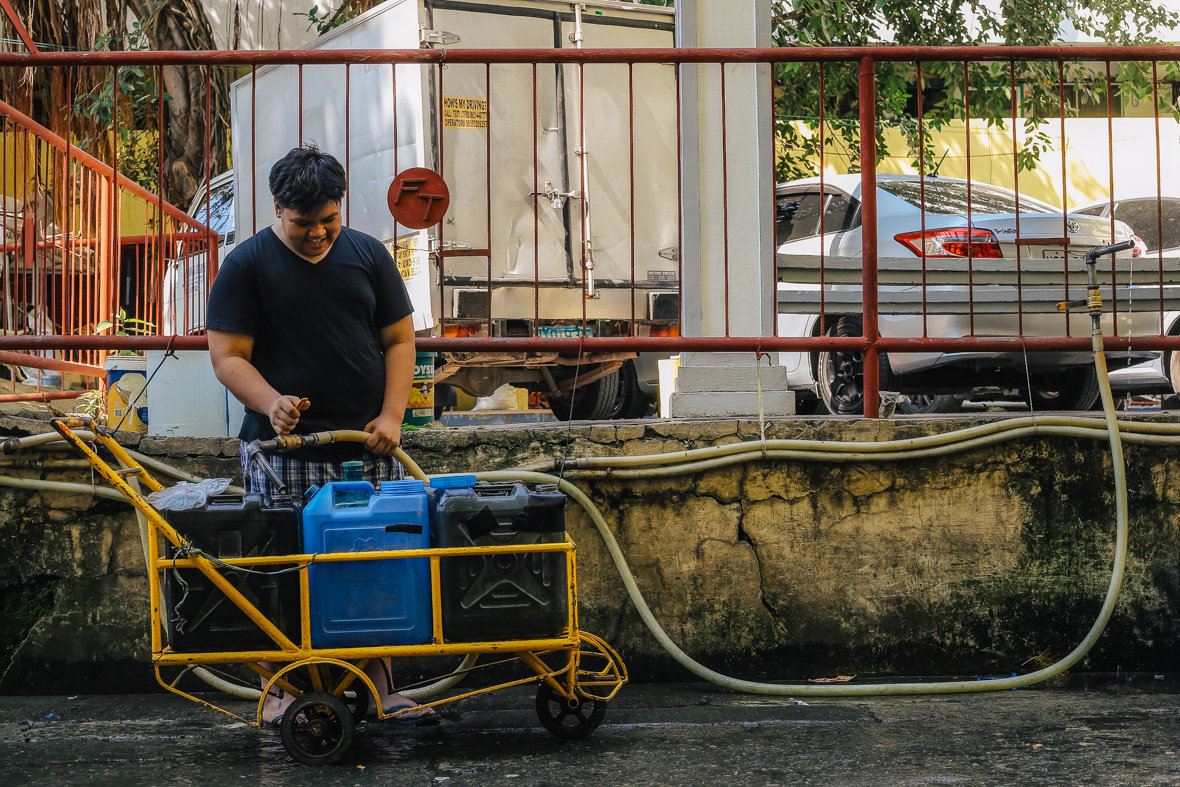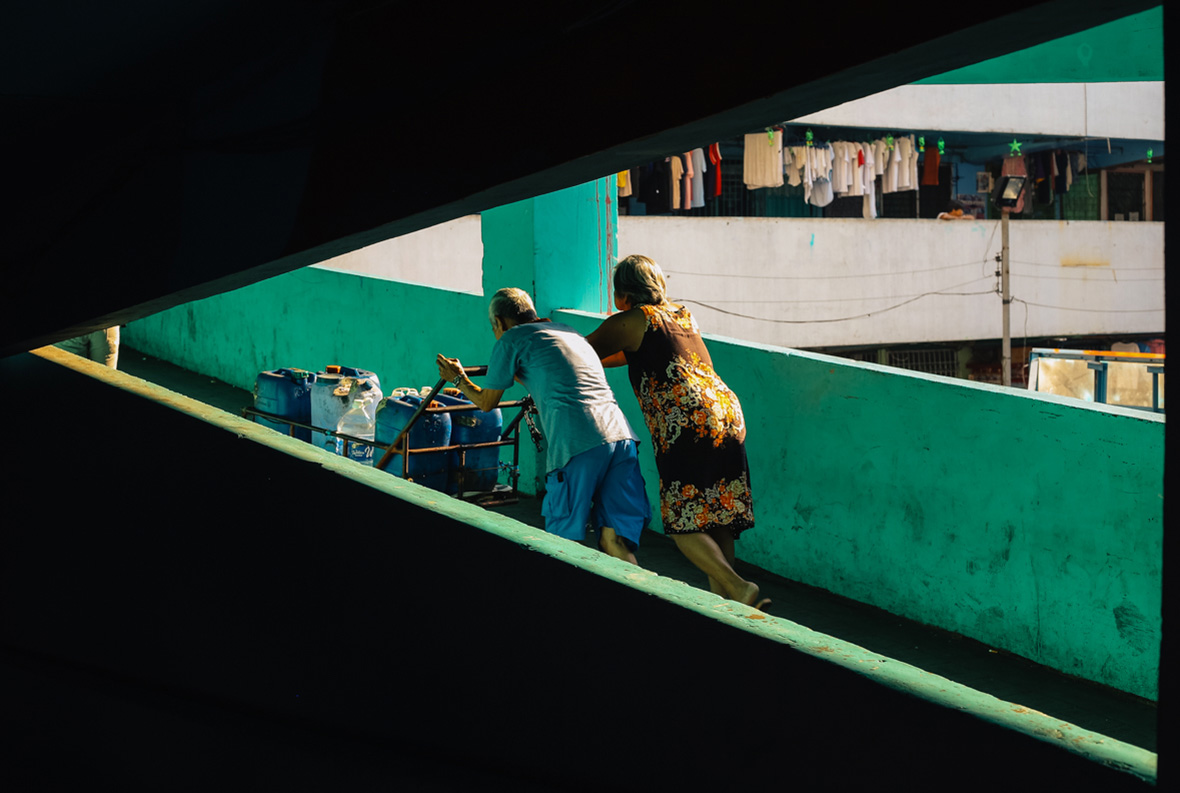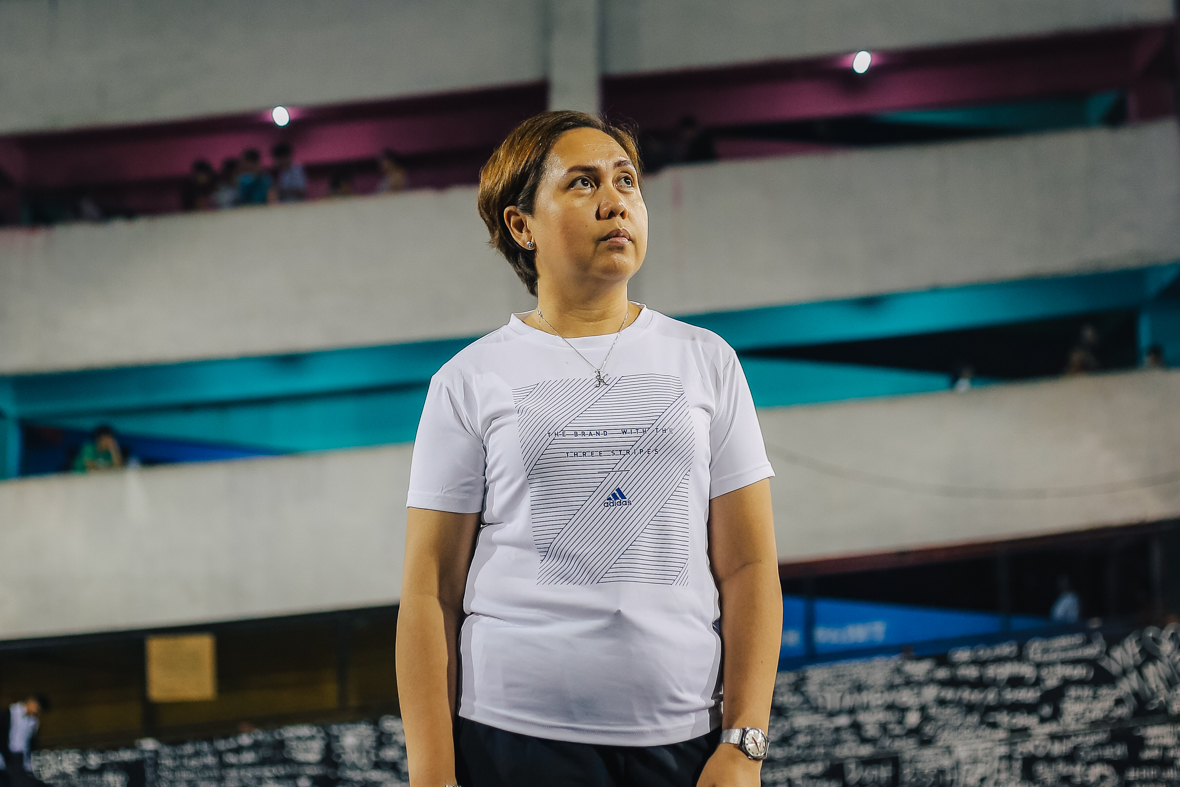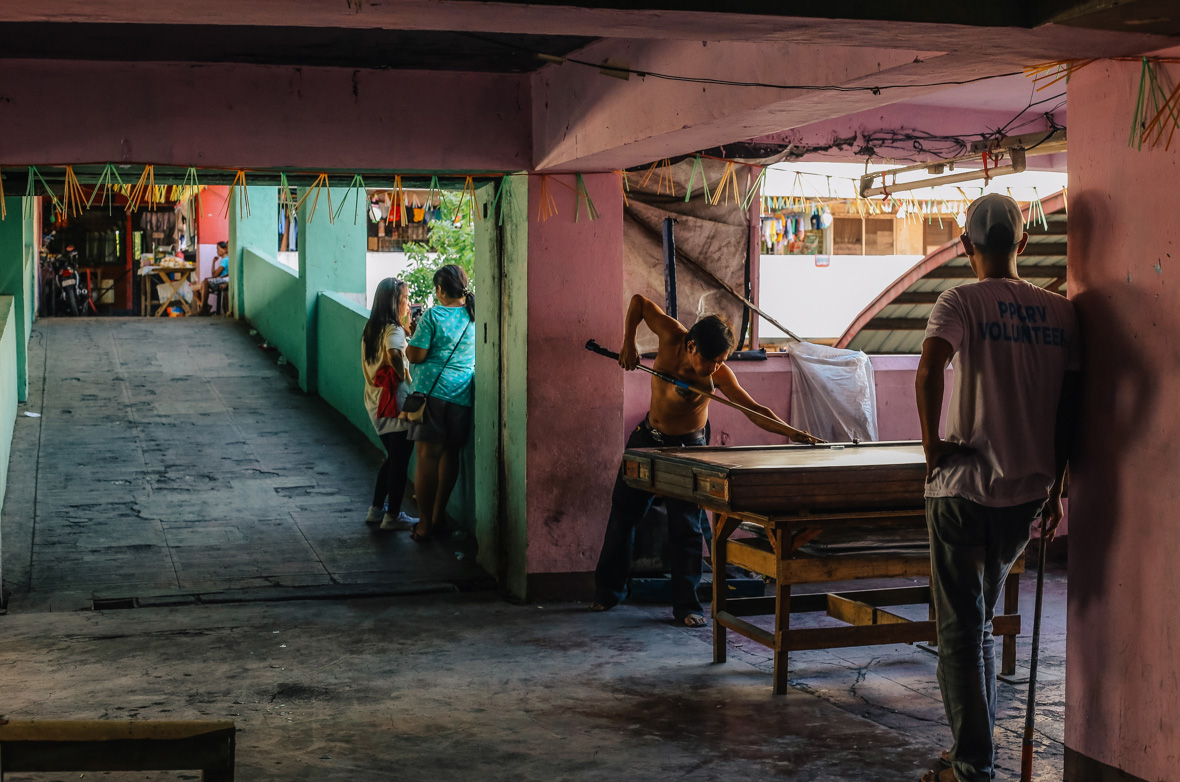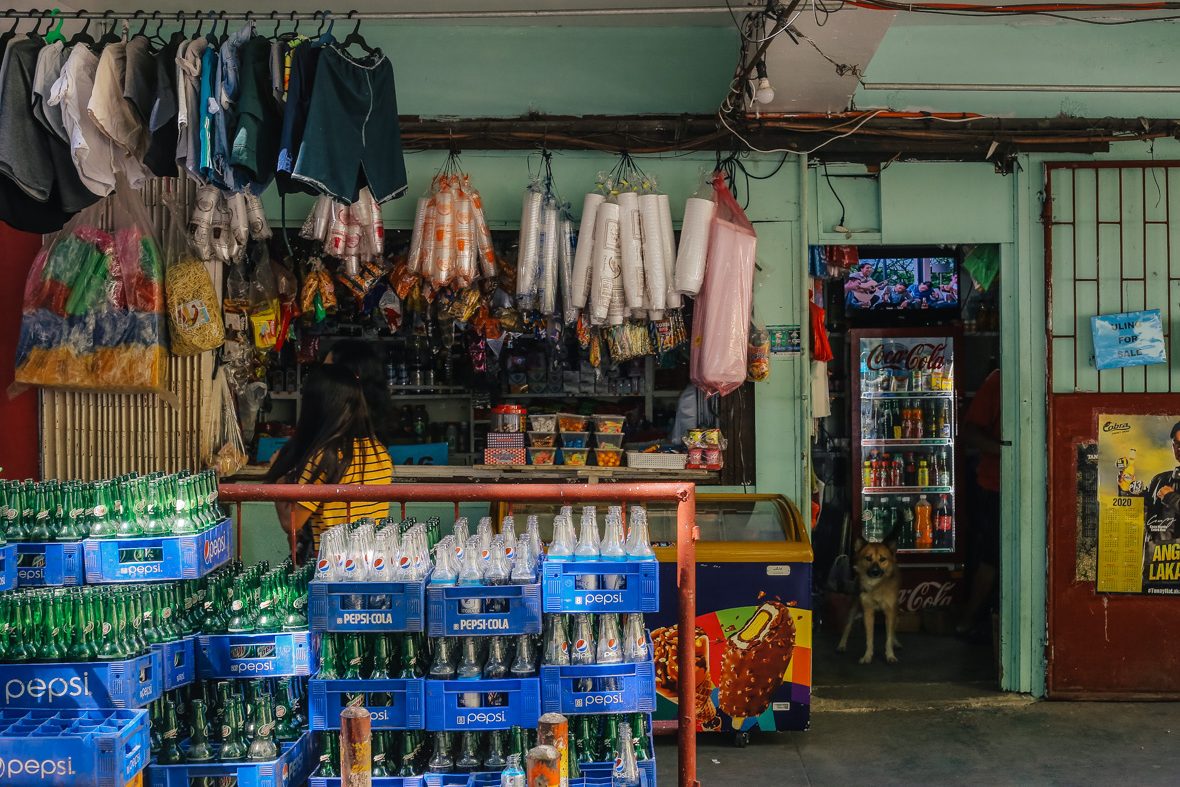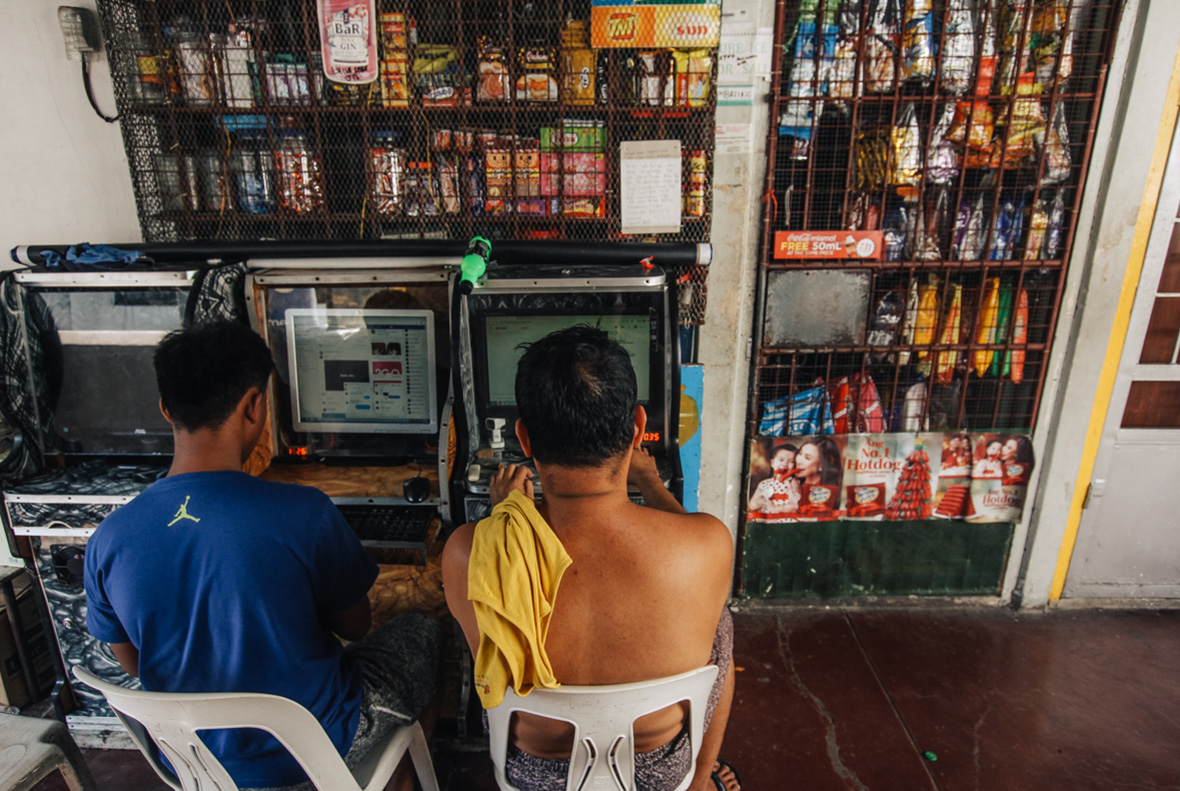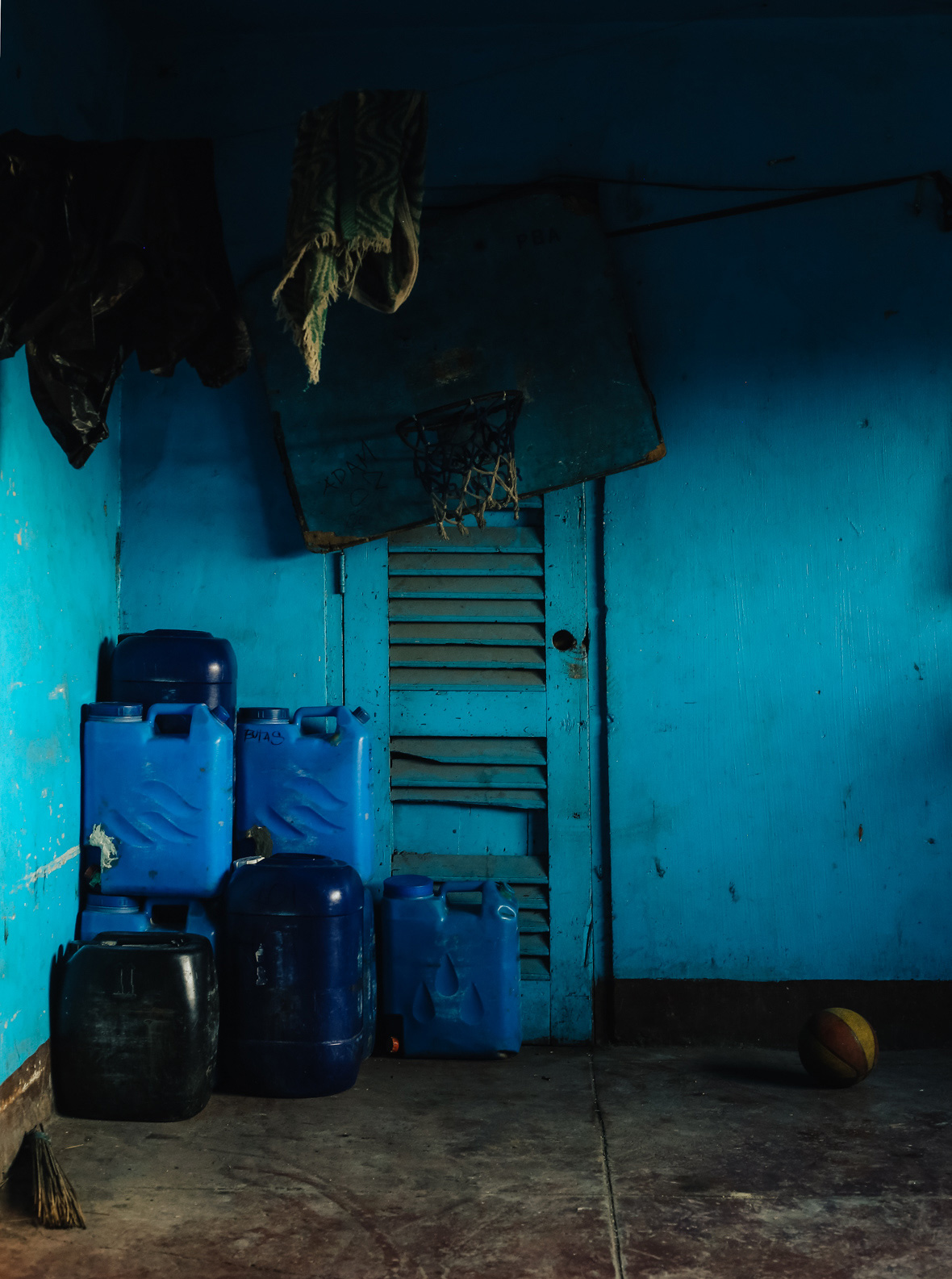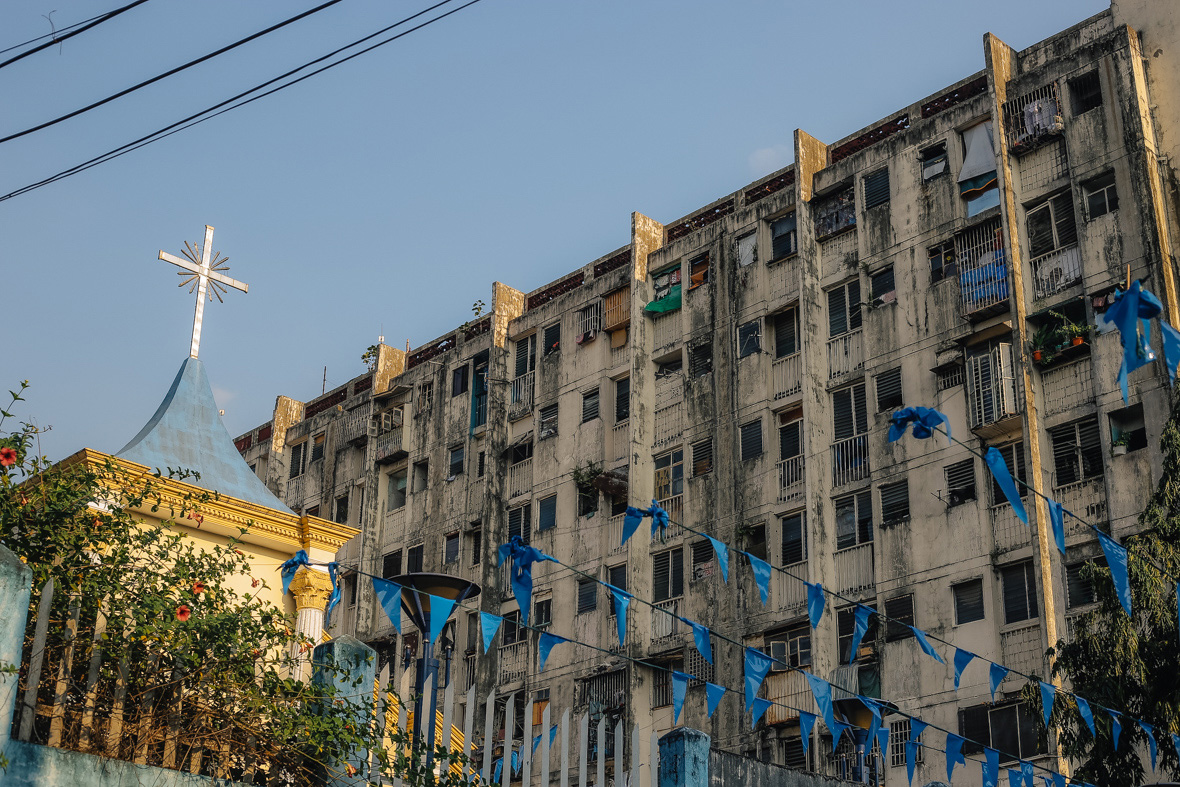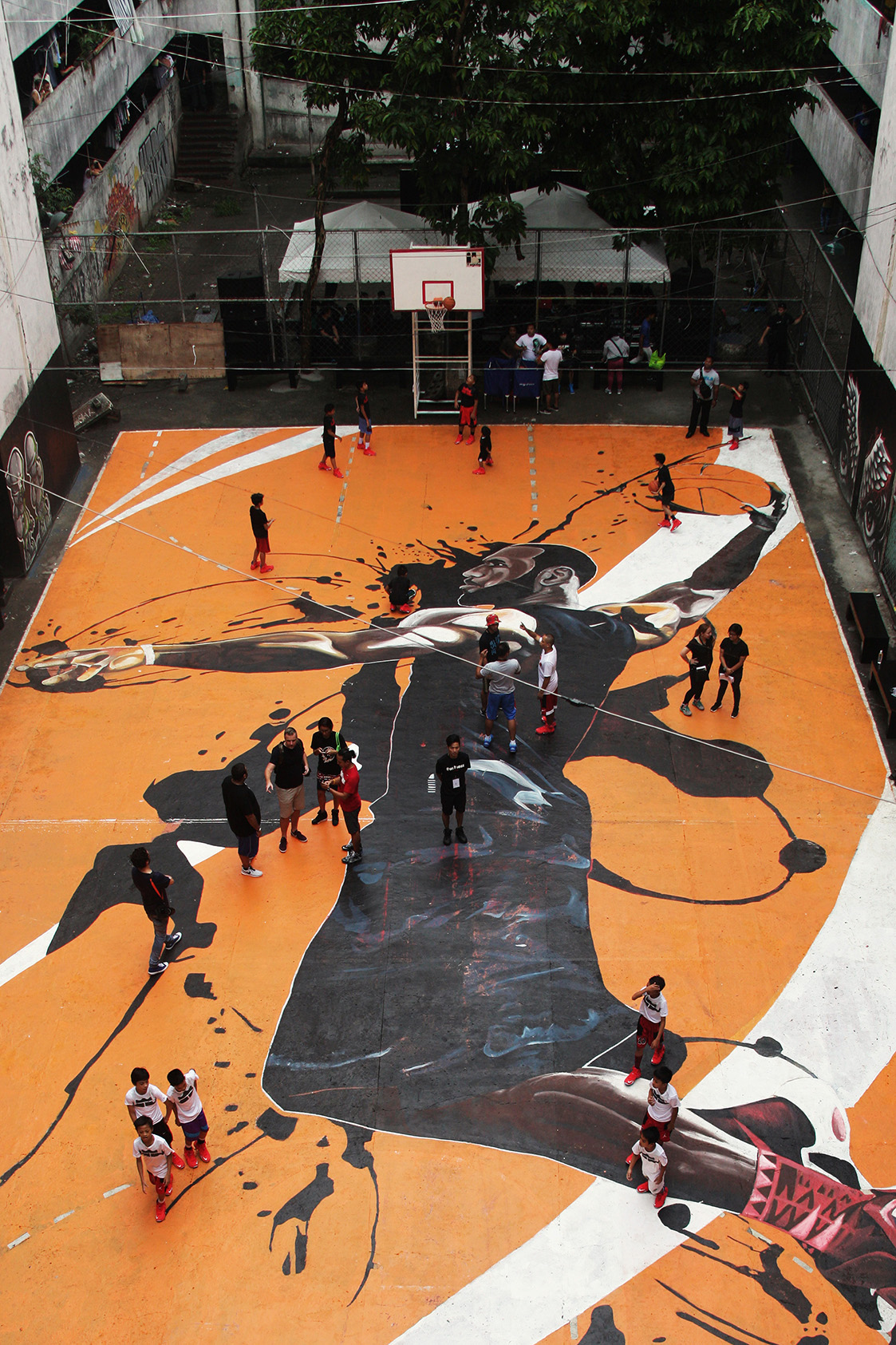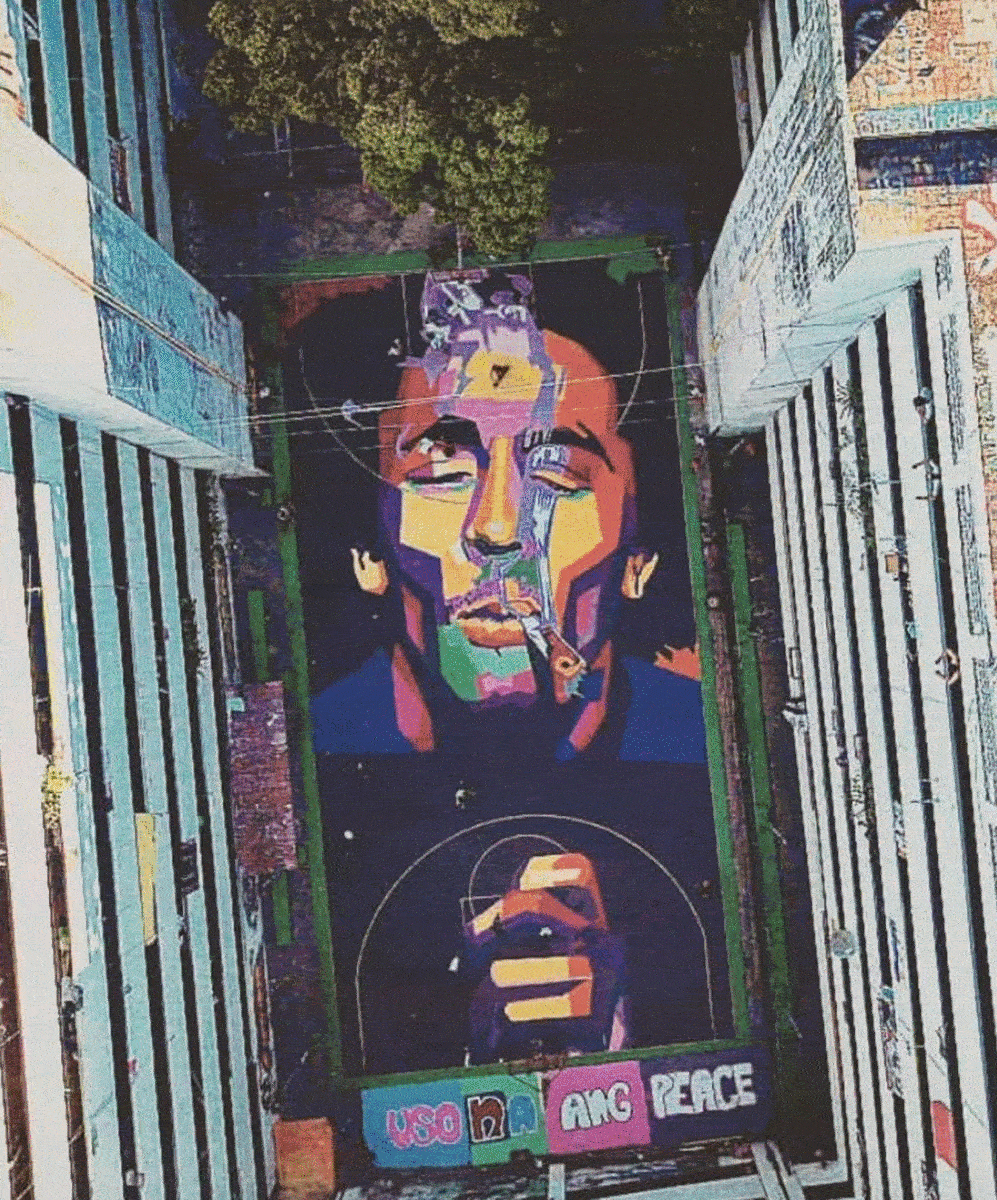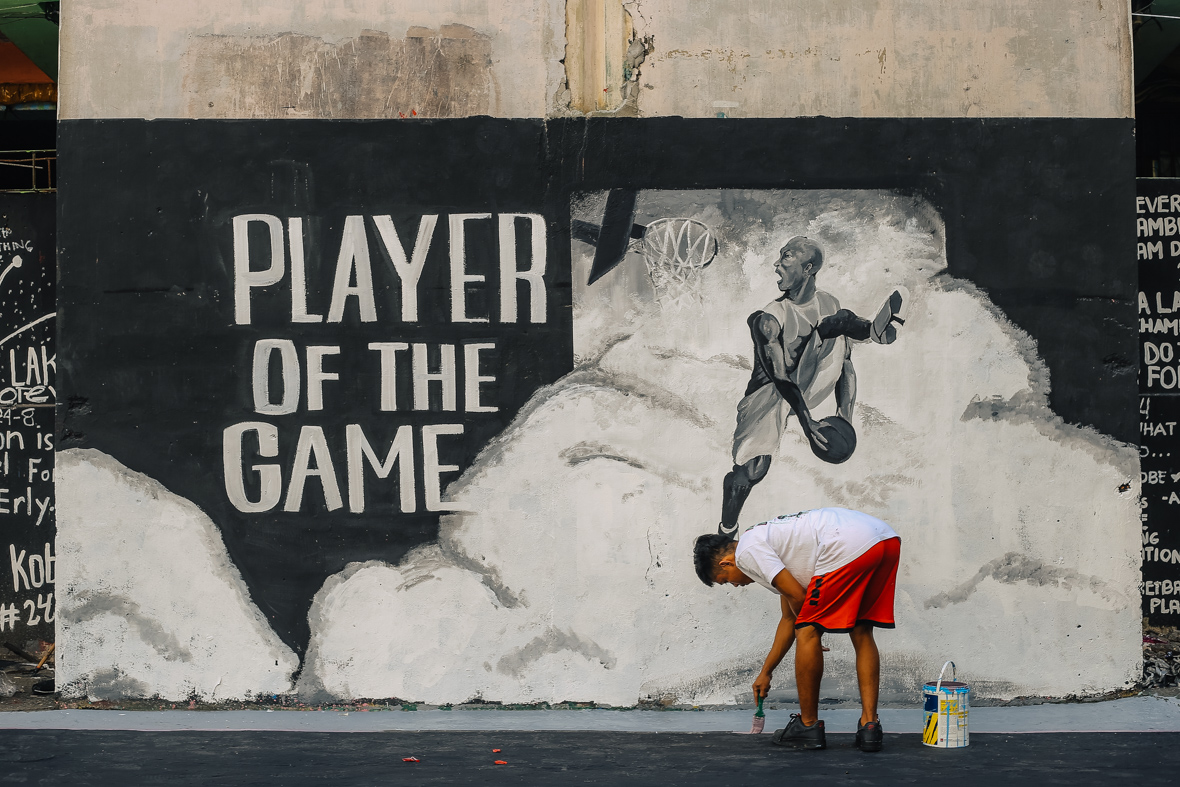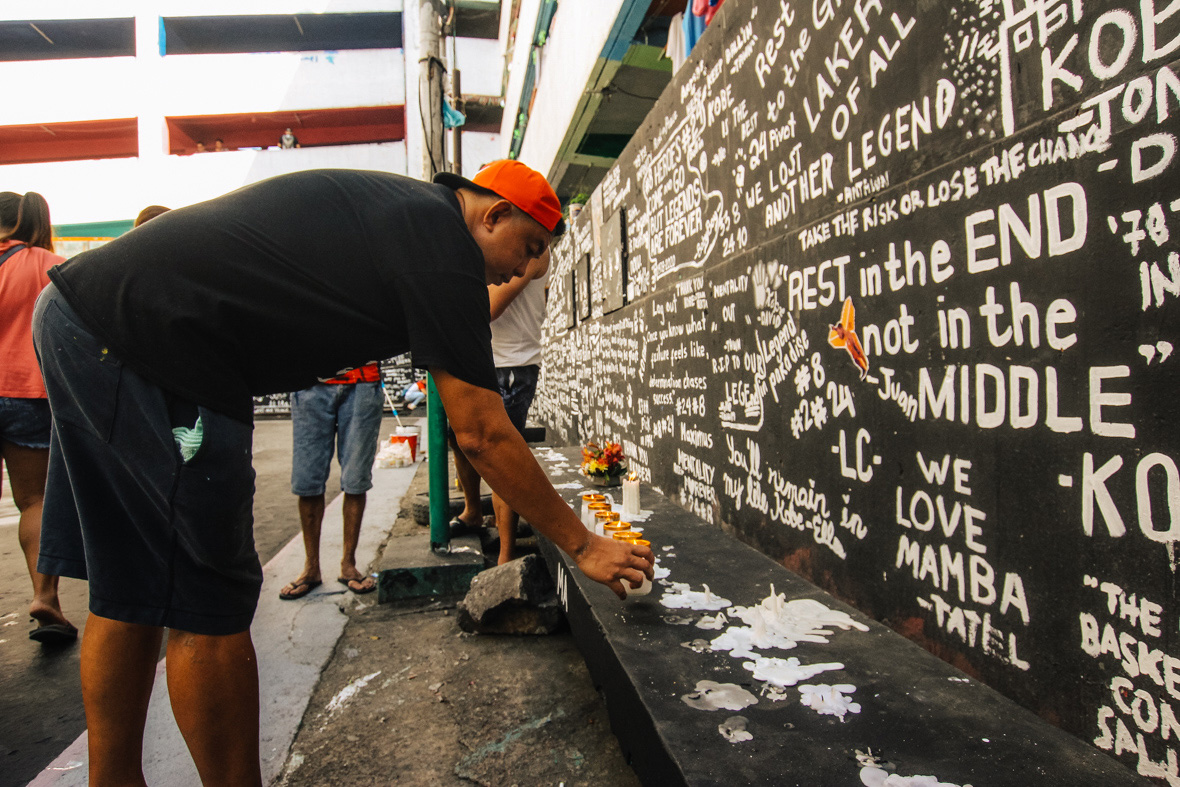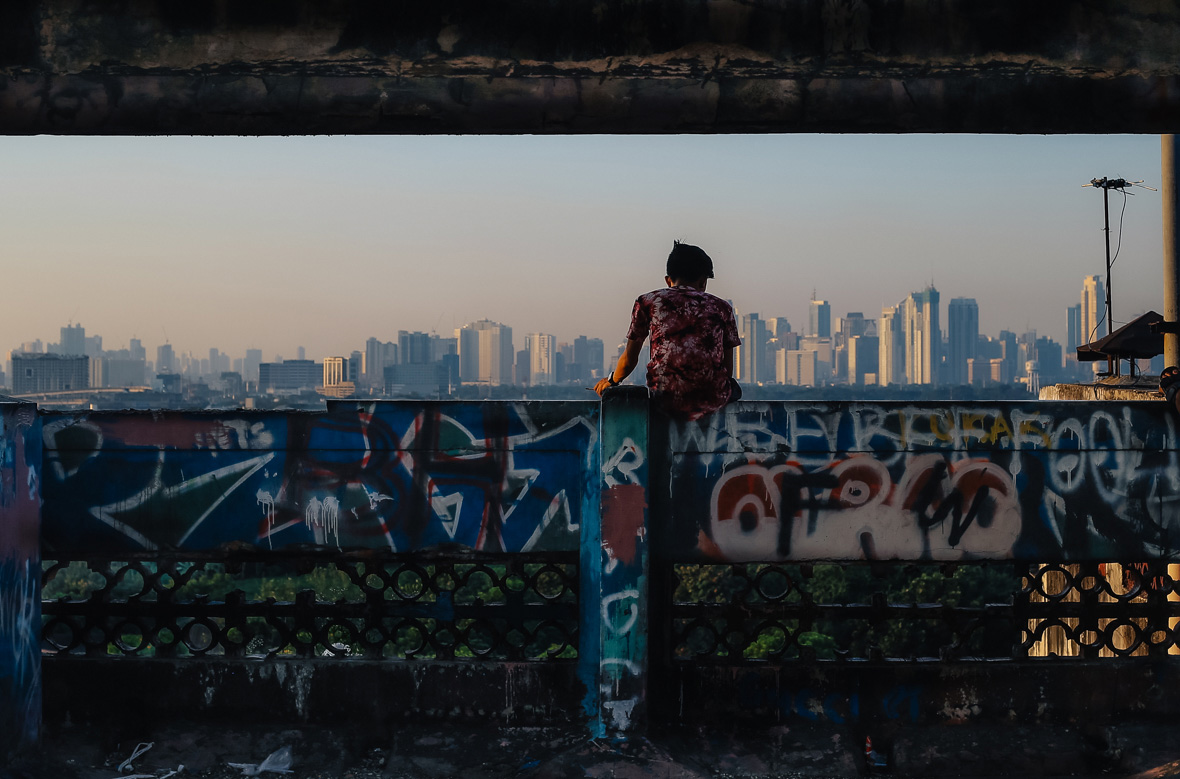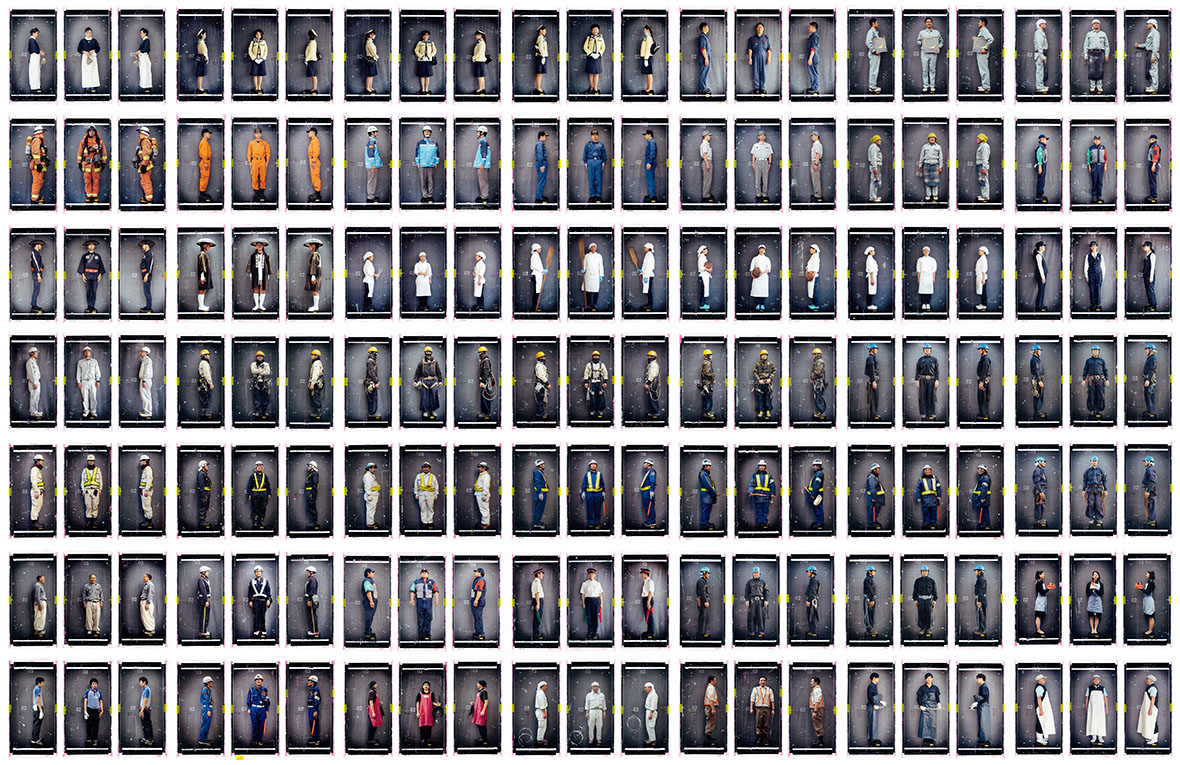
Japan, as one of the most successful capitalist societies in Asia, is a country whose prosperity can be attributed to its working class. According to data from Japan’s National Bureau of Statics, craftsmen, miners, factory workers, and construction workers are the majority of the country’s workforce. At 19.31 million people, these sectors account for 30.1% of the country’s total-employed persons over the age of 15. These workers are the foundation of Japan’s economic growth, but they’re often underappreciated.
In the photo series Hatarakimono, creative duo K-narf&Shoko pays respect to the working class of their country with a collection of powerful portraits that document and celebrate these overlooked occupations.
当“打工人”已经成为又一个过气的热搜词时,与其在调侃中消解它,不如在一张张安静客观的照片里赋予它尊严。
日本,作为一个亚洲相对成熟的资本主义国家,也是一个靠“工薪族”发展起来的经济体,据日本国家统计局最新数据显示, “工匠、采矿、制造和建筑工人和劳工”是最大的群体,有 1931 万人,占日本 15 岁及以上就业人数的 30.1%,而“专业技工”和“服务行业人员”也名列前茅。这一批人为日本经济金字塔构筑了坚实的基础。
来自日法两国的艺术家组合 K-NARF&SHOKO,把镜头对准了日本的这一批领工薪的打工人,服务员、建筑工、交通协管员……像档案中留存影像资料那样,给这些人们拍下了“工装照”——《Hatarakimono》。
Prior to meeting his now-wife Shoko Yamaguchi, Parisian-born artist Frank Le Petit (a.k.a K-narf) was already an established name in the fine art photography world for over 15 years. However, after becoming a couple in 2014 and establishing K-Narf&Shoko Studio in 2016, Le Petit’s work found further depth and sharper focus. “She helped my projects so much,” he says. “She scaled them up to levels that I would not be able to reach on my own because she’s very much into the logistics of things and project management while I’m more into coming up with the initial concepts and artworks. We’re always exchanging ideas about how the project can be executed.”
When Le Petit had the idea to shoot a portrait project in Japan, the two settled on the idea of pointing his lens at the country’s blue-collar and pink-collar workers, people that they admired the most in the country. “It’s these people who make Japan the country what it is,” Le Petit says.
来自法国的 Frank Le Petit(又名 K-Narf) 在遇见 Shoko Yamaguchi 前,已经是一个全职 15 年的摄影艺术家。但 Shoko Yamaguchi 的加入,让原本 K-NARF 的个人摄影变成了更大体量、更为宏观的项目,“Shoko 给我的项目带来了意想不到的影响力。我提出最初的概念,她擅长逻辑分析、项目管理和制作。”于是,在 K-NARF 决定拍摄人物肖像照的时候,他们俩俩商议,最终选择了自己在日常生活中最欣赏的人:日本劳动者——“是他们让日本之所以成为日本”,K-NARF 如是说。他们想记录平凡到极致的人,并为其创造一份特别的视觉档案。
The project wasn’t all smooth sailing though. “Most of the time, the workers were happy to be photographed,” Le Petit says. “But almost all of them asked us to get authorization from their company.”
This added a considerable amount of difficulty to the series. They had to find the right person to speak to, go through the necessary bureaucratic hurdles, and hope they’d be allowed to shoot. The actual shooting had to happen within a tight timeframe as well. Often, they only had five minutes to shoot a worker before they had to return to their post. “We shot in natural light right there on their worksite using a portable photo studio made up of a fabric background and folding chairs,” Le Petit says.
但执行起来,他们发现,原本在日本街头四处可见的劳动者,要拍摄他们却并不容易。
“大多数时候,工人们自己都很乐意被拍摄,但几乎所有的工人都要求我们得到他们公司的授权。”K-NARF 说道,这就让他们的项目变得非常困难。因为在日本,公司规模往往都非常巨大、流程又特别繁琐,所以,他们必须在那些工人所处的单位里找到合适的“牵线人”,让他们同意为一个艺术项目拍摄借用一两个公司的员工。
“而当我们成功获得授权后,就必须迅速组织拍摄工作了。我们自带便携式摄影棚,布艺背景和可折叠凳子,因为我们需要在工人的工作现场、用自然光拍摄。”K-NARF 说,项目中的每一张肖像都来之不易,拍摄前的 5 分钟工人们都在工作,拍摄后 5 分钟又都回到了工作岗位。
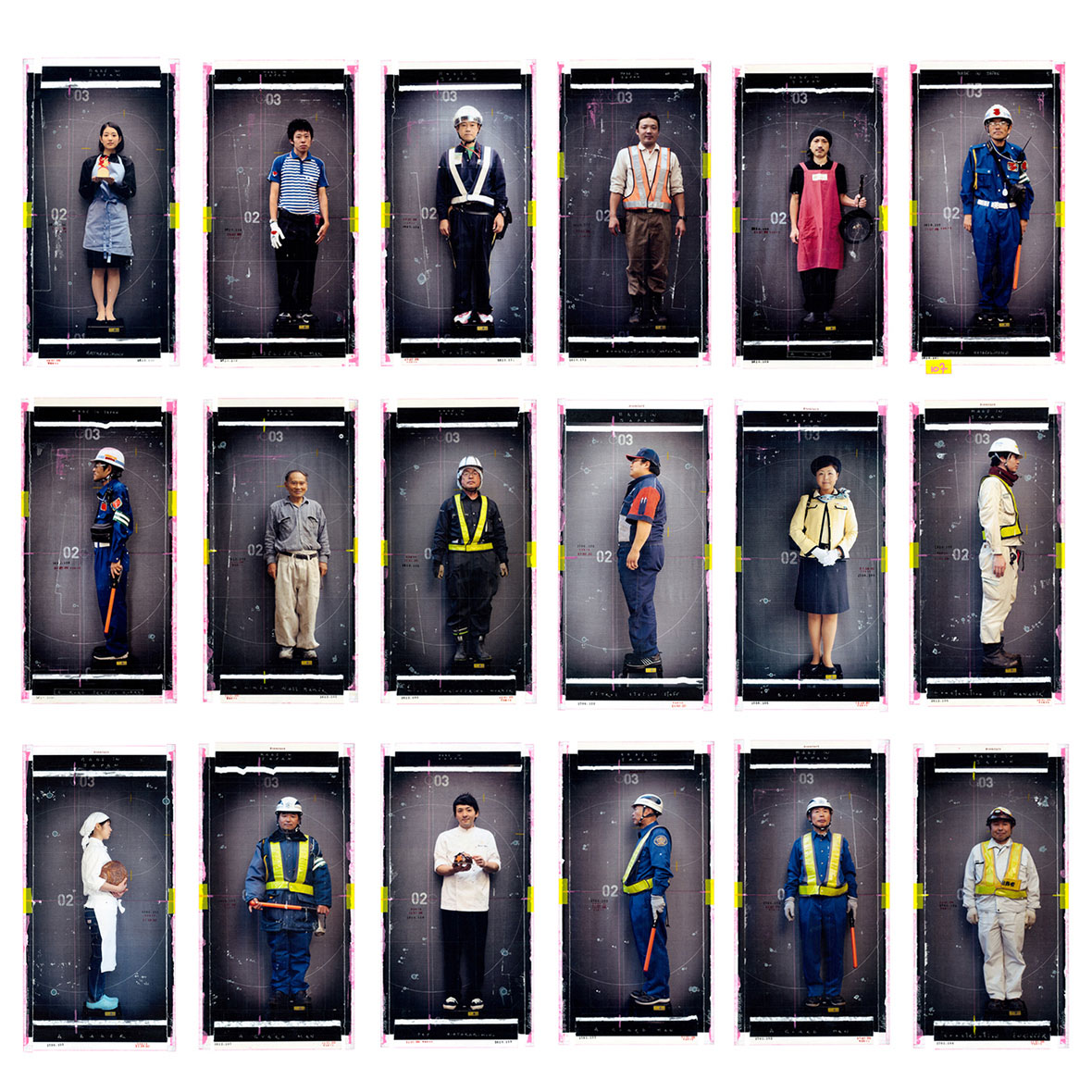
The individuals featured in Hatarakimono all appear in triptych form, with two side profiles and a front profile. While the series is primarily intended to document and celebrate these occupations, Le Petit’s full-body framing, which shows each workers’ uniforms in their entirety, also casts a light on the link between profession, public image, and identity.
The photos for a single individual can require upwards of eight hours to process, using a method that Le Petit invented called “tape-o-graphy,” which involves imprinting images onto scotch tape by attaching the adhesive onto fresh prints and ripping them off. The imperfections that result from the technique often add surprising textures and details, which is part of the technique’s charm for Le Petit. “For me, photography is not just about taking photos,” he says. “It’s also about taking the time to process them and finding the right way of showing my images.
《Hatarakimono》里的每张人像都是三联照(正面和两侧面),K-NARF 说他们之所以这么做,也是为了记录他们的制服,并去找寻工作所给人带来的身份意义。每人的“三联肖像”,在后期 K-NARF&SHOKO 都需要经过 8 个小时来处理细节。他发明了一种非常单一的手工处理数码摄影的方式,叫做“Tape-o-graphy”:先打印照片,然后涂上胶粘剂,再将其扯下来,观看其痕迹对相片的影响。这样的全手工制作过程,也给最终呈现的作品带来种种意想不到的繁复细节。“这不仅仅是拍摄一系列符合美学定义的相片,更是以找到合适的方式去呈现人物。”K-NARF 说。
虽然没有采访过这些工人,也没有和他们建立起社会关系,但 K-NARF&SHOKO 两个人却被这些日本工人的精神深深打动了,“我们花了两年时间全职拍摄了一百多名工人,他们每个人都努力工作,并热爱自己的工作、也尊重彼此的工作。这是日本文化的一部分,他们有一个特别的词来形容这些工人,这是任何其他语言都无法翻译的。这就是‘Hatarakimono’。” K-NARF 说。
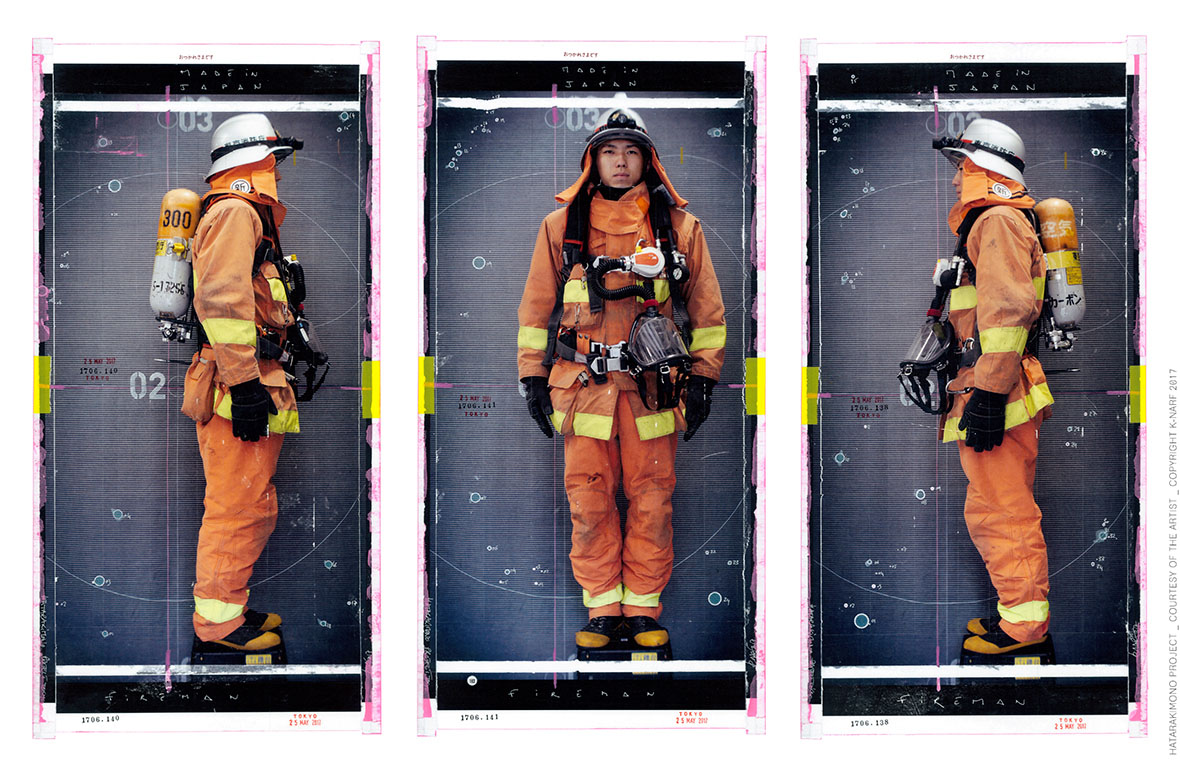
Although the working class has been a vital pillar of Japan’s booming economy, an aging population might spell trouble in future years. The country’s working-age population, classified as individuals between the ages of 15 – 64, has been on a steep decline since 1995, according to the Japan Times. Between 1995 and 2018, it’s dropped from a peak of 87.26 million to 77.45 million, a decline of nearly 10%. By 2030, it’s estimated that this number will drop down to 68.75 million, and by 2060, there may only be 48 million working-age individuals.
Le Petit and Yamaguchi foresee the declining workforce being a major problem for the country, and their idea of exhibiting the full set of images from Hatarakimono in 2042 is planned with that forecast in mind. “By that point, the world will be a much different place,” Le Petit says.
不可否认,虽然“Hatarakimono”撑起了日本工业经济的一片广阔天地,但如今随着日本人口老龄化不断攀升,种种社会劳工问题也日益凸显,据日本时报的报道,在日本主要劳动年龄人口(15 岁- 64 岁)从 1995 年的 8726 万峰值下降到 2018 年的 7745 万,占比下降了将近 10%,创下了历史新低。到 2030 年,这一数字将进一步下降到 6875 万,到 2060 年将可能仅有 4800 万适龄劳动人口。
K-NARF&SHOKO 他们看到了这可能即将发生的剧变,他们二人为此项目也筹备了一个展览,但却是在开启拍摄的25 年之后,也就是在 2042 年,“因为那时候世界会变得大不一样。”K-NARF 说道。
For the 2042 exhibition, Yamaguchi and Le Petit have already begun preparations. “We created an archival crate to preserve the 102 original tape-o-graphic portraits along with full documentation of how we made this project,” Le Petit says. “We’ve also selected the museums and galleries we’d like to showcase the project at and reached out to the relevant directors. We’re still waiting for confirmation, but we’re not in a hurry.”
With the amount of love and work the duo has poured into the project, those who’ve seen the series have showered them with nothing but praise. “We really enjoyed this project, so we’ve worked super hard,” Le Petit smiles. “Some people have told us that we were also hatarakimono.”
为了这个展览,他们已经提前准备好了所有内容,“我们制作了一个档案盒,不仅保存了 102 张原始的磁带画像,还保存了所有的文件,以展示我们如何完成这个项目。我们也为自己选择了 2042 年举办巡回展览的博物馆,并已经给他们的负责人发了通知信。不过来日方长,还大可不必着急。”
K-NARF 笑道,“我们一直在超级努力地完成这个我们非常喜欢的项目……很多人告诉我们,我们也算得上是‘Hatarakimono’呢。”
Like our stories? Follow us on Facebook and Instagram.
Website: knarfart.com
Instagram: @knarf_kyoto
Contributor: Chen Yuan


